Mechanism
How to submit an article:
- Registered users can submit any published journal article that has a unique DOI (Digital Object Identifier) name or link to Research Hub.
- For example, you can paste the full DOI link:
https://doi.org/10.1109/5.771073or just the DOI name:10.1109/5.771073into the field above and click submit. - The person who is first to submit a valid article to Research Hub will forever be credited for it, and every article submission earns you +6 Research Points.
Related Topics
Published research studies are articles that present the findings of original research that has undergone a peer-review process and has been made publicly available in scholarly journals, books or other media.

Exploring the mechanism of Danggui Sini Decoction in the treatment of myocardial infarction: A systematic review, network pharmacology, and molecular docking
2024 Oct 18 Medicine Li Z, Liu S, Zhang R, Li B
Network Pharmacology Myocardial Infarction Dang Gui Si Ni DecoctionThe Danggui Sini Decoction, a Traditional Chinese Medicine, may prevent myocardial infarction by positively influencing cell proliferation, inflammatory responses, and aging processes.
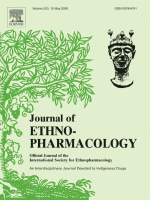
Potential Mechanisms of Guizhi Fuling Wan in Treating Endometriosis: An Analysis Based on TCMSP and DisGeNET Databases
2024 Jul Journal of Ethnopharmacology Yee JL, Huang CY, Yu YC, Huang SJ
Systematic Review Endometriosis Gui Zhi Fu Ling WanGuizhi Fuling Wan, a traditional Chinese herbal formula, can inhibit endometriosis growth and enhance the effects of western medicines used to treat the condition.

Physiological Mechanisms by Which the Functional Ingredients in Beer Impact Human Health
2024 Jun 29 Molecules Zeng Y, Ahmed HGMD, Li X, Yang L, Pu X, Yang X, et al.
Review Article Melatonin Barley BeerBeer, specifically low-purine and high-active ingredient beer such as ginger, ginseng, and coix-lily, possess functional ingredients contributing to controlling chronic human diseases.

Uncovering the pharmacological mechanism of Shou Tai Wan on recurrent spontaneous abortion: A integrated pharmacology strategy-based research
2024 Apr Journal of Ethnopharmacology Yang K, Zeng L, Li Y, Wu L, Xiang W, Wu X, et al.
Shou Tai Wan (STW) was found to regulate PI3K/AKT, MAPK, and FoxO signaling pathways, and in animal experiments with an RSA mouse model, STW reduced embryo absorption rates, balanced Th1/Th2 cytokine expression, and demonstrated immunomodulatory effects by up-regulating the phosphorylation levels of STAT3 and STAT6 proteins and down-regulating STAT1 protein in the STAT signaling pathway. Additionally, STW up-regulated phosphorylation levels of proteins in the MAPK signaling pathway, and increased expression levels of ERK1/2 mRNA and proteins, suggesting potential therapeutic effects in treating RSA through interference with these signaling pathways.
Experimental Study Animal Study Recurrent Spontaneous Abortion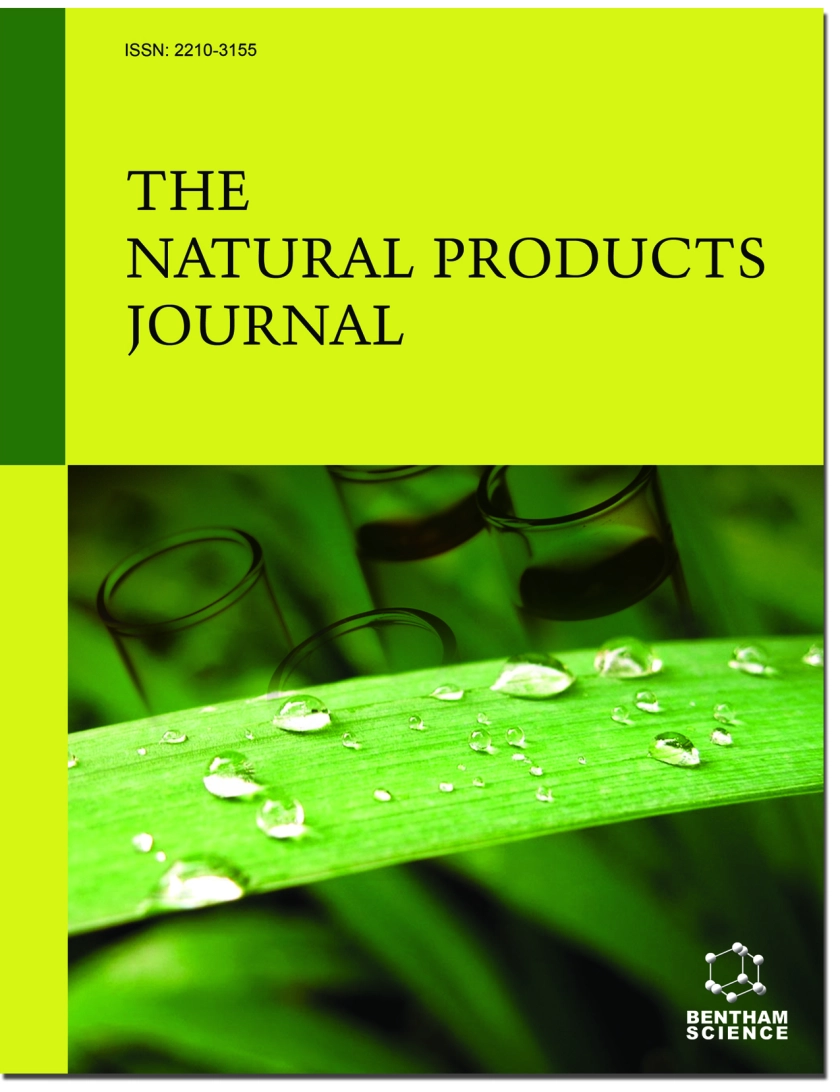
Pumpkin Seeds (Cucurbita spp.) as a Nutraceutical Used In Various Lifestyle Disorders
2024 Feb The Natural Products Journal Wal A, Singh MR, Gupta A, Rathore S, Rout RR, Wal P
Review Article Antioxidant Cardiovascular Disease Depression Anti-ParasitePumpkin seeds are recognised for their medicinal, nutritional, and cosmetic benefits, including anti-diabetic, heart disease prevention, anti-cancer, and antioxidant qualities.
Research insights are moderated by the Research Hub team and offer an at-a-glance overview of interesting research findings.

2024 Medicine
The Danggui Sini Decoction, a Traditional Chinese Medicine, may prevent myocardial infarction by positively influencing cell proliferation, inflammatory responses, and aging processes.
Network Pharmacology Dang Gui Si Ni Decoction Myocardial Infarction
Exploring the mechanism of Danggui Sini Decoction in the treatment of myocardial infarction: A systematic review, network pharmacology, and molecular docking
Li Z, Liu S, Zhang R, Li B

2024 Journal of Ethnopharmacology
Guizhi Fuling Wan, a traditional Chinese herbal formula, can inhibit endometriosis growth and enhance the effects of western medicines used to treat the condition.
Systematic Review Endometriosis Gui Zhi Fu Ling Wan
Potential Mechanisms of Guizhi Fuling Wan in Treating Endometriosis: An Analysis Based on TCMSP and DisGeNET Databases
Yee JL, Huang CY, Yu YC, Huang SJ

2024 Molecules
Beer, specifically low-purine and high-active ingredient beer such as ginger, ginseng, and coix-lily, possess functional ingredients contributing to controlling chronic human diseases.
Review Article Barley Beer Melatonin
Physiological Mechanisms by Which the Functional Ingredients in Beer Impact Human Health
Zeng Y, Ahmed HGMD, Li X, Yang L, Pu X, Yang X, et al.
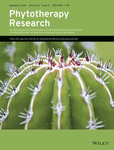
2024 Phytotherapy Research
Noni fruit and its compounds demonstrate significant potential in cancer therapy by inducing apoptosis, arresting cell cycle, inhibiting angiogenesis, and modulating immune system.
Systematic Review Anticancer Noni
Anticancer and chemopreventive potential of Morinda citrifolia L. bioactive compounds: A comprehensive update
Kitic D, Miladinovic B, Randjelovic M, Szopa A, Seidel V, Prasher P, et al.

2024 The Natural Products Journal
Pumpkin seeds are recognised for their medicinal, nutritional, and cosmetic benefits, including anti-diabetic, heart disease prevention, anti-cancer, and antioxidant qualities.
Review Article Anti-Parasite Antioxidant Cardiovascular Disease Depression
Pumpkin Seeds (Cucurbita spp.) as a Nutraceutical Used In Various Lifestyle
Disorders
Wal A, Singh MR, Gupta A, Rathore S, Rout RR, Wal P
Review Articles
Review articles summarise and critically evaluate the current state of research on a specific topic or field by synthesising multiple primary research studies.

Potential Mechanisms of Guizhi Fuling Wan in Treating Endometriosis: An Analysis Based on TCMSP and DisGeNET Databases
2024 Jul Journal of Ethnopharmacology Yee JL, Huang CY, Yu YC, Huang SJ
Systematic Review Endometriosis Gui Zhi Fu Ling WanGuizhi Fuling Wan, a traditional Chinese herbal formula, can inhibit endometriosis growth and enhance the effects of western medicines used to treat the condition.

Physiological Mechanisms by Which the Functional Ingredients in Beer Impact Human Health
2024 Jun 29 Molecules Zeng Y, Ahmed HGMD, Li X, Yang L, Pu X, Yang X, et al.
Review Article Melatonin Barley BeerBeer, specifically low-purine and high-active ingredient beer such as ginger, ginseng, and coix-lily, possess functional ingredients contributing to controlling chronic human diseases.

Pumpkin Seeds (Cucurbita spp.) as a Nutraceutical Used In Various Lifestyle Disorders
2024 Feb The Natural Products Journal Wal A, Singh MR, Gupta A, Rathore S, Rout RR, Wal P
Review Article Antioxidant Cardiovascular Disease Depression Anti-ParasitePumpkin seeds are recognised for their medicinal, nutritional, and cosmetic benefits, including anti-diabetic, heart disease prevention, anti-cancer, and antioxidant qualities.

Anticancer and chemopreventive potential of Morinda citrifolia L. bioactive compounds: A comprehensive update
2024 Feb 15 Phytotherapy Research Kitic D, Miladinovic B, Randjelovic M, Szopa A, Seidel V, Prasher P, et al.
Systematic Review Anticancer NoniNoni fruit and its compounds demonstrate significant potential in cancer therapy by inducing apoptosis, arresting cell cycle, inhibiting angiogenesis, and modulating immune system.
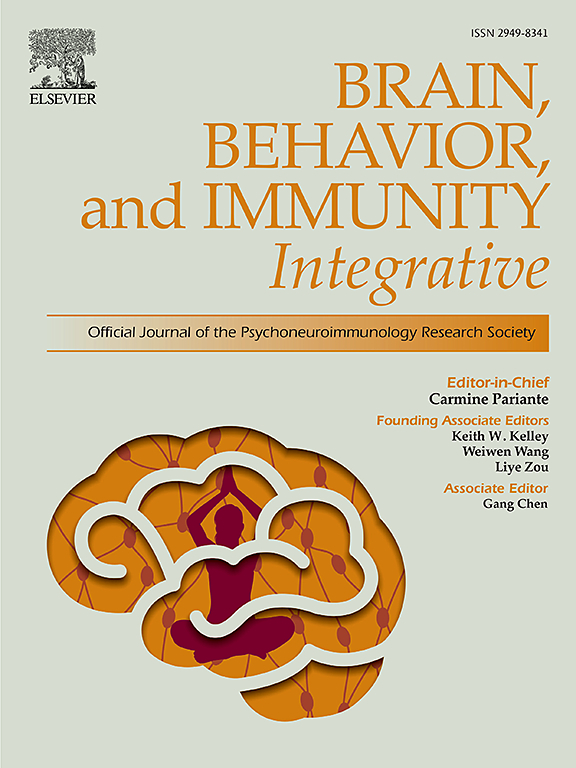
Traditional Chinese medicine research on attention deficit hyperactivity disorder: Theory, treatment and mechanism
2024 Jan Brain Behavior and Immunity Integrative Zhou C, Wang J
Traditional Chinese Medicine offers a holistic approach to attention deficit hyperactivity disorder (ADHD) treatment, focusing on yin-yang imbalances, pattern identification, and interventions encompassing both pharmacological and non-pharmacological methods, with potential modulation of neuroimmunological factors and neurotransmitters.
Review Article ADHDClinical Trials
Clinical trials are research studies that involve people and are conducted to evaluate the safety and efficacy of new treatments or interventions, such as drugs, medical devices, or behavioural therapies.
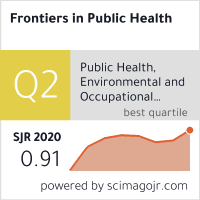
Acupuncture for comorbid depression and insomnia in perimenopause: A feasibility patient-assessor-blinded, randomized, and sham-controlled clinical trial
2023 Feb 06 Frontiers in Public Health Zhao FY, Zheng Z, Fu QQ, Conduit R, Xu H, Wang HR, et al.
Randomised Controlled Trial Perimenopausal DepressionAcupuncture can improve both perimenopausal depression and insomnia with short-medium term effects while being a safe treatment.
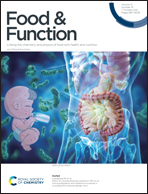
Daily blueberry consumption for 12 weeks improves endothelial function in postmenopausal women with above-normal blood pressure through reductions in oxidative stress: a randomized controlled trial
2023 Jan Food & Function Woolf EK, Terwoord JD, Litwin NS, Vazquez AR, Lee SY, Ghanem N, et al.
Daily consumption of freeze-dried blueberry powder for 12 weeks improves endothelial function through reduced oxidative stress in postmenopausal women with above-normal blood pressure.
Randomised Controlled Trial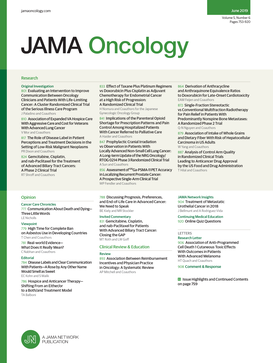
Efficacy of Acupoint Application on In Vitro Fertilization Outcome in Patients with Polycystic Ovary Syndrome: A UHPLC-MS-Based Metabolomic Study
2022 Oct 14 JAMA Oncology Yu L, Xia Q, Sun Z, Song J
Acupoint application can effectively improve the clinical symptoms and the outcome of IVF-ET treatment in patients with PCOS of the phlegm-dampness type, and its mechanism of action may be related to the regulation of the pathways of pyruvate metabolism, nicotinate and nicotinamide metabolism, protein digestion and absorption, biosynthesis of amino acids, and pyrimidine metabolism.
Randomised Controlled Trial Acupoint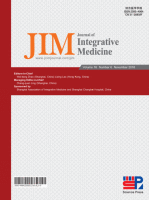
Efficacy of the herbal formula of Foeniculum vulgare and Rosa damascena on elderly patients with functional constipation: A double-blind randomized controlled trial
2022 May Journal of Integrative Medicine Azimi M, Niayesh H, Raeiszadeh M, Khodabandeh-shahraki S
Although both interventions significantly improved the treatment outcomes, constipation severity, stool consistency and the quality of life were improved more effectively by the herbal formula than by PEG 4000; however, the mechanism of action is not yet understood.
Randomised Controlled Trial Constipation Damask Rose Xiao Hui Xiang
Jing Si Herbal Drink as a prospective adjunctive therapy for COVID-19 treatment: Molecular evidence and mechanisms
2022 Mar Pharmacological Research - Modern Chinese Medicine Lu PH, Tseng CW, Lee JL, Lee EY, Lin YP, Lin IH, et al.
Review Article Randomised Controlled Trial Ai Ye Mai Dong Chrysanthemum Jie GengThe Jing Si Herbal Drink, composed of various antiviral, antioxidant and anti-inflammatory herbs, has been confirmed as potentially effective in treating COVID-19 symptoms.
Study Protocols
Published study protocols are detailed plans that outline the objectives, methodology, statistical analyses, and organisation of a research study that have been made publicly available for others to review and use as a reference.
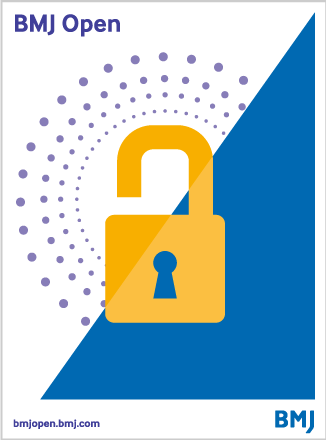
Immediate acupuncture with GB34 for biliary colic: protocol for a randomised controlled neuroimaging trial
2022 Jan BMJ Open Sun N, He DM, Ye X, Bin L, Zhou Y, Deng X, et al.
The findings may provide evidence of the clinical benefits and mechanisms of acupuncture for patients with biliary colic (BC).
Study Protocol Gallstones
Acupuncture for Subthreshold Depression: Study Protocol for a Randomized Controlled Trial
2022 Jan 27 Frontiers in Psychiatry Xian J, Wang L, Sun M, Wang X, Zang XM, Yu HJ, et al.
The protocol uses a randomized controlled trial to examine the effectiveness of acupuncture for subthreshold depression and to further study the mechanisms of its effect.
Study Protocol Acupuncture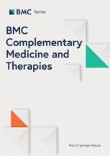
Efficacy and safety of electroacupuncture combined with Suanzaoren decoction for insomnia following stroke: study protocol for a randomized controlled trial
2021 Jul 24 BMC Complementary Medicine and Therapies Huang H, Yang S, Mei Z, Huang Y, Chen M, Mei Q, et al.
This study will contribute to assessing whether the combination of these two therapies is more beneficial for post-stroke insomnia than their independent use, and the results of this clinical trial will improve our understanding of the possible mechanisms underlying the effects of combination therapies.
Study Protocol Suan Zao Ren Tang Stroke Rehabilitation
An Immunological Hypothesis of Fu’s Subcutaneous Needling Acupuncture
2021 Jun 30 Journal of Acupuncture and Meridian Studies Wenbo Xu, Jidong Wu, Ping Xu
This work proposes that Fu’s subcutaneous needling (FSN) stimulates the immune system to activate the self-healing mechanisms of the human body to treat a broad range of disorders.
Study Protocol Acupuncture
Feasibility and Acceptability of a Healthy Nordic Diet Intervention for the Treatment of Depression: A Randomized Controlled Pilot Trial
2021 Mar 10 Nutrients Sabet JA, Ekman MS, Lundvall AS, Risérus U, Johansson U, Öström , et al.
This pilot study demonstrates the feasibility and acceptability of an RCT comparing a healthy Nordic diet with a control diet in individuals with depression, in which all meals are provided to both groups. This study lays the foundation for a future 8-week RCT in which the aim will be to investigate whether a healthy Nordic diet improves depressive symptoms, as well as the biological mechanisms underlying this effect and potential factors that may predict treatment response.
Study Protocol Randomised Controlled Trial DepressionPresentation Slides

Network Pharmacology
The Danggui Sini Decoction, a Traditional Chinese Medicine, may prevent myocardial infarction by positively influencing cell proliferation, inflammatory responses, and aging processes.
Li Z, Liu S, Zhang R, Li B

Systematic Review
Guizhi Fuling Wan, a traditional Chinese herbal formula, can inhibit endometriosis growth and enhance the effects of western medicines used to treat the condition.
Yee JL, Huang CY, Yu YC, Huang SJ

Review Article
Beer, specifically low-purine and high-active ingredient beer such as ginger, ginseng, and coix-lily, possess functional ingredients contributing to controlling chronic human diseases.
Zeng Y, Ahmed HGMD, Li X, Yang L, Pu X, Yang X, Yang T, Yang J

Systematic Review
Noni fruit and its compounds demonstrate significant potential in cancer therapy by inducing apoptosis, arresting cell cycle, inhibiting angiogenesis, and modulating immune system.
Kitic D, Miladinovic B, Randjelovic M, Szopa A, Seidel V, Prasher P, Sharma M, Fatima R, Arslan Ateşşahin D, Calina D, Sharifi‐Rad J

Review Article
Pumpkin seeds are recognised for their medicinal, nutritional, and cosmetic benefits, including anti-diabetic, heart disease prevention, anti-cancer, and antioxidant qualities.
Wal A, Singh MR, Gupta A, Rathore S, Rout RR, Wal P
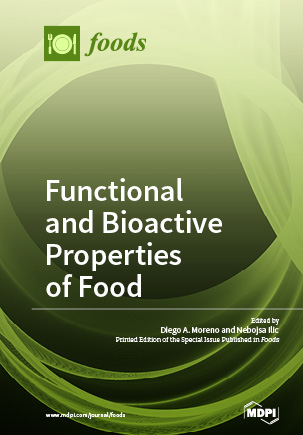
Review Article
Jujube, a Chinese native plant with numerous active components, exhibits calming effects, nourishes blood, and strengthens the spleen and stomach, alongside promising neuroprotective and cardiovascular benefits.
Zhu D, Jiang N, Wang N, Zhao Y, Liu X
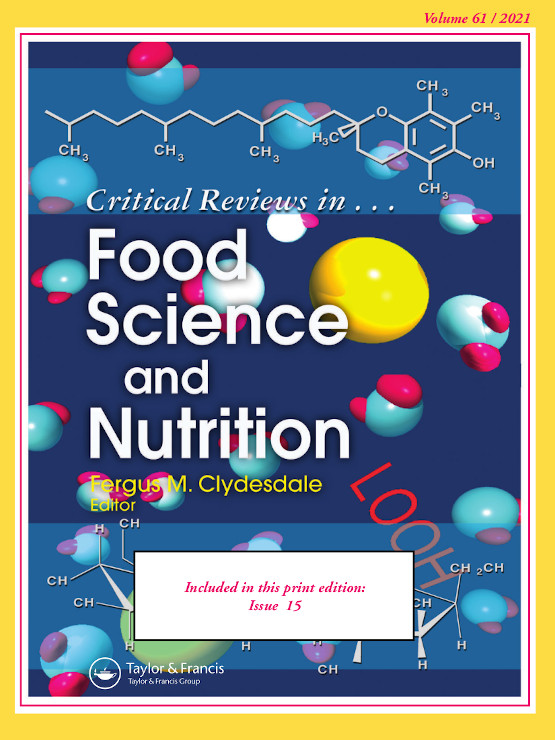
Meta-Analysis
Consuming carrots can significantly decrease the risk of cancer.
Ojobor CC, O’Brien GM, Siervo M, Ogbonnaya C, Brandt K
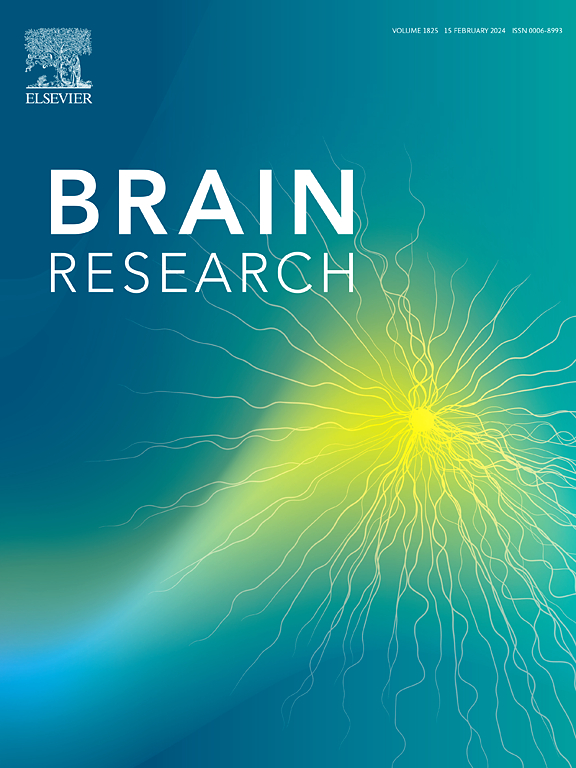
Systematic Review
Pomegranate fruit and its phytochemicals may offer a novel, natural alternative for the treatment of pathological anxiety, with fewer adverse effects than traditional medications.
Flores-Bazán T, Betanzos-Cabrera G, Guerrero-Solano JA, Negrete-Díaz JV, German-Ponciano LJ, Olivo-Ramírez D

Experimental Study
Qi Shen Tang, a traditional Chinese medicine, was found to suppress retinal cell death in retinitis pigmentosa by inhibiting a process called ferroptosis.
Xiong M, Ou C, Yu C, Qiu J, Lu J, Fu C, Peng Q, Zeng M, Song H

Theoretical Article
Traditional Chinese medicine has been found to effectively treat ulcerative colitis by repairing various components of the damaged intestinal mucosal barrier.
Zong Y, Meng J, Mao T, Han Q, Zhang P, Shi L
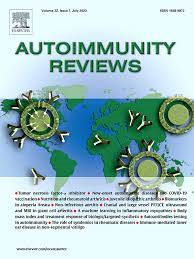
Systematic Review
Intermittent fasting may potentially influence autoimmune diseases like type 1 diabetes and rheumatoid arthritis, by reducing inflammation and supporting cellular repair mechanisms.
Barati M, Ghahremani A, Namdar Ahmadabad H
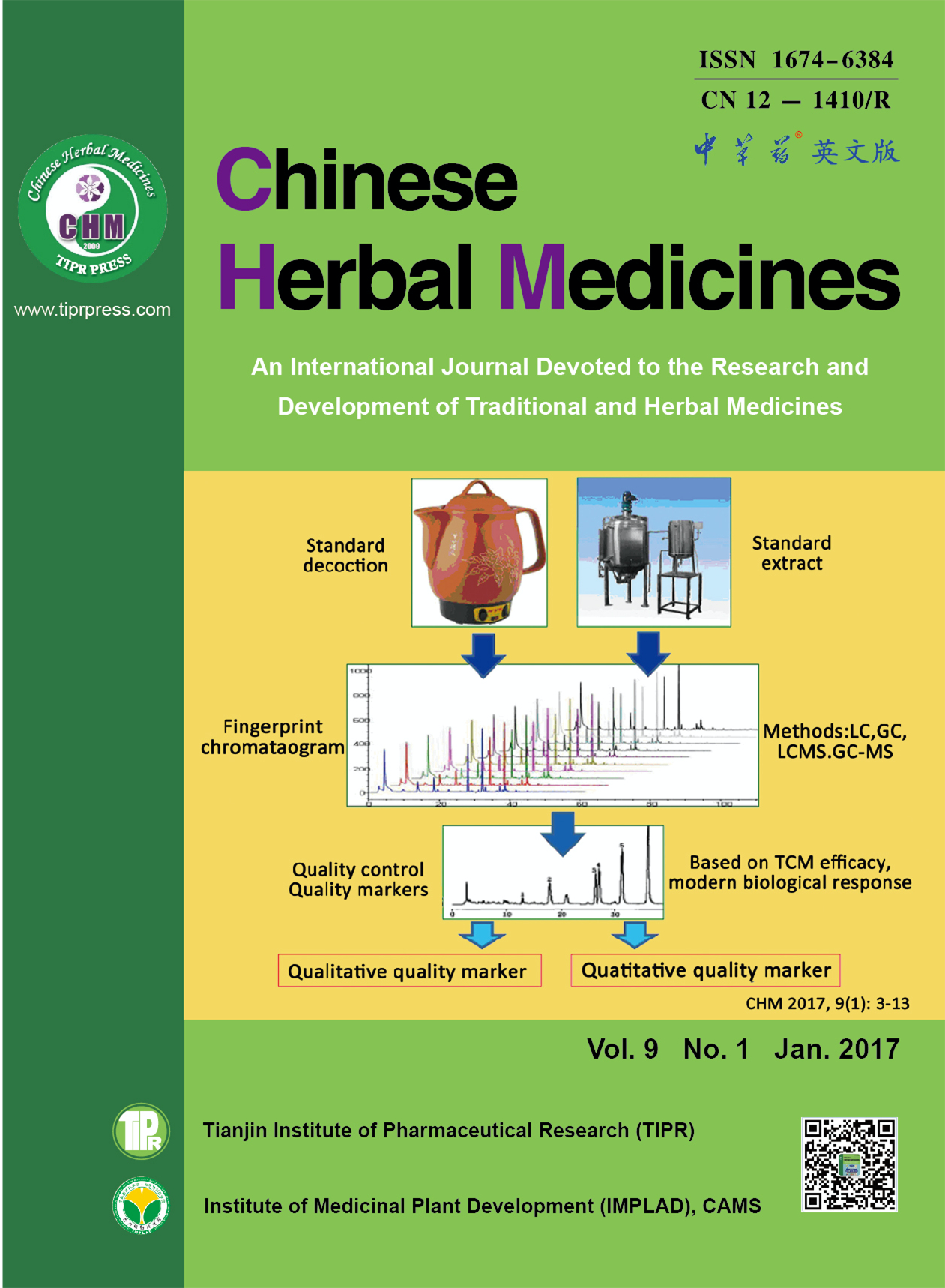
Review Article
Chinese herbal medicines (CHMs) possess multiple advantages, including multiple targets, pathways, and low toxicity, for the treatment of prostate cancer.
Kong F, Wang C, Zhang J, Wang X, Sun B, Xiao X, Zhang H, Song Y, Jia Y
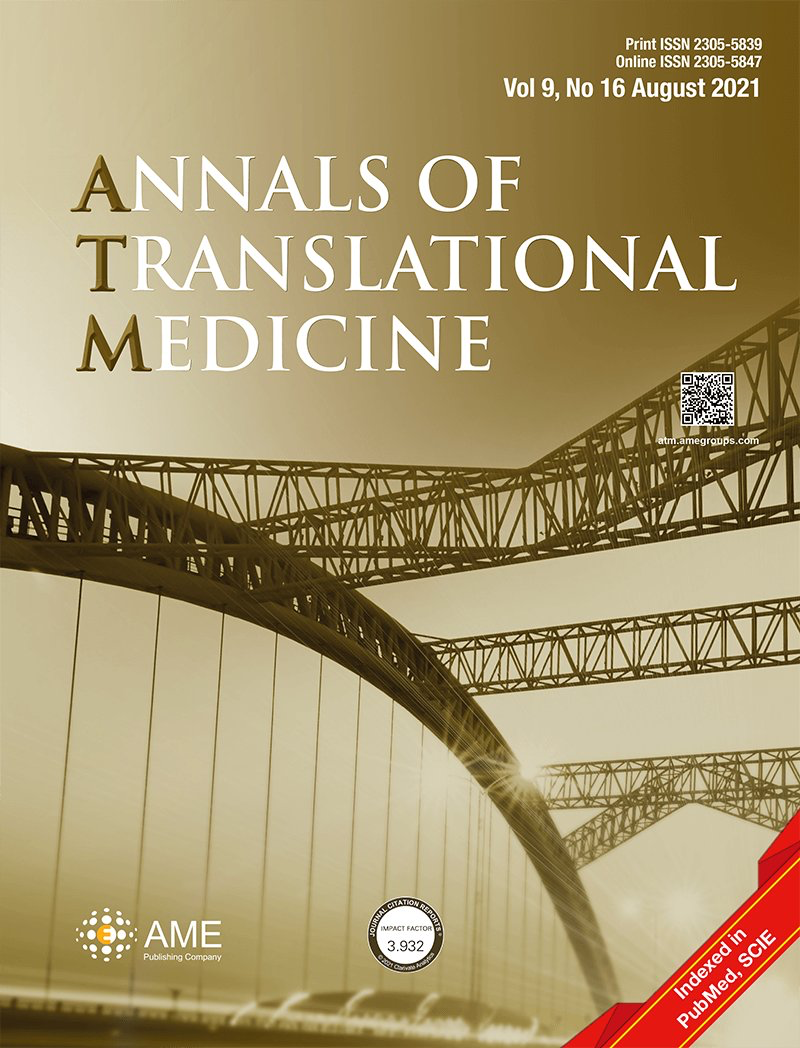
Network Pharmacology
The research unveils luteolin, quercetin, and kaempferol in RALRG as promising complementary components for RP treatment, with a key role in managing oxidative stress and PI3K/AKT signaling pathways.
Wu J, Sun Z, Zhang D, Liu H, Wu J, Zhang S

Review Article
The bioactive peptides found in walnuts have potential neuroprotective effects, including reducing oxidative stress and neuroinflammation, and promoting autophagy and balance in the cholinergic system.
Zhang L, Bai YY, Hong ZS, Xie J, Tian Y
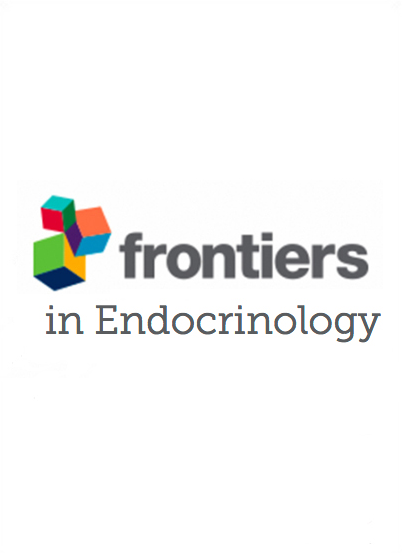
Systematic Review
Jia Wei Xiao Yao San could potentially enhance the effectiveness of antithyroid drugs in treating hyperthyroidism especially in symptom relief and side effect reduction.
Ma W, Zhang X, Zhao R, Tang Y, Zhu X, Liu L, Xu M, Wang G, Peng P, Liu J, Liu Z

Review Article
Theabrownins, a major ingredient in dark tea, significantly contribute to multiple health benefits by modulating lipid metabolism, reducing weight gain, and preventing diseases, surpassing other tea types.
Cheng L, Wei Y, Peng L, Wei K, Liu Z, Wei X

Experimental Study
The fermented jujube seeds extract significantly enhances sleep by binding to the GABA receptors, thus offers a promising natural alternative for sleep disorders treatment.
Bae GY, Ahn Y, Hong KB, Jung EJ, Suh HJ, Jo K

Animal Study
Jin Si Huang Ju tea, a traditional Chinese beverage, contains compounds that potentially reduce lipids, mitigate insulin resistance and reduce liver inflammation in vitro.
Li X, Li R, Wang X, Zhang X, Xiao Z, Wang H, Sun W, Yang H, Yu P, Hu Q, Guo Q, Sun H
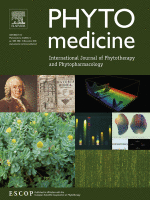
Experimental Study
The Chinese herbal medicine Bujing Yishi tablets could alleviate photoreceptor degeneration in retinitis pigmentosa by inhibiting microglial over-activation and inflammation.
Qi Y, Liu L, Liang D, Tang S, Yu X, Ye H, Chen N
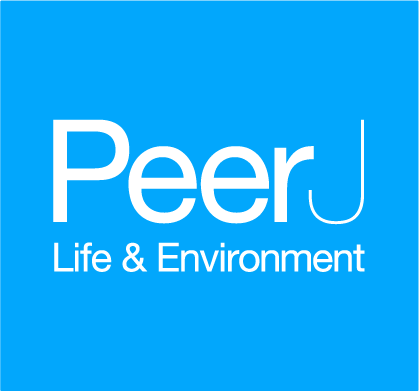
Review Article
Crocin, a compound derived from saffron, has shown considerable potential in hindering tumor growth and improving immune status, across various malignant tumors.
Bao X, Hu J, Zhao Y, Jia R, Zhang H, Xia L
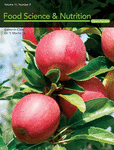
Review Article
Eating apples and apple products can enhance health by protecting the cardiovascular system, combating cancer and cognitive impairment, and improving hair growth, among other beneficial effects.
Zhang Y, Zeng M, Zhang X, Yu Q, Zeng W, Yu B, Gan J, Zhang S, Jiang X
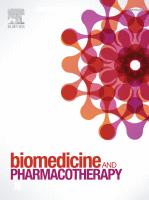
Experimental Study
Zhangyanming Tablets show potential as a protective agent for retinal function in early-stage, genetically-caused blindness in mice, possibly due to their antioxidant and anti-/pro-apoptotic properties.
Huang Z, Huang Q, Xu K, Liang L, Li Y, Zhou W, Ning N, Zhou J, Hu J, Liu S, Dang L

Review Article
Green tea helps alleviate symptoms in multiple benign gynecological disorders, primarily due to a compound called Epigallocatechin-3-gallate.
Hazimeh D, Massoud G, Parish M, Singh B, Segars J, Islam MS

Animal Study
Long-term intake of traditionally made Doenjang, particularly high in certain species, may improve symptoms of estrogen deficiency more effectively than unfermented soybeans.
Zhang T, Yue Y, Jeong SJ, Ryu MS, Wu X, Yang HJ, Li C, Jeong DY, Park S

Randomised Controlled Trial
Acupuncture can improve both perimenopausal depression and insomnia with short-medium term effects while being a safe treatment.
Zhao FY, Zheng Z, Fu QQ, Conduit R, Xu H, Wang HR, Huang YL, Jiang T, Zhang WJ, Kennedy GA
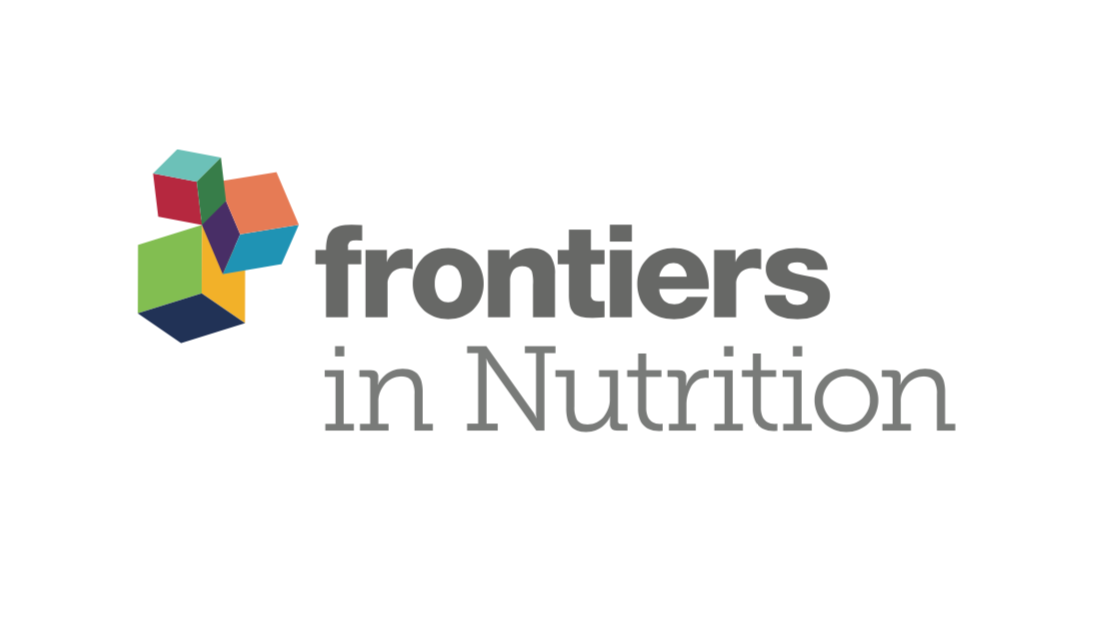
Animal Study
Kiwifruit polysaccharides may alleviate the toxic effects of acrylamide by improving gut health and enhancing bile acid metabolism.
Chen M, Chen X, Wang K, Cai L, Liu N, Zhou D, Jia W, Gong P, Liu N, Sun Y

Systematic Review
Blending traditional Chinese medicine with Western medicine shows potential for treating heart enlargement
Zhang T, Xu H, Zhen D, Fu D, Zhao M, Wei C, Bai X
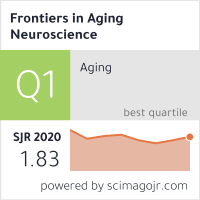
Review Article
Honey exhibits multifaceted benefits for brain health, acting as a memory booster, neuroprotective agent, anti-stress, and anti-nociceptive substance, fostering potential therapeutic applications to enhance overall cognitive well-being.
Zamri NA, Ghani N, Ismail CAN, Zakaria R, Shafin N

Network Pharmacology
Chrysanthemum has several active ingredients that can potentially treat dry eye by inhibiting inflammation-related factors and pathways, thus reducing inflammation of lacrimal gland tissue.
Cao LY, Long Q, Jiang PF, Peng J, Peng QH
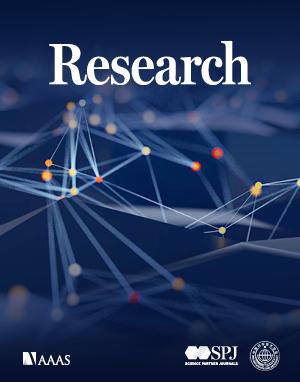
Experimental Study
A novel compound in walnuts, defined as 3-hydroxy-4-iminobutyric acid, can enhance sleep duration by disturbing motor activity and adjusting certain neurotransmitters in the brain of mice.
Ji J, Ye Y, Sheng L, Sun J, Hong Q, Liu C, Ding J, Geng S, Xu D, Zhang Y, Sun X
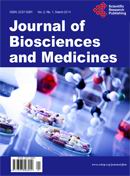
Review Article
Noni fruit juice enhances immune system function, primarily by boosting natural killer cell activity and increasing interferon-gamma production, which promotes phagocytosis.
West BJ, Uwaya A, Isami F, Tomida N, Swartz F, Deng S, Cox-Lovesy B

Experimental Study
Pu-erh tea can potentially prevent depression-like behaviors induced by nighttime blue light from electronic devices by reshaping gut microbiota and increasing short-chain fatty acids generation.
Zhao S, Hu S, Sun K, Luo L, Zeng L
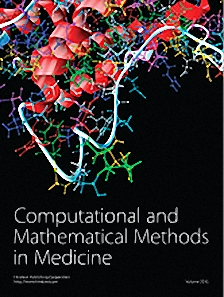
Network Pharmacology
Compound Chrysanthemum extract may alleviate visual fatigue through its interaction with several components, targets, and pathways.
Qiu J, Zheng B, Zhou H, Ye C, Shi M, Shi S, Wu S

Review Article
Chaihu Shugan powder, a traditional Chinese medicine, presents potential advantages in treating post-stroke depression, showing potential as an alternative to conventional antidepressants.
Gao Z, Wang Y, Yu H
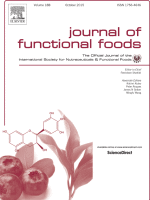
Review Article
Carrot's bioactive compounds can regulate immune response, reduce oxidative stress, and prevent damaging oxidative destruction, making it a potential preventive tool for various diseases.
Anjani G, Ayustaningwarno F, Eviana R
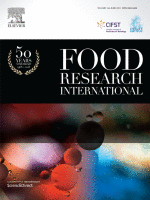
Animal Study
Pu-erh tea and its ingredient theabrownin improve liver, jejunum, and adipose tissue functions in metabolic syndrome mice, modulating circadian rhythm, glycerophospholipid, and linoleic acid metabolism.
Hou Y, Zhang Z, Cui Y, Peng C, Fan Y, Tan C, Wang Q, Liu Z, Gong J

Network Pharmacology
Two varieties of chrysanthemum have similar therapeutic effects but operate through distinct mechanisms, revealing potential for precise applications in both traditional and modern medicine.
Wang Y, Li Y, Guo W, Yang X, Qu J, Gao M, Chen S, Dong J, Li Q, Wang T
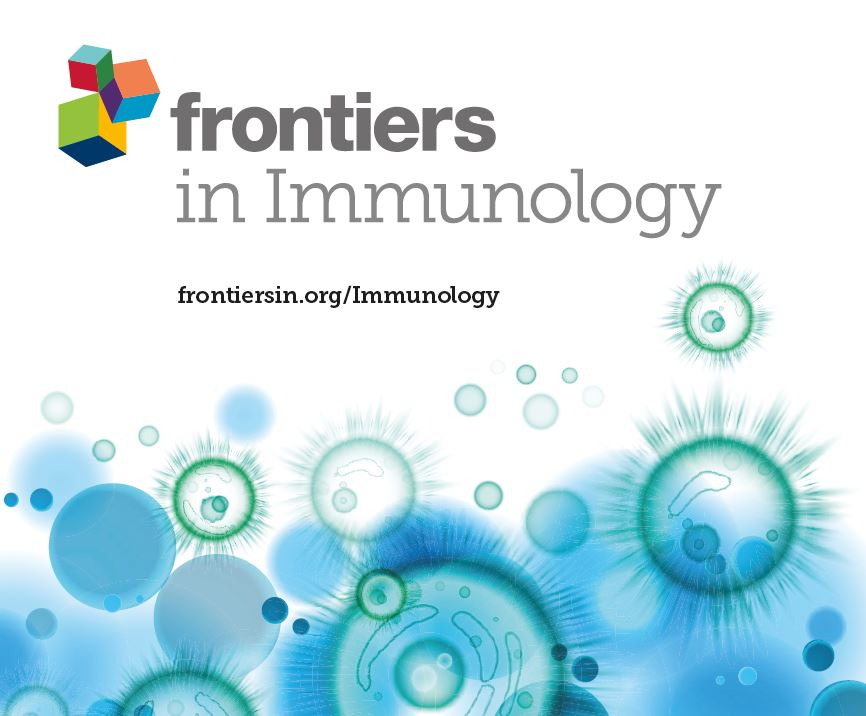
Network Pharmacology
Manuka honey exhibits a dual role in immune modulation, triggering a pro-inflammatory response by elevating cytokine expression and neutrophil recruitment via TLR signaling, while also influencing the phenotypic and functional maturation of macrophages.
Masad RJ, Nasser RA, Bashir G, Mohamed YA, Al-Sbiei A, Al-Saafeen BH, Fernandez-Cabezudo MJ, Al-Ramadi BK
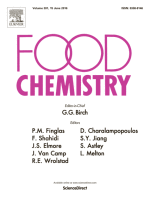
Experimental Study
Pu-erh tea, through the increase of Cinnabarinic acid, can improve obesity induced by circadian rhythm disorders by enhancing fat metabolism and altering gut microbes.
Hu S, Hu C, Luo L, Zhang H, Zhao S, Liu Z, Zeng L

Systematic Review
Acupuncture covering the depth ranges for BL18, BL20, and BL22 and their targeting of various tissues potentially alleviates sympathetic nerve issues and ischemia with assistance of the diaphragm.
Cho Y, Han Y, Kim Y, Han S, Oh K, Chae H, Hongmin C, Ryu M

Network Pharmacology
The primary ingredient of Shenling Baizhu powder, Rutin, can improve polycystic ovary syndrome and postmenopausal osteoporosis by binding to the aromatic hydrocarbon receptor, thus inhibiting cell apoptosis.
Liang J, Bao A, Ma H, Dong W, Li W, Wu X, Li H, Hou H, Chen Y, Fu J, Shao C
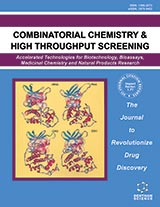
Network Pharmacology
The Chinese medicine formulas Zuo Gui Wan and You Gui Wan have the potential to treat premature ovarian failure through different pharmacological pathways.
Shanshan Mei, Chaoqin Yu, Jie Ding, Wen Cheng

Review Article
Walnuts, rich in anti-inflammatory ingredients, potentially regulate neuroinflammation, improve cognitive function, reduce oxidative stress, and maintain gut health, thereby suggesting their use against neurodegenerative diseases.
Tan B, Wang Y, Zhang X, Sun X
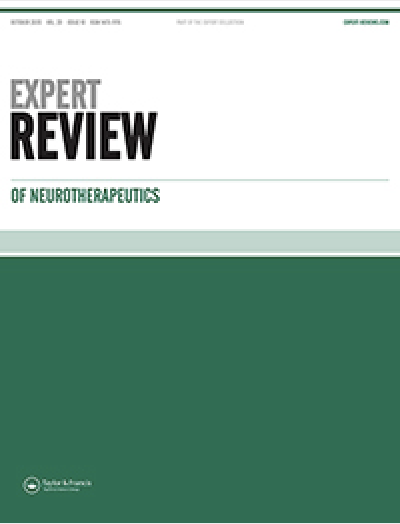
Review Article
A 6-week course of acupuncture proves as effective as 6-month drug prophylaxis for migraines, with specific Chinese point selection and stimulation appearing less important.
Endres HG, Diener HC, Molsberger A

Review Article
Pomegranate extract and its phytochemicals can potentially inhibit severe acute respiratory syndrome coronavirus 2 (SARS-COV-2) and improve gut microbiota, preventing obesity and diabetes.
Maphetu N, Unuofin JO, Masuku NP, Olisah C, Lebelo SL

Network Pharmacology
Gui Zhi Fu Ling Wan can lessen the expression of certain proteins, which may be key to its ability to impede abnormal tissue invasion and metastasis in adenomyosis.
Shi Y, Zhang C, Wang X, Wang Z, Zhang Y, Liu Z, Wang X, Shi W

Review Article
Depression, a prevalent and debilitating disorder, necessitates novel treatments beyond conventional drugs. Stingless bee honey, rich in antioxidants, emerges as a potential antidepressant candidate, explored comprehensively through monoamine, inflammatory, and neurotrophin hypotheses.
Zakaria FH, Samhani I, Mustafa MZ, Shafin N
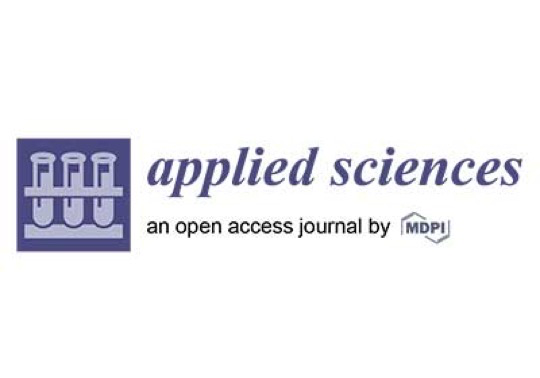
Review Article
Honey, owing to its bioactive compounds, demonstrates potential in treating COVID-19 symptoms by reducing oxidative damage and enhancing the immune system.
Soares S, Bornet M, Grosso C, Ramalhosa MJ, Gouvinhas I, Garcia J, Rodrigues F, Delerue-Matos C

Review Article
Xiao Yao San has potential as an effective and safe alternative treatment for depression, offering multiple mechanisms of action for its antidepressant effects.
Chen J, Lei C, Li X, Wu Q, Liu C, Ma Q, Chen J.

Review Article
Various traditional Chinese medicine treatment strategies could potentially provide an effective alternative in slowing the progression of Chronic Kidney Disease.
Yunlai Wang, Ye Feng, Manman Li, Mo Yang, Gaoxiang Shi, Zihua Xuan, Dengke Yin, Fan Xu

Systematic Review
Acupuncture, specifically electroacupuncture and bee venom acupuncture, shows promise as a growing therapeutic approach in the treatment of Parkinson's Disease.
Li X, Wei W, Wang Y, Wang Q, Liu Z

Network Pharmacology
The Jian Pi Yi Shen formula in traditional Chinese medicine demonstrates a protective effect on kidneys by modulating tryptophan metabolism and Aryl hydrocarbon receptor activation.
Liu X, Deng R, Chen Y, Huang S, Lu J, Zheng L, Xiong G, Li S

Review Article
Chinese Herbal Medicine Prescriptions (CHMPs) have demonstrated to be potentially effective in managing Inflammatory Bowel Disease (IBD) with a comprehensive, holistic approach.
Zhang S, Luo H, Tan D, Peng B, Zhong Z, Wang Y

Cohort Study
Shenling Baizhu San (SBS), combined with mesalamine, can treat ulcerative colitis effectively by changing gut microbiota structures and increasing tryptophan metabolite levels.
Jiao C, Zhang Q, Yang M, Ma J, Zhao X, Tang N, Dai M, Li Q, Jiang Z, Huang X, Zhang H, Sun L

Systematic Review
Chinese herbal medicine shows evident efficacy in treating coronary heart disease patients with anxiety or depression, notably improving symptoms of angina pectoris.
Wang B, Teng Y, Li Y, Lai S, Wu Y, Chen S, Li T, Han X, Zhou H, Wang Y, Lu Z, Li H, Ding Y, Ma L, Zhao M, Wang X

Review Article
Acupuncture, particularly when used alongside antidepressants, can effectively alleviate various types of depression symptoms and reduce side effects of medication.
Yang, Na-Na; Lin, Lu-Lu; Li, Yue-Jie; Li, Hong-Ping; Cao, Yan; Tan, Chun-Xia; Hao, Xiao-Wan; Ma, Si-Ming; Wang, Lu; Liu, Cun-Zhi

Xiang Fu, a traditional Chinese herbal medicine, shows significant antidepressant effects.
Lu J, Li W, Gao T, Wang S, Fu C, Wang S
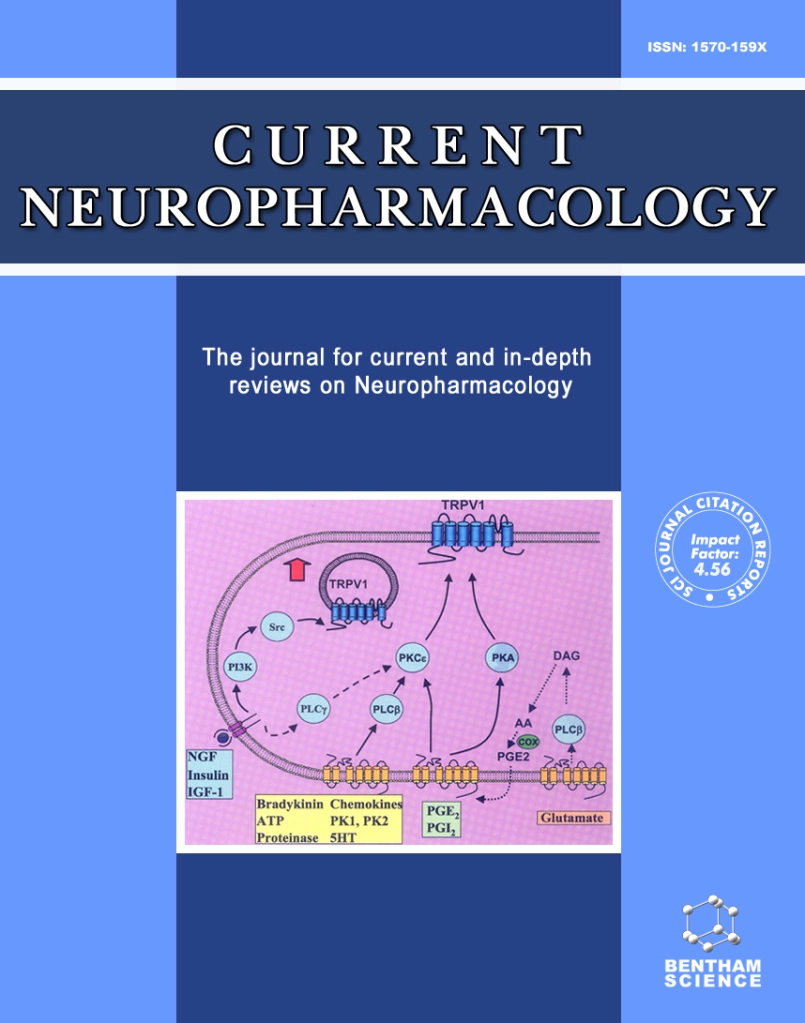
Review Article
Acupuncture could help manage different types of depression by increasing neuroplasticity, decreasing brain inflammation, and reducing side effects of conventional antidepressant treatment.
Yang NN, Lin LL, Li YJ, Li HP, Cao Y, Tan CX, Hao XW, Ma SM, Wang L, Liu CZ
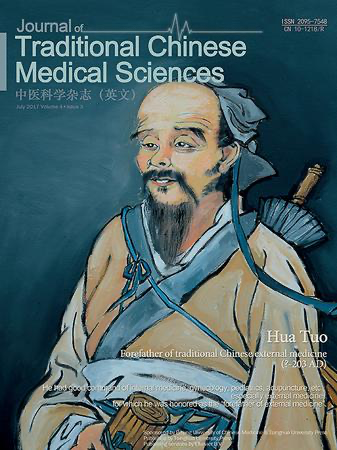
Review Article
Pu-erh tea possesses therapeutic mechanisms potentially beneficial for metabolic diseases due to its interaction with liver and gut microbiome.
Jia W, Rajani C, Lv A, Fan TP, Zheng X
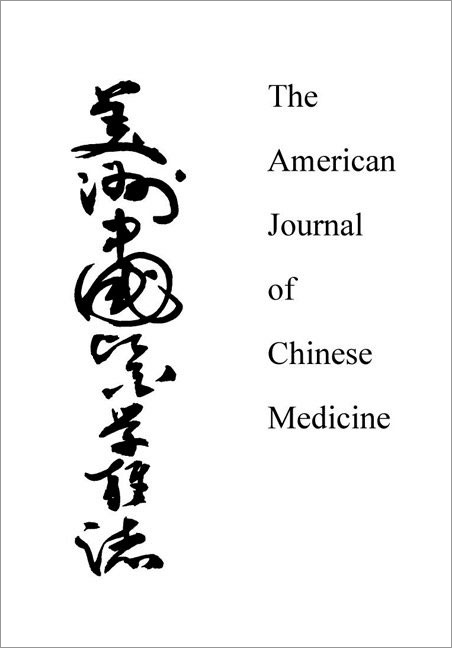
Review Article
Acupuncture shows promising results in managing autoimmune diseases by potentially regulating immune responses.
Jing Wang, Fangyi Zhu, Wei Huang, Zhengyi Chen, Ping Zhao, Yanting Lei, Yumei Liu, Xijun Liu, Bo Sun, Hulun Li
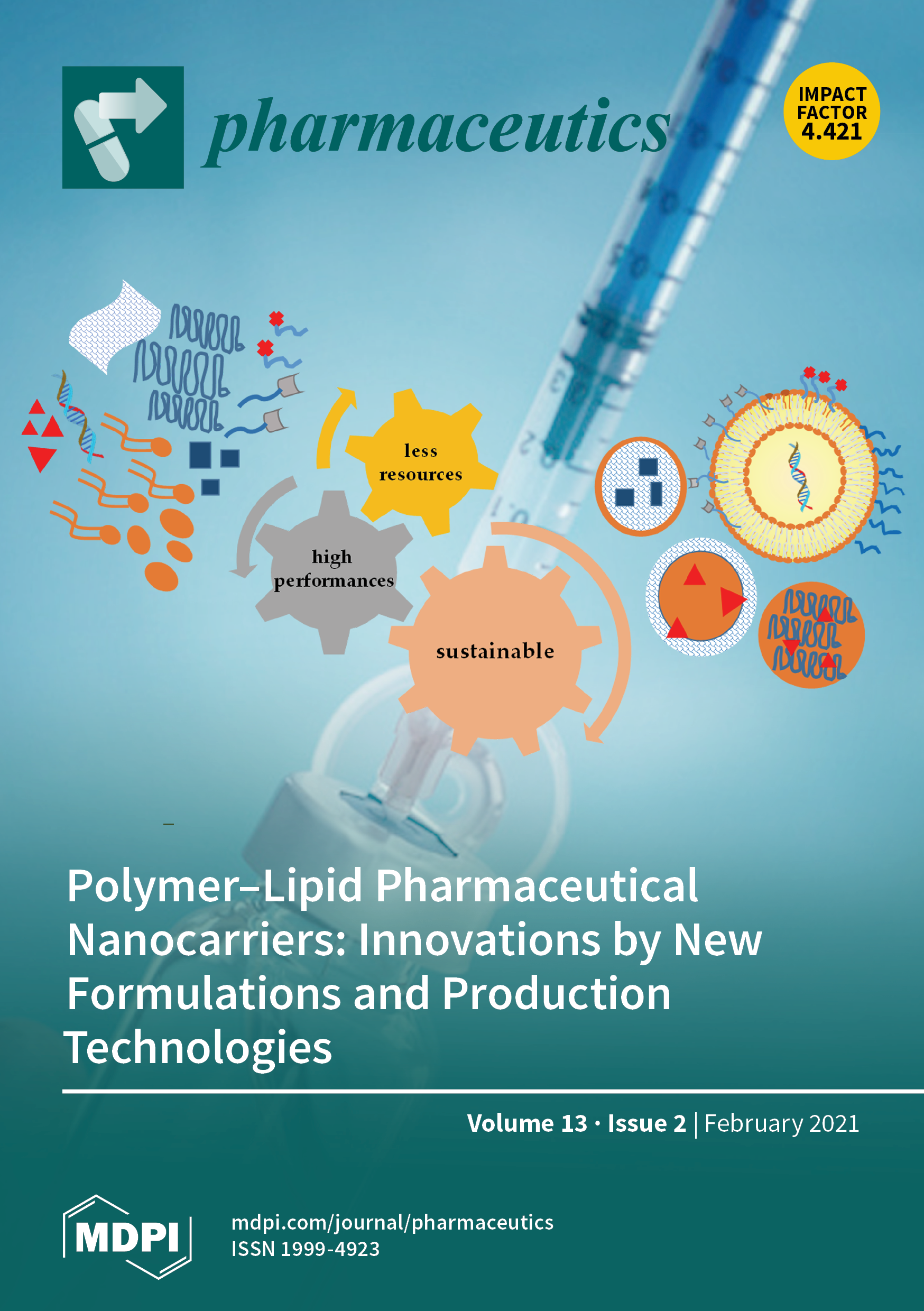
Network Pharmacology
Asthma severity can be notably reduced by Xi Xin essential oil, which decreases inflammation, immunoglobulins, and fibrotic mediators, while also alleviating airway obstruction.
Han JM, Kim MH, Choi LY, Kim G, Yang WM

Review Article
The Jing Si Herbal Drink, composed of various antiviral, antioxidant and anti-inflammatory herbs, has been confirmed as potentially effective in treating COVID-19 symptoms.
Lu PH, Tseng CW, Lee JL, Lee EY, Lin YP, Lin IH, Yu MC, Lu KC, Kuo KL

Systematic Review
Edible medicinal plants like saffron, chamomile, dill seeds, and castor oil have demonstrated positive effects on various aspects of labor, indicating potential natural alternatives for aiding childbirth.
Ivari FR, Vatanchi AM, Yousefi M, Badaksh F, Salari R
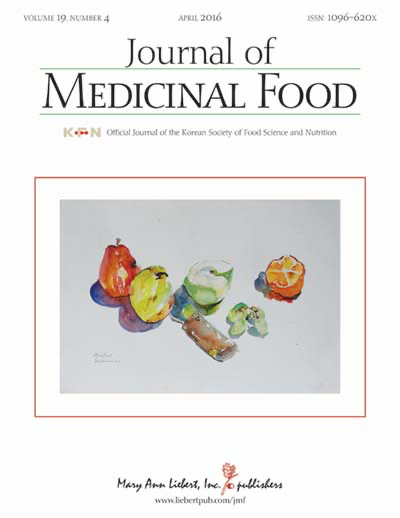
Systematic Review
Raspberry consumption can help to reduce blood glucose levels and stabilize the blood lipid profile due to its bioactive compounds.
Piña-Contreras N, Martínez-Moreno AG, Ramírez-Anaya JDP, Espinoza-Gallardo AC, Valdés EHM
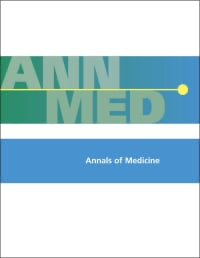
Network Pharmacology
The Gui Zhi-Shao Yao herb pair in traditional Chinese medicine potentially treats chronic pain, anxiety, and depression through interactions with nine key targets.
Pan HT, Xi ZQ, Wei XQ, Wang K

Review Article
Acupuncture can regulate both innate and adaptive immunity of IBD patients, including the balance of Th17/Treg and Th1/Th2 cells, and also modulate intestinal flora.
Liu Z, Jiao Y, Yu T, Wang H, Zhang Y, Liu D, Xu Y, Guan Q, Lu M
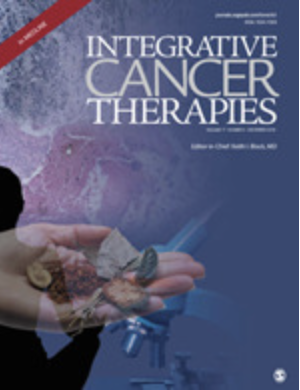
Systematic Review
Noni, a medicinal plant, has illustrated diverse anticancer properties across different cancer models through numerous mechanisms including antitumor and immunomodulatory activities.
Chanthira Kumar H, Lim XY, Mohkiar FH, Suhaimi SN, Mohammad Shafie N, Chin Tan TY

Experimental Study
Consuming oats significantly lessens total and LDL cholesterol levels and mediates a prebiotic effect on the gut microbiome, contributing to its cholesterol-lowering ability.
Xu D, Feng M, Chu YF, Wang S, Shete V, Tuohy KM, Liu F, Zhou X, Kamil A, Pan D, Liu H, Yang X, Yang C, Zhu B, Lv N, Xiong Q, Wang X, Sun J, Sun G, Yang Y

Review Article
Fresh Hass avocados have been found to reduce cardiovascular disease risk, assist weight loss, improve cognitive function, and promote colonic microbiota health.
Dreher ML, Cheng FW, Ford NA
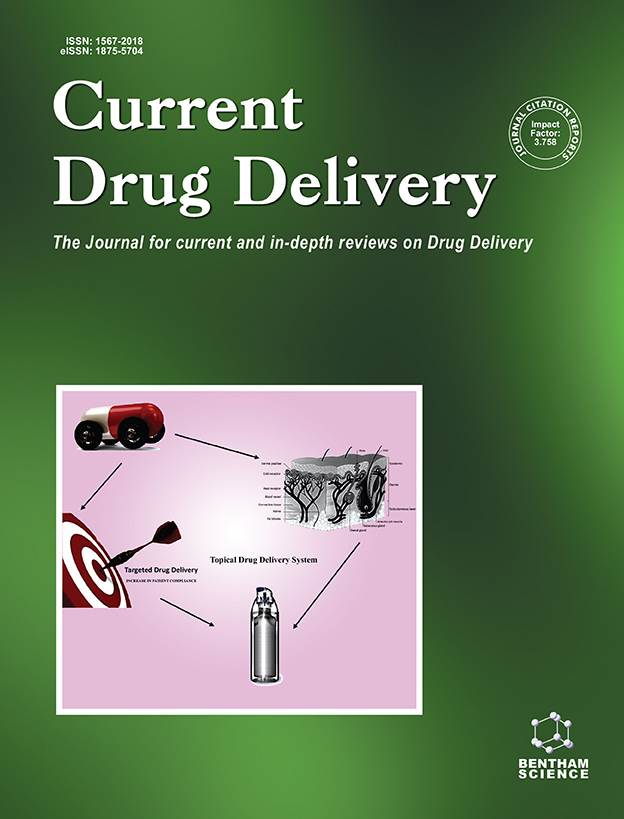
Review Article
Pomegranate juice and its bioactive components may serve as cost-effective, next-generation non-pharmacologic anticancer therapies, particularly against colorectal and prostate cancer.
Hussein L, Gouda M, Buttar HS
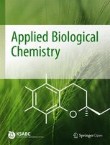
Review Article
Cinnamomum cassia, or cinnamon, exhibits promising therapeutic benefits in combating gastritis by targeting inflammation pathways, according to preclinical studies.
Lee JH, Park DH, Lee S, Seo HJ, Park SJ, Jung K, Kim SY, Kang KS
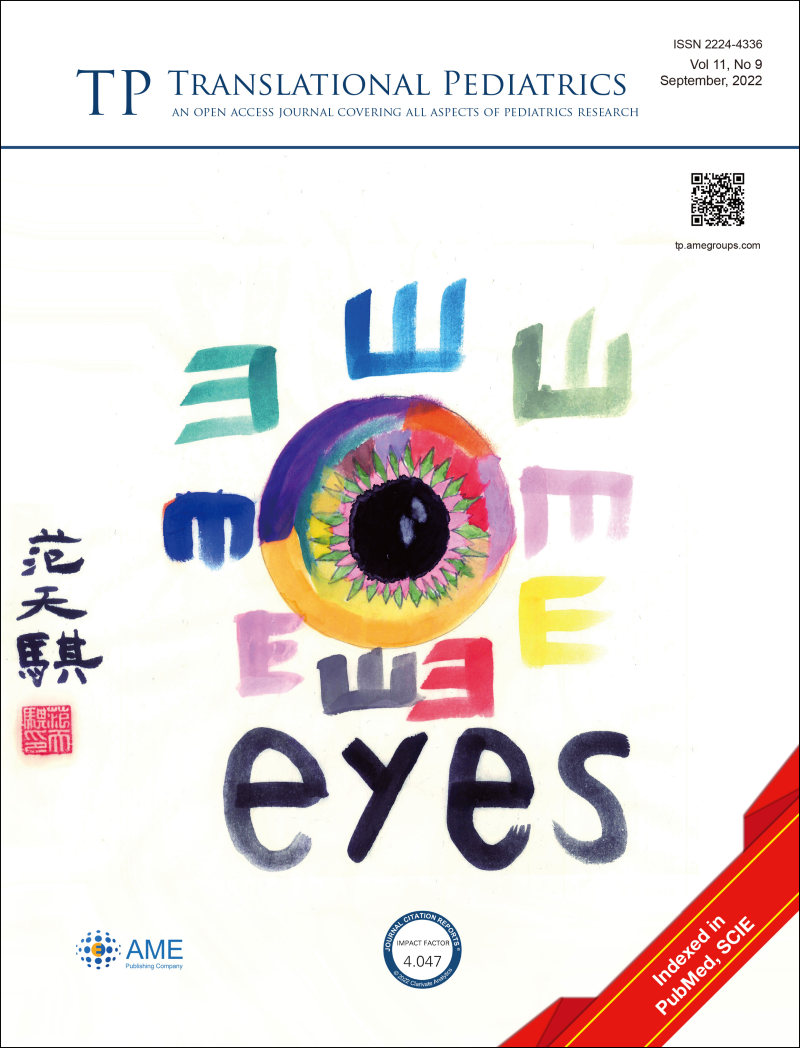
Review Article
Allergic rhinitis in children, according to traditional Chinese medicine, is interrelated with the functionality of lungs, spleen, and kidney and can be treated with combined Western and Chinese herbal medicines.
Liang J, Gu Q

Network Pharmacology
Luteolin, a component of traditional Chinese medicine herb Zi Su Ye, has been found to alleviate kidney disease stage 3-5 by reducing renal tubular epithelial cell apoptosis.
Yong C, Zhang Z, Huang G, Yang Y, Zhu Y, Qian L, Tian F, Liu L, Wu Q, Xu Z, Chen C, Zhao J, Gao K, Zhou E
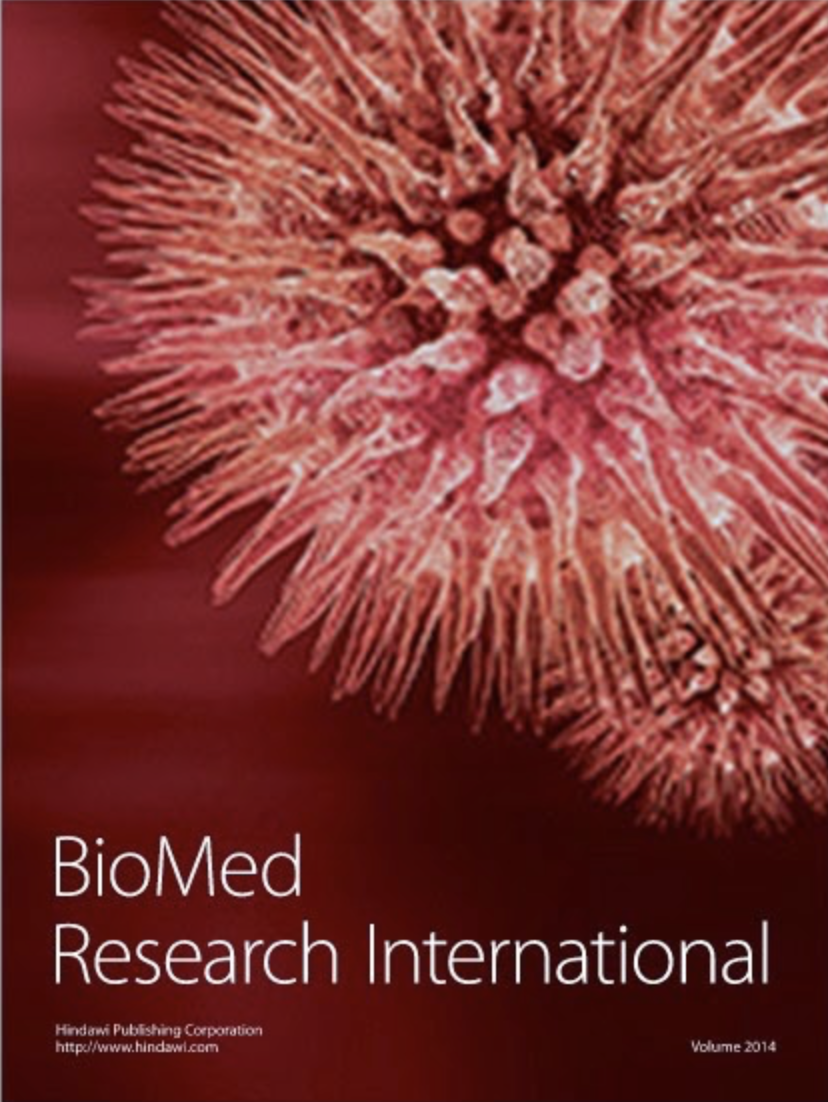
Network Pharmacology
Dang Gui Si Ni formula moderates intervertebral disc degeneration by primarily interacting with stress responses and apoptotic signaling pathways.
Wang L, Lin J, Li W

Review Article
Chinese herbal medicines could alleviate chronic kidney disease symptoms by combating fibrosis, inflammation, oxidative stress, and encouraging repair and regeneration.
Shao M, Ye C, Bayliss G, Zhuang S

Systematic Review
Chinese medicine's unique immune regulation, intestinal flora regulation, and improved intestinal barrier function offer new approaches to managing chronic Inflammatory Bowel Disease.
Yang L, Luo H, Tan D, Zhang S, Zhong Z, Wang S, Vong CT, Wang Y

Systematic Review
Chinese medicine presents unique advantages in managing Inflammatory Bowel Disease (IBD) through immune regulation, intestinal flora regulation, and improvement of intestinal barrier function.
Yang L, Luo H, Tan D, Zhang S, Zhong Z, Wang S, Vong CT, Wang Y

Network Pharmacology
Gui Zhi Fu Ling Wan treats adenomyosis by intervening in local estrogen signalling pathways and affecting estrogen resistance via myometrium signalling pathways.
Wang H, Zhang J, Zhu Q, Fu X, Li C

Systematic Review
Cinnamon supplementation may significantly enhance metabolic status in women with polycicstic ovary syndrome, notably improving high-density lipoprotein and insulin sensitivity, and decreasing low-density lipoprotein, triglyceride, and blood glucose levels.
Maleki V, Faghfouri AH, Tabrizi FPF, Moludi J, Saleh-Ghadimi S, Jafari-Vayghan H, Qaisar SA

Review Article
Green tea and its component EGCG, demonstrate potential as a treatment for endometriosis by inhibiting growth, invasion, adhesion and angiogenesis.
Chen X, Man GCW, Hung SW, Zhang T, Fung LWY, Cheung CW, Chung JPW, Li TC, Wang CC
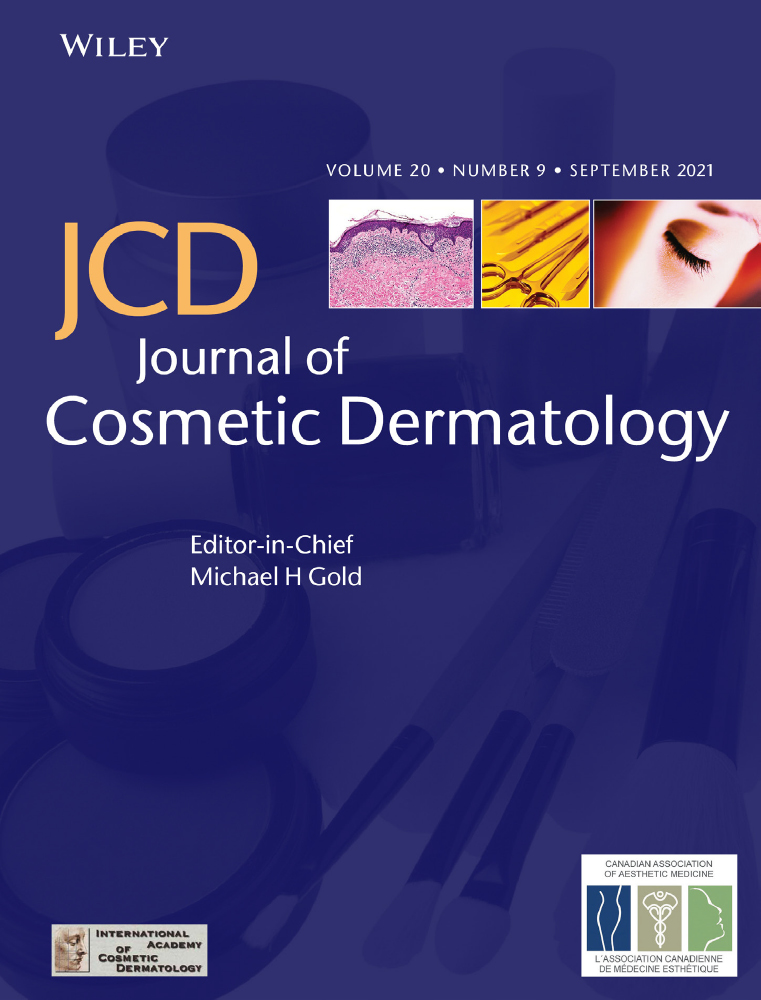
Review Article
Acne, primarily influenced by fluctuating hormone levels, may be effectively treated using acupuncture, an ancient technique that tackles the deep-rooted mechanisms crucial to acne development.
Chun‐Yan C, Guang‐yao X, Yan‐yan S, Ming‐Shu X, Peng L

Review Article
Recent findings suggest that the molecular background to the development of insulin resistance may be related to vitamin D deficiency.
Contreras-Bolívar V, García-Fontana B, García-Fontana C, Muñoz-Torres M

Review Article
Cocoa, including its often discarded shell, has promising potential in providing benefits to human health due to its high content of health-boosting phytochemicals.
Cinar Z, Atanassova M, Tumer TB, Caruso G, Antika G, Sharma S, Sharifi-Rad J, Pezzani R

Animal Study
Shen Ling Bai Zhu San was found to inhibit inflammatory damage in nonalcoholic fatty liver disease, thus offering potential as a preventive and therapeutic treatment.
Pan M, Zheng C, Deng Y, Tang K, Nie H, Xie J, Liu D, Tu G, Yang Q, Zhang Y
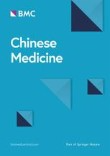
Review Article
With a multi-ingredient and multi-target-pathway pharmacological action, Chinese medicine compounds are compatible with the complex pathogenesis of nonalcoholic fatty liver disease to mitigate it.
Dai X, Feng J, Chen Y, Huang S, Shi X, Liu X, Sun Y
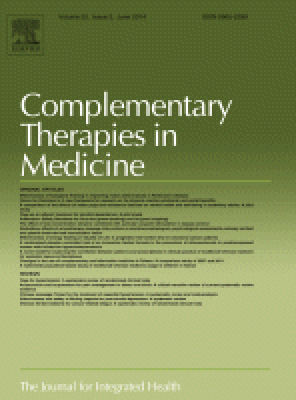
Experimental Study
The Licorice and Jujube formula is seen as commonly used and potentially effective for treating menopausal symptoms as per classical Chinese medicine.
Coyle ME, Liu J, Yang H, Wang K, Zhang AL, Guo X, Lu C, Xue CC

Systematic Review
A variety of Chinese herbal medicines have been reported to effectively prevent or treat nonalcoholic fatty liver disease by regulation of the gut microbiota and the gut-liver axis.
Yang XF, Lu M, You L, Gen H, Yuan L, Tian T, Li CY, Xu K, Hou J, Lei M

Review Article
The autophagic-regulatory effects of Chinese herbal medicine are potentially therapeutic for allergic inflammatory diseases such as asthma.
Zhang Yun, Wang Xing, Zhang He, Tang Hongmei, Hu Hang, Wang Songping, Wong Vincent Kam Wai, Li Yuying, Deng Jun

Clinical Study
Jia Wei Yu Ping Feng San, a traditional Chinese medicine, alleviates allergic asthma by reducing airway inflammation, mediated by suppressing group 2 innate lymphoid cells.
Xue L, Li C, Ge G, Zhang S, Tian L, Wang Y, Zhang H, Ma Z and Lu Z
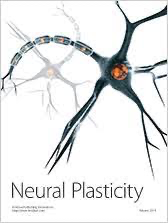
Review Article
Acupuncture may slow Parkinson's disease progression by protecting dopaminergic neurons and regulating neurotransmitter balance, potentially reducing dependence on medication.
Zhao Y, Zhang Z, Qin S, Fan W, Li W, Liu J, Wang S, Xu Z, Zhao M
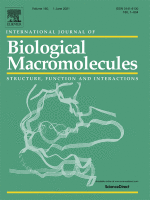
Systematic Review
Tremella fuciformis polysaccharides effectively reduce inflammation in ulcerative colitis, promoting healing by restoring intestinal and mucus barrier functions.
Xu Y, Xie L, Zhang Z, et al
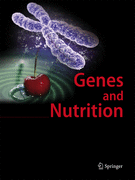
Randomised Controlled Trial
Consumption of blueberry supplement did not show significant improvement in metabolic health markers, however, it induced changes in gene expression, indicating a potential longer-term effect.
Rousseau M, Horne J, Guénard F, de Toro-Martín J, Garneau V, Guay V, Kearney M, Pilon G, Roy D, Couture P, Couillard C, Marette A, Vohl MC
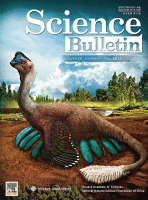
Qingfei Paidu Decoction might significantly inhibit IL-6 and TNF-α signaling pathways in regulating COVID-19-related cytokine storm.
Yifei Dai, Weijie Qiang, Yu Gui, Xue Tan, Tianli Pei, Kequan Lin, Siwei Cai, Liang Sun, Guochen Ning, Jianxun Wang, Hongyan Guo, Yimin Sun, Jing Cheng, Lan Xie, Xun Lan, Dong Wang

Review Article
Green tea and its chief bioactive component have the potential to improve certain female reproductive disorders such as endometriosis, polycystic ovary syndrome, and dysmenorrhea.
Kamal DAM, Salamt N, Zaid SSM, Mokhtar MH

Traditional Chinese medicine could reduce the all-cause mortality in COVID-19 patients, inhibit virus replication and transcription, and attenuate the cytokine storm and immune deficiency caused by the SARS-CoV-2.
Xuedong An, YueHong Zhang, Liyun Duan, De Jin, Shenghui Zhao, RongRong Zhou, Yingying Duan, Fengmei Lian, Xiaolin Tong

This review further put forward the possibility that cold-hot nature of food and Chinese medicine exert different biological effects on the inflammatory response via regulating the signaling pathways viz. NF-κB and MAPK.
Zhou Y, Xu B.

Systematic Review
Acupuncture, moxibustion and Chinese herbal medicines are the most commonly used complementary and alternative medicine in the treatment of female infertility.
Feng J, Wang J, Zhang Y, Zhang Y, Jia L, Zhang D, Zhang J, Han Y, Luo S

Systematic Review
These results indicate that a certain concentration of snow fungus polysaccharides can effectively alleviate skin damage caused by UVA, and they may be used as an effective component of cosmetics.
Fu H, You S, Zhao D, An Q, Zhang J, Wang C, Wang D, Li M.
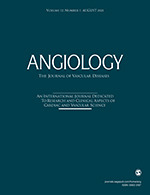
Systematic Review
Epidemiological studies suggest that the consumption of spicy chilli food is associated with reduced risk of all-cause as well as heart disease–related mortality.
Ofori-Asenso R, Mohsenpour MA, Nouri M, Faghih S, Liew D, Mazidi M.

Review Article
Chinese herbal medicines may improve treatment for those with chronic kidney disease, due to their anti-inflammatory, antioxidative, anti-apoptotic, autophagy-mediated, and antifibrotic effects.
Zhao M, Yu Y, Wang R, Chang M, Ma S, Qu H, Zhang Y

Experimental Study
The Jian-Pi-Yi-Shen (JPYS) traditional Chinese medicine formula aids in the alleviation of renal dysfunction and fibrosis in chronic kidney disease (CKD) rats by combating inflammation and cellular apoptosis.
Zhou F, Zou X, Zhang J, Wang Z, Yang Y, Wang D
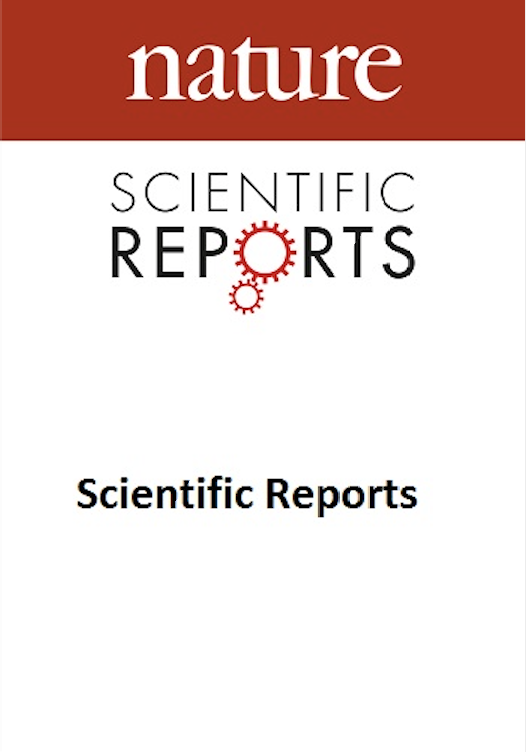
Network Pharmacology
The traditional formula Danggui Beimu Kushen Wan (DBKW) contains multi-targeting agents that simultaneously act on more than one pathway in prostate cancer.
Li H, Hung A, Yang AWH
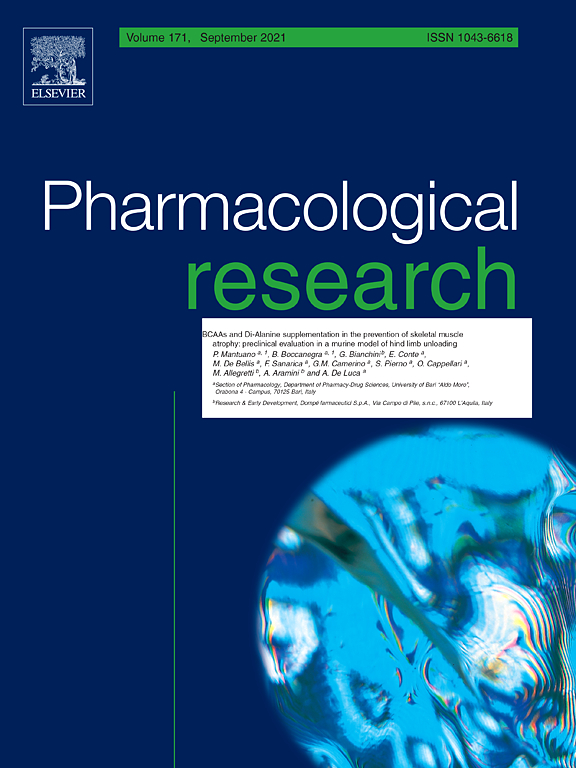
Review Article
Baicalin, a Scutellaria baicalensis extract, has been found to have numerous therapeutic applications in liver and gut diseases by mediating apoptosis and immune response pathways.
Hu Q, Zhang W, Wu Z, Tian X, Xiang J, Li L, Li Z, Peng X, Wei S, Ma X, Zhao Y

Clinical Study
Pomegranate polyphenols have shown strong potential in preventing and treating breast cancer through various anti-cancer effects.
Moga MA, Dimienescu OG, Bălan A, Dima L, Toma SI, Bîgiu NF, Blidaru A

Systematic Review
Olive oil and leaf extract derivatives have been demonstrated to stimulate thyroid function in animal studies.
Pang KL, Lumintang JN, Chin KY
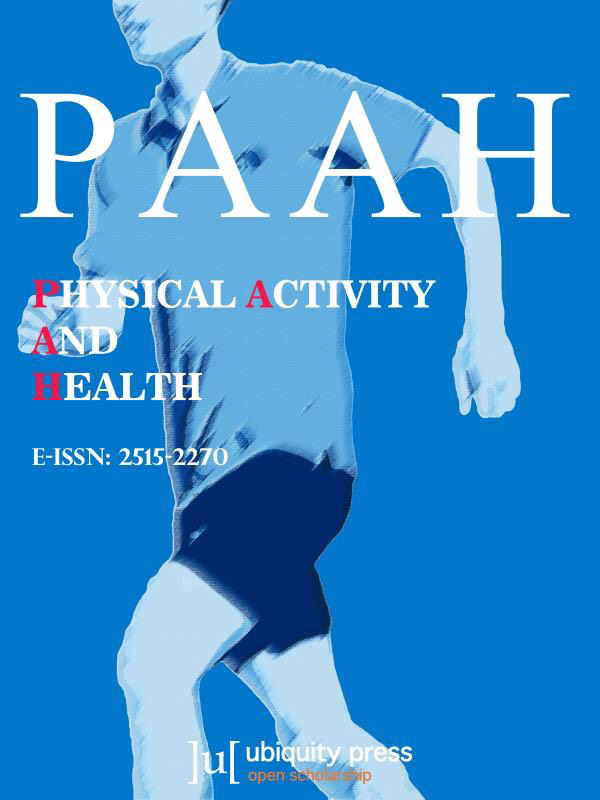
Systematic Review
All schools of Tai Chi chuan can improve the mental health of the elderly.
Xianjian C, Datao X
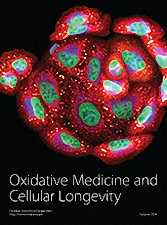
Experimental Study
Dandelion polysaccharide (DP) can potentially reduce iron overload in hepatocellular carcinoma (HCC) by downregulating hepcidin levels and inhibiting the IL-6-activated JAK-STAT signaling pathway.
Ren F, Yang Y, Wu K, Zhao T, Shi Y, Song M, Li J

Review Article
Eating fruits such as blueberry, prunes, kiwi, and raisins positively influences gut bacteria leading to improved bowel movements and constipation relief.
Katsirma Z, Dimidi E, Rodriguez-Mateos A, Whelan K
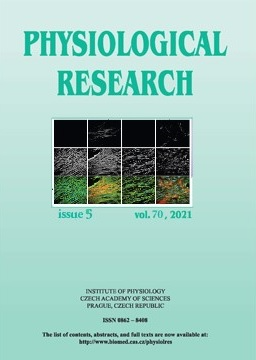
Review Article
Tea and coffee possess health promoting properties and can effectively prevent and treat metabolic disorders, including obesity, through the suppression of fat storage.
Sirotkin AV, Kolesarova A

Experimental Study
Ginger supplementation can prevent ethanol-induced reproductive dysfunction by improving hormone levels, reducing oxidative damage, inflammation, and regulating genes involved in testosterone synthesis.
Li N, Xing Y, Sultan AH, Raeeszadeh M, Akbari A, Liu H

Experimental Study
The Lycium ruthenicum Murr variety of goji berry exhibits a stronger antioxidant activity and antiproliferative effect on cancer cells compared to Lycium barbarum L.
Xiong L, Deng N, Zheng B, Li T, Liu RH

Review Article
Coffee's bioactive compounds may exhibit various health benefits such as antioxidant and anti-inflammatory properties on the digestive tract and stimulating effects on motor function.
Iriondo-DeHond A, Uranga JA, del Castillo MD, Abalo R

Review Article
Regular coffee consumption, due to its bioactive compounds, may have protective effects against chronic disorders and certain neurodegenerative conditions.
Socała K, Szopa A, Serefko A, Poleszak E, Wlaź P

Network Pharmacology
Kushen-based traditional Chinese medicine formulations show considerable potential and effectiveness in treating ulcerative colitis with meaningful improvement in clinical remission rate.
Chen M, Ding Y, Tong Z
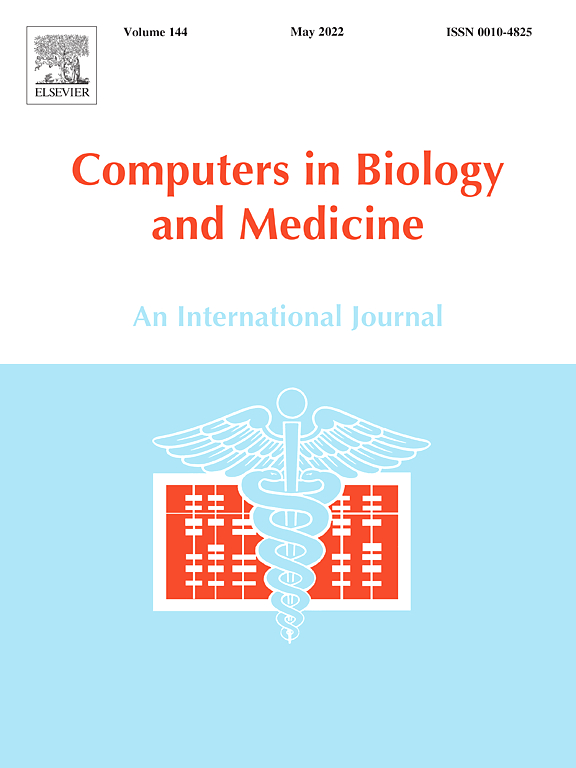
Network Pharmacology
Ba Ji Tian may prevent osteoporosis through the ovarian steroidogenesis signaling pathway. The anti-osteoporosis targets of Ba Ji Tian mainly play a role in the response to steroid hormones.
Liu ZW, Luo ZH, Meng QQ, Zhong PC, Hu YJ, Shen XL

Review Article
Pumpkin seeds carry bioactive compounds with antidiabetic, antidepressant, antioxidant, antitumor, and cytoprotective activities, also aiding in microbiological infections and specific organ disorders.
Dotto JM, Chacha JS
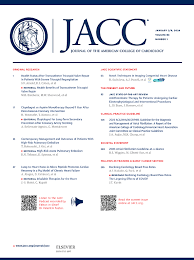
Randomised Controlled Trial
Incorporating daily doses of walnuts into the diet of elderly individuals significantly reduces the concentrations of several inflammatory biomarkers.
Cofán M, Rajaram S, Sala-Vila A, Valls-Pedret C, Serra-Mir M, Roth I, Freitas-Simoes TM, Bitok E, Sabaté J, Ros E
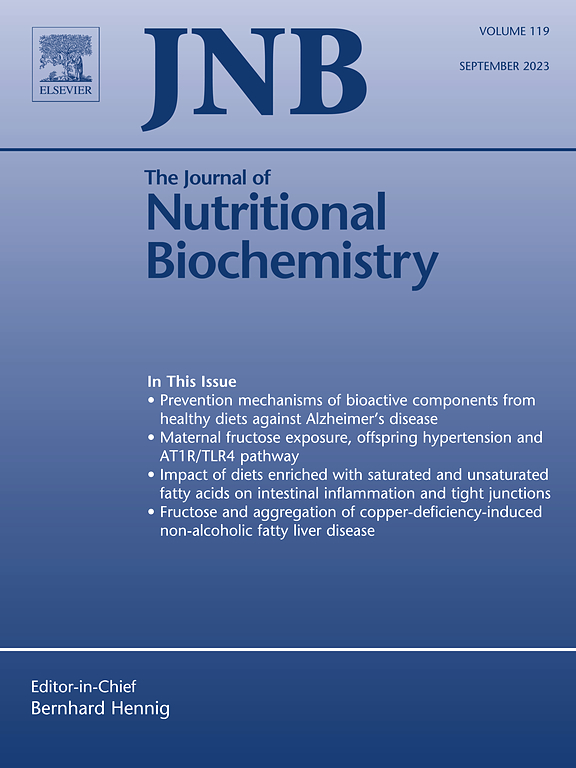
Review Article
Catechin-rich green tea extract (GTE) exercised anti-inflammatory activities can be beneficial in managing Nonalcoholic fatty liver disease (NAFLD) by reducing liver injury and gut-derived endotoxins.
Hodges JK, Sasaki GY, Bruno RS

Animal Study
Jian-Pi-Yi-Shen, a traditional Chinese medicine, helps treat anemia in chronic kidney disease by stimulating erythropoietin production and regulating iron recycling.
Wang F, Yu H, Huang S, Zheng L, Zheng P, Zhang S, Li S, Chen J

Review Article
Honey's phytochemical components and bioactive compounds have potential antiviral effects, potentially making it an effective natural product against COVID-19.
Al-Hatamleh MAI, Hatmal MM, Sattar K, Ahmad S, Mustafa MZ, Bittencourt MDC, Mohamud R

Experimental Study
Jujube seed extract has been found to primarily reduce anxiety by regulating the GABAergic and serotonergic synapse pathways, specifically modulating GABRA1, HTR1A, and HTR2A.
Chen L, Zhang X, Hu C, Zhang Y, Zhang L, Kan J, Li B, Du J

Experimental Study
The major components of green tea and coffee, EGCG and CGA respectively, may have anti-cancer effects, though these effects seem to vary for different types of cancer.
Hayakawa S, Ohishi T, Miyoshi N, Oishi Y, Nakamura Y, Isemura M
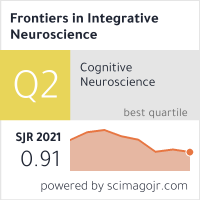
Experimental Study
Needling at the GB20 acupoint in Traditional Chinese Medicine can reverse the expression of certain genes related to axon development and regeneration in optic neuritis.
Chen J, Zhang L, Gan X, Zhang R, He Y, Lv Q, Fu H, Liu X, Miao L

Systematic Review
Danggui Shaoyao San may regulate multiple biological pathways related to Alzheimer's disease pathogenesis, such as the oxidative stress and inflammatory reaction processes.
Wu, Q., Chen, Y., Gu, Y. et al.
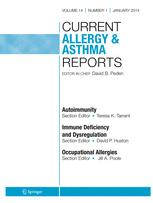
Review Article
Traditional Chinese Medicine, specifically acupuncture, demonstrates promising effects in managing allergic diseases like allergic rhinitis and asthma.
Chan HHL, Ng T

Review Article
Green tea polyphenols can potentially protect against neurodegenerative disorders like Parkinson's Disease through antioxidant, anti-inflammatory, and neuroprotective actions.
Malar DS, Prasanth MI, Brimson JM, Sharika R, Sivamaruthi BS, Chaiyasut C, Tencomnao T

Review Article
Herbal medicines were shown to normalize female hormones, diminish male hormones, recover the estrous cycle, ameliorate insulin resistance, and improve lipid metabolism in PCOS.
Kwon Chan-Young, Cho Ik-Hyun, Park Kyoung Sun

Systematic Review
The pooled results suggested that acupuncture led to moderate improvements in hot flashes, fatigue, and stiffness.
Yuanqing P, Yong T, Haiqian L, Gen C, Shen X, Dong J, Qi C, Miaomiao Q.

Network Pharmacology
Chrysanthemum morifolium Ramat. ethanol extract (CEE) presents a potential protective effect on lipopolysaccharide induced acute lung injury in mice.
Liu G, Zheng Q, Pan K, Xu X

Systematic Review
Traditional Chinese medicine could potentially serve as an effective alternative therapy for managing Psoriasis vulgaris.
Dai D, Wu H, He C, Wang X, Luo Y, Song P

Theoretical Article
Coffee, like many fruits and vegetables, activates a cellular response that boosts antioxidants and repair enzymes, which contributes to a lower risk of several diseases.
Kolb H, Kempf K, Martin S

Positive effects of acupuncture and electroacupuncture were observed in regulating gastric motility, gastric accommodation, mental status, gastrointestinal hormones, and central and autonomic functions while improving dyspeptic symptoms and quality of life.
Guo Y, Wei W, Chen JD
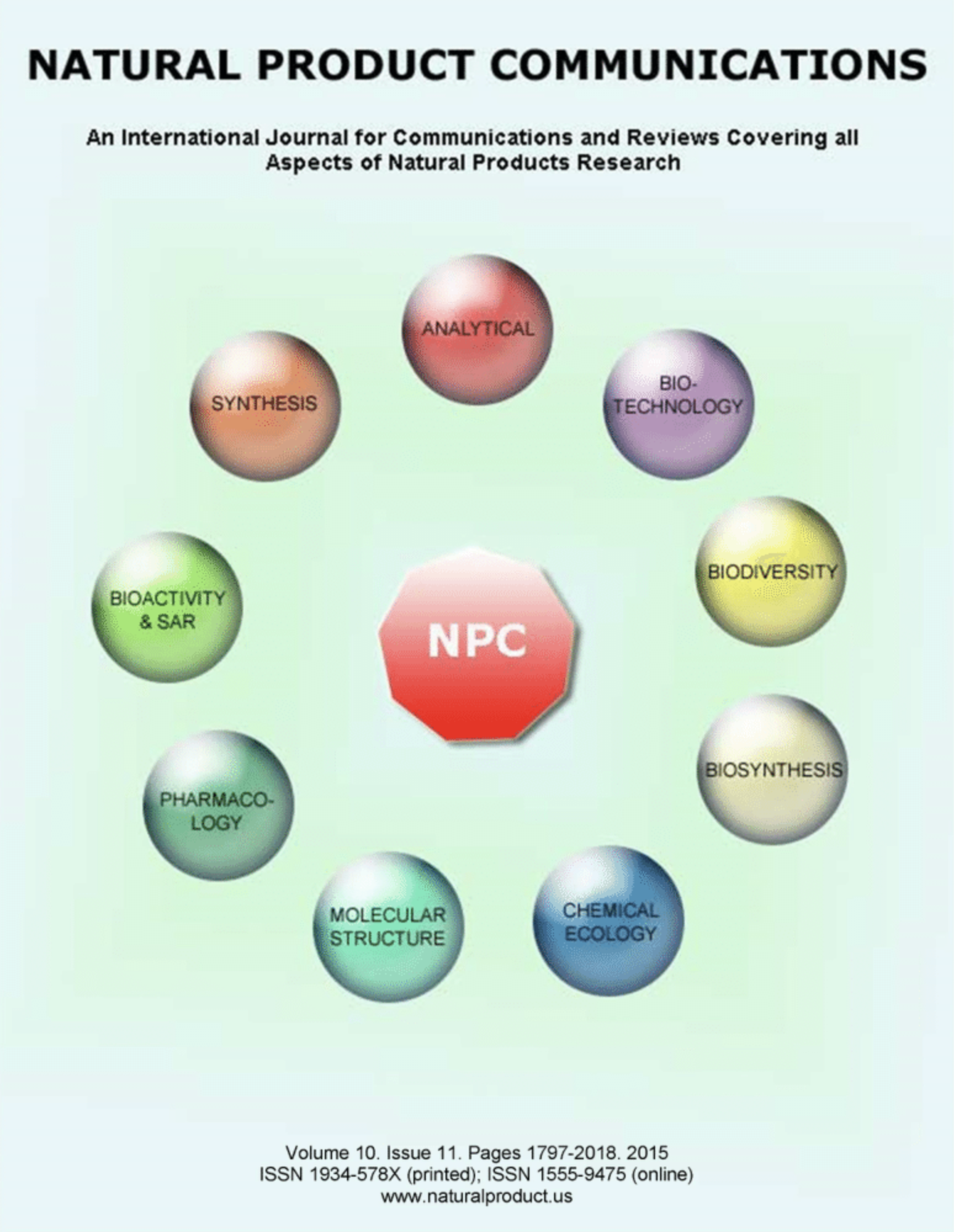
The pharmacological actions of Coix seed in gastric cancer treatment may involve pathways in cancer, the DNA damage response, transcription factor binding, the apoptotic process, and the cell–cell junction.
Zhang, F., Liu, X., Huo, B., Li, B., & Zhang, R. (

Review Article
Ginger, through various methods, exhibits promising pain reduction effects for conditions such as dysmenorrhea, muscle soreness, osteoarthritis, low back pain, and migraines.
Rondanelli M, Fossari F, Vecchio V, Gasparri C, Peroni G, Spadaccini D, Riva A, Petrangolini G, Iannello G, Nichetti M, Infantino V, Perna S

Systematic Review
Acupuncture at Zusanli (ST36) might be effective in reducing injuries induced by sepsis in various organs by reducing oxidative stress and inflammation.
Lai F, Ren Y, Lai C, Chen R, Yin X, Tan C, Li J, Yang C, Liang G, Li J, Zeng R

Meta-Analysis
Consumption of raw milk early in life appears to provide protection against asthma and allergies, regardless of whether children live on farms or in rural, non-farm areas.
Brick T, Hettinga K, Kirchner B, Pfaffl MW, Ege MJ

Animal Study
A traditional Chinese prescription, Yu Ping Feng San, significantly mitigates symptoms in cases of asthma recurrence, outperforming commonly prescribed asthma medications.
Bao K, Yuan W, Zhou Y, Chen Y, Yu X, Wang X, Jia Z, Yu X, Wang X, Yao L, Wang S, Xu Y, Zhang Y, Zheng J and Hong M

Network Pharmacology
Chinese medicine herb Bai Zhu might combat chronic gastritis by influencing inflammatory response, amino acid synthesis and energy metabolism.
Yang S, Zhang J, Yan Y, Yang M, Li C, Li J, Zhong L, Gong Q, Yu H

Network Pharmacology
Traditional Chinese medicine (TCM) holds potential to regulate immune-mediated inflammatory diseases by adjusting the imbalance of the Th17/Treg axis.
Xu YY, Wang DM, Liang HS, Liu ZH, Li JX, Wang MJ, Chen XM, Balak DMW, Radstake TRDJ, Huang RY, Lu CJ

Review Article
Coffee and decaffeinated coffee appear to provide long-term protection against developing type 2 diabetes, potentially due to the influence of chlorogenic acids.
Williamson G

Experimental Study
Pu-erh tea's ability to lower blood pressure is primarily due to theabrownins and caffeine, which cause vasodilation irrespective of the endothelium.
Luo Dan, Chen Xuejiao, Zhu Xu, Liu Shuang, Li Jie, Xu Jianping, Zhao Jinhua, Ji Xu

Clinical Study
Anthocyanin supplements improve vision health by relaxing ciliary muscles, regenerating rhodopsin, and enhancing retinal blood circulation.
Nomi , Iwasaki-Kurashige , Matsumoto
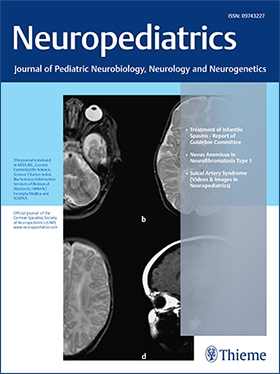
Review Article
Currently, acupuncture is considered to be a safe, helpful, and available alternative option for patients who have not responded to or complied with conventional pharmacotherapy.
Doll, E., Threlkeld, B., Graff, D., Clemons, R., Mittel, O., Sowell, M. K.

Network Pharmacology
Guizhi Fuling Wan, a traditional herbal formula, can improve peripheral blood flow in menopausal hot flush sufferers, despite not changing the frequency or severity of the flushes.
Li , Hung , Li , Yang

Systematic Review
Oral administration of honey is associated with increased serum testosterone levels in males, supported by in vivo studies suggesting mechanisms involving luteinizing hormone production, Leydig cell viability, oxidative damage reduction, enhanced StAR gene expression, and aromatase activity inhibition.
Banihani SA

Systematic Review
The collective evidence, which is mainly based on in vivo system studies, reveals that oral administration of honey increases serum testosterone level in males.
Banihani SA

Review Article
The diet might influence the onset and pathophysiology of ulcerative colitis, and can potentially be used in its management.
Keshteli AH, Madsen KL, Dieleman LA

Review Article
Chinese herbal compounds can potentially treat cholelithiasis by improving biliary dynamics, protecting liver function, reducing cholesterol, and managing inflammation.
Chen Q, Zhang Y, Li S, Chen S, Lin X, Li C, Asakawa T

Systematic Review
Drinking certain types of mineral water can positively influence metabolic syndrome factors like blood pressure, cholesterol, and blood sugar levels.
Costa-Vieira D, Monteiro R, Martins MJ
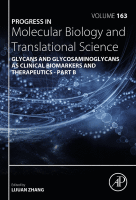
Network Pharmacology
Tremella fuciformis polysaccharide, a major bioactive component in the edible medicinal mushroom, exhibits substantial health benefits, including enhancing the immune system, combatting tumors, and delaying aging.
Yang D, Liu Y, Zhang L.

Systematic Review
Acupuncture as an adjunctive therapy has antihypertensive effect.
Juan Li ,1 Mingsheng Sun ,2 Jing Ye,2 Yuxi Li ,2 Rongjiang Jin ,1 Hui Zheng ,2 and Fanrong Liang 2

Review Article
Evidence indicates that acupuncture treatment may be of benefit in several neuropsychiatric disorders, including depression, anxiety, schizophrenia, and Alzheimer's Disease.
Tu CH, MacDonald I, Chen YH

Systematic Review
The health benefits of goji berries include enhancing hemopoiesis, antiradiation, antiaging, anticancer, improvement of immunity, and antioxidation.
Zheng Feei Ma, Hongxia Zhang, Sue Siang Teh, Chee Woon Wang, Yutong Zhang, Frank Hayford, Liuyi Wang, Tong Ma, Zihan Dong, Yan Zhang, Yifan Zhu,

Systematic Review
Goji berries, rich in antioxidants, confer health benefits including protection against aging, cancer, and radiation, as well as enhancing immunity and blood production.
Zheng Feei Ma, Hongxia Zhang, Sue Siang Teh, Chee Woon Wang, Yutong Zhang, Frank Hayford, Liuyi Wang, Tong Ma, Zihan Dong, Yan Zhang, Yifan Zhu,
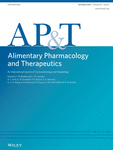
Randomised Controlled Trial
Kiwifruit increases water retention in the small bowel and ascending colon and increases total colonic volume. It could be used as a dietary alternative to laxatives in mild constipation.
Wilkinson‐Smith V, Dellschaft N, Ansell J, Hoad C, Marciani L, Gowland P, Spiller R
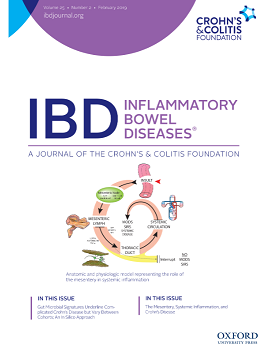
Practice Guideline
Acupuncture has been shown to decrease disease activity and inflammation via increase of vagal activity in inflammatory bowel disease.
Gengqing Song, MD, Claudio Fiocchi, MD, Jean-Paul Achkar, MD

Experimental Study
The Jian-Pi-Yi-Shen Formula (JPYSF) has been found to significantly improve chronic kidney disease, potentially through the modulation of the mitochondrial quality control network.
Liu X, Chen J, Liu X, Wang D, Zheng P, Qi A, Yi T, Li S

Animal Study
Welsh onion root extract administration influenced aromatase production, enhanced the estrogen steroid synthesis, and consequently restored the estrogenic feedback mechanism on the pituitary-ovary system.
Lee YH, Yang H, Lee SR, Kwon SW, Hong EJ, Lee HW.

Review Article
(-)-Epigallocatechingallate (EGCG), a natural product, has potent anti-proliferation, anti-metastasis, and pro-apoptosis effects on cervical cancer cells, enhancing the effects of conventional drugs.
Wang YQ, Lu JL, Liang YR, Li QS

Experimental Study
Matcha green tea potentially inhibits the growth of breast cancer cells by disrupting metabolic action within the cells and reprogramming their activities.
Bonuccelli G, Sotgia F, Lisanti MP

The consumption of epicatechin, plentiful in foods like cocoa, positively influences memory, executive function, and processing speed, particularly in older adults.
Haskell-Ramsay C, Schmitt J, Actis-Goretta L

Review Article
Acupuncture effectively manages a range of post-spinal cord injury complications, including motor and sensory dysfunction, pain, neurogenic bowel and bladder, pressure ulcers, spasticity, and osteoporosis.
Qianqian, F., Omer, C., Lize, X., & Yun, X.

Review Article
Lycopene may improve vascular function and contributes to the primary and secondary prevention of cardiovascular disorders.
Mozos, I., Stoian, D., Caraba, A., Malainer, C., Horbańczuk, J. O., & Atanasov, A. G

Systematic Review
Acupuncture alone or combined with other treatment modalities is beneficial to the clinical conditions of rheumatoid arthritis without adverse effects reported and can improve function and quality of life and is worth trying.
Pei-Chi Chou and Heng-Yi Chu
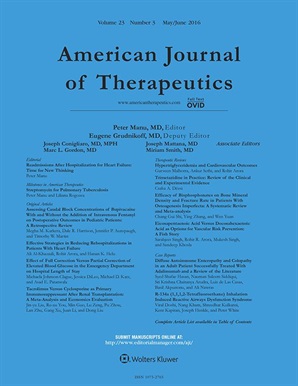
Randomised Controlled Trial
Cherry juice increases sleep time and efficiency in older adults with insomnia, potentially due to its inhibition of a process that degrades tryptophan and stimulates inflammation.
Losso JN, Finley JW, Karki N, Liu AG, Prudente A, Tipton R, Yu Y, Greenway FL

Theoretical Article
Traditional Chinese medicines have shown promising benefits for prostate cancer treatment due to unique formulas, extracts, and compounds that exhibit anti-cancer effects.
Wang X, Fang G, Pang Y

Meta-Analysis
Children with attention-deficit hyperactivity disorder are found to have lower ferritin levels and are more likely to have iron deficiency.
Tseng PT, Cheng YS, Yen CF, Chen YW, Stubbs B, Whiteley P, Carvalho AF, Li DJ, Chen TY, Yang WC, Tang CH, Chu CS, Yang WC, Liang HY, Wu CK, Lin PY

Review Article
Honey, a natural food supplement, emerges as a potent therapeutic antioxidant with diverse medicinal effects, including wound healing, antibacterial, anti-inflammatory, antifungal, antiviral, and antidiabetic properties, suggesting its potential as a novel antioxidant in managing oxidative stress-related diseases.
Ahmed S, Sulaiman SA, Baig AA, Ibrahim M, Liaqat S, Fatima S, Jabeen S, Shamim N, Othman NH

Systematic Review
Radish has been identified as having antidiabetic effects, making it favorable for those with diabetic conditions.
Saleem Ali Banihani
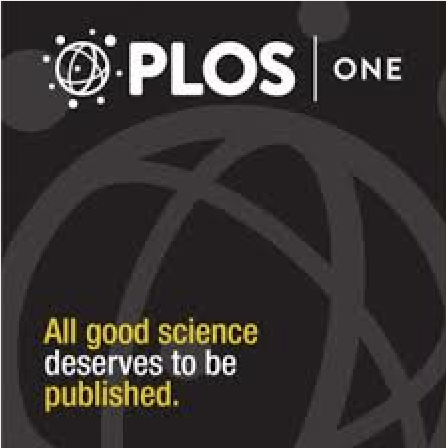
Systematic Review
Acupuncture is non-inferior to hormone therapy or other applied relaxation therapies in alleviating the symptoms of menopause for its safety, non-invasive and especially considering the side effect of hormone therapy.
Chien TJ, Hsu CH, Liu CY, Fang CJ.

Review Article
Kiwifruits can relieve constipation and irritable bowel syndrome, potentially through protease-activated signaling, modulation of microflora, changes in colonic methane, bile flux, or mediation of inflammatory processes.
Bayer SB, Gearry RB, Drummond LN
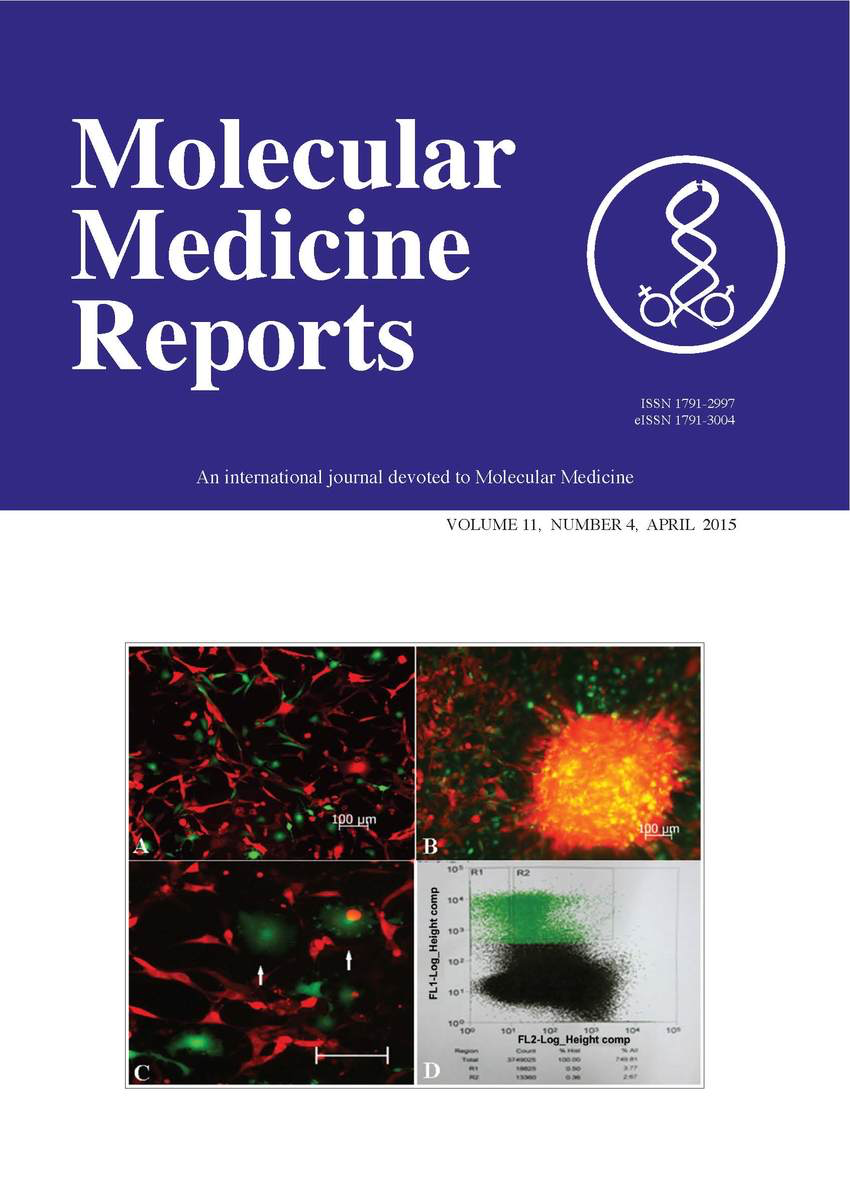
Systematic Review
Tremella fuciformis polysaccharide alleviated hydrogen peroxide‑induced oxidative stress and apoptosis in skin fibroblasts via upregulation of SIRT1 expression, indicating that TFPS may act as a potential therapeutic agent for oxidative‑stress‑associated skin diseases and aging.
Shen T, Duan C, Chen B, Li M, Ruan Y, Xu D, Shi D, Yu D, Li J, Wang C.

Systematic Review
Of the 7 clinical trials included, five evaluating individuals with hypertension observed a significant reduction in systolic and/or diastolic blood pressure. The two articles that evaluated individuals with dyslipidemia showed improvement in lipid profile.
Carolina Alves Cardoso, Gláucia Maria Moraes de Oliveira, Luciana de Almeida Vittori Gouveia, Annie Seixas Bello Moreira & Glorimar Rosa

Animal Study
Dried plums potentially prevent and reverse bone loss in postmenopausal women facing osteoporosis, offering a promising functional food therapy solution with long-lasting effects.
Arjmandi BH, Johnson SA, Pourafshar S, Navaei N, George KS, Hooshmand S, Chai SC, Akhavan NS

Review Article
Dried plums, or prunes, have potential to exert beneficial effects on bone health and may help in combating osteoporosis in postmenopausal women, if consumed as part of their recommended fruit intake.
Wallace T

Experimental Study
When combined, Silibinin and Pu-erh tea extract prove more effective in preventing non-alcoholic fatty liver disease than when used individually.
Wen-Yi Hu, Xiao-Hui Ma, Wang-Yi Zhou, Xin-Xin Li, Ting-Ting Sun, He Sun

Network Pharmacology
A mixture of Chrysanthemum indicum Linne flower and Cinnamomum cassia significantly mitigates hyperuricemia in rats by inhibiting xanthine oxidase activity and enhancing uric acid excretion.
Lee YS, Son E, Kim SH, Lee YM, Kim OS, Kim DS

Review Article
Moderate beer consumption could potentially alleviate menopausal symptoms by influencing the internal estrogen receptors through the phenolic compounds present in beer.
Sandoval-Ramírez BA, Lamuela-Raventós RM, Estruch R, Sasot G, Doménech M, Tresserra-Rimbau A

Experimental Study
Angelica Sinensis polysaccharide treatment has been found to effectively alleviate anaemia of chronic disease in rats by inhibiting inflammatory pathways and mobilizing iron.
Wang K, Wu J, Cheng F, Huang X, Zeng F, Zhang Y
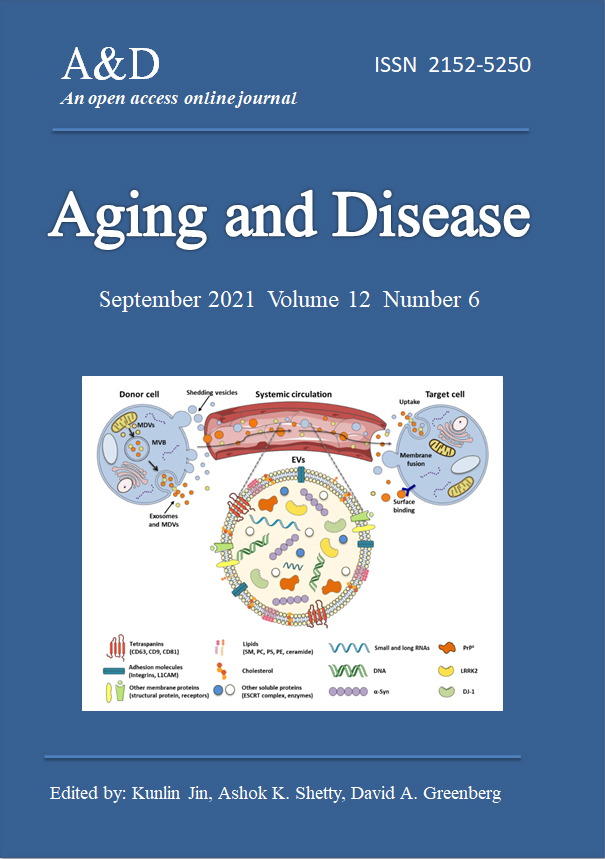
Review Article
The widely-used herbal formula Dang Gui Shao Yao San can alleviate cognitive dysfunction in Alzheimer's disease by improving the function of various central nervous systems.
Fu X, Wang Q, Wang Z, Kuang H, Jiang P

Review Article
Acupuncture has the potential to treat gastrointestinal (GI) disorders by regulating GI motility, the GI barrier, visceral sensitivity, and the brain-gut axis.
Li H, He T, Xu Q, Li Z, Liu Y, Li F, Yang BF, Liu CZ.

Systematic Review
Acupuncture seems to be an effective add-on treatment in patients with depression and, to a lesser degree, in patients with schizophrenia.
Bosch P, van den Noort M, Staudte H, Lim S.

Mung bean sprout extract has potent antiviral and to a lesser extent, prophylactic activities against both RSV and HSV-1, and in case of HSV-1, these activities were comparable to Acyclovir.
Hafidh, R.R., Abdulamir, A.S., Abu Bakar, F. et al.
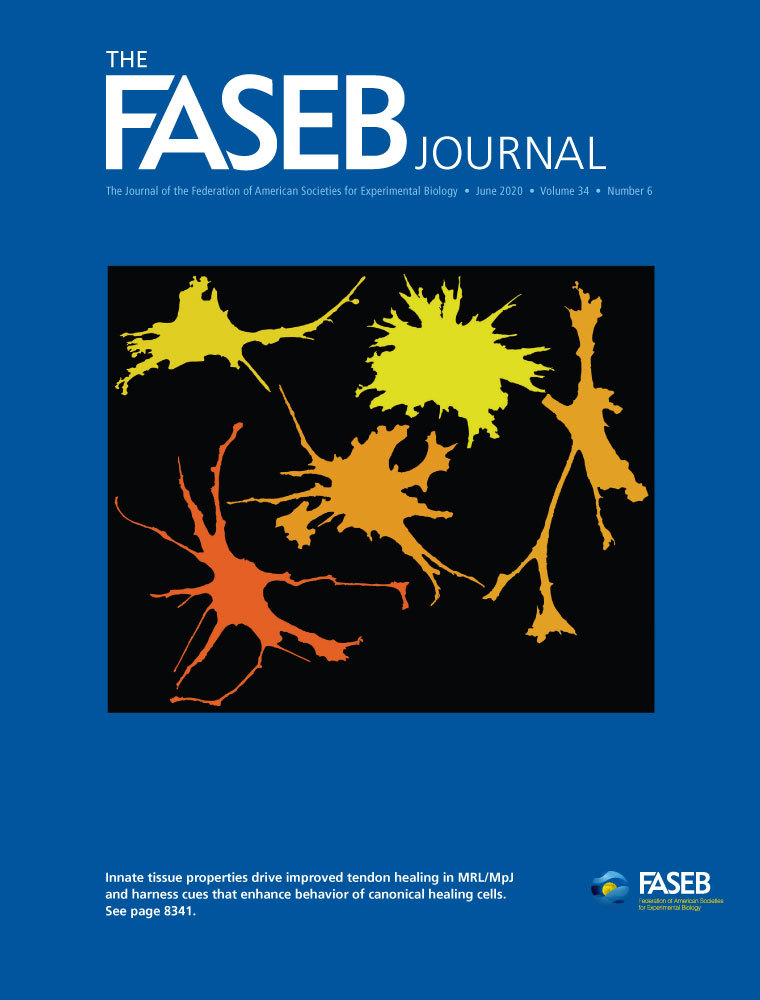
Review Article
Serotonin function, influenced by vitamin D and omega-3 fatty acids, plays a critical role in neuropsychiatric disorders and certain behavioral functions.
Patrick RP, Ames BN
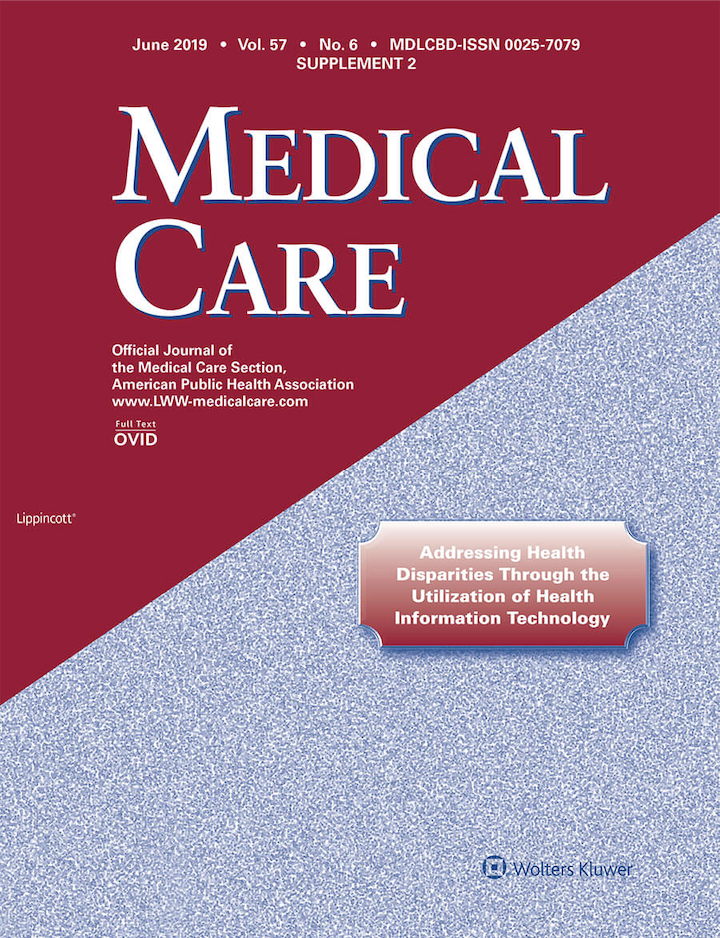
Randomised Controlled Trial
Improvement in post traumatic stress disorder severity was significantly greater among those receiving acupuncture than in those receiving usual PTSD care.
Engel CC, Cordova EH, Benedek DM, Liu X, Gore KL, Goertz C, et al.
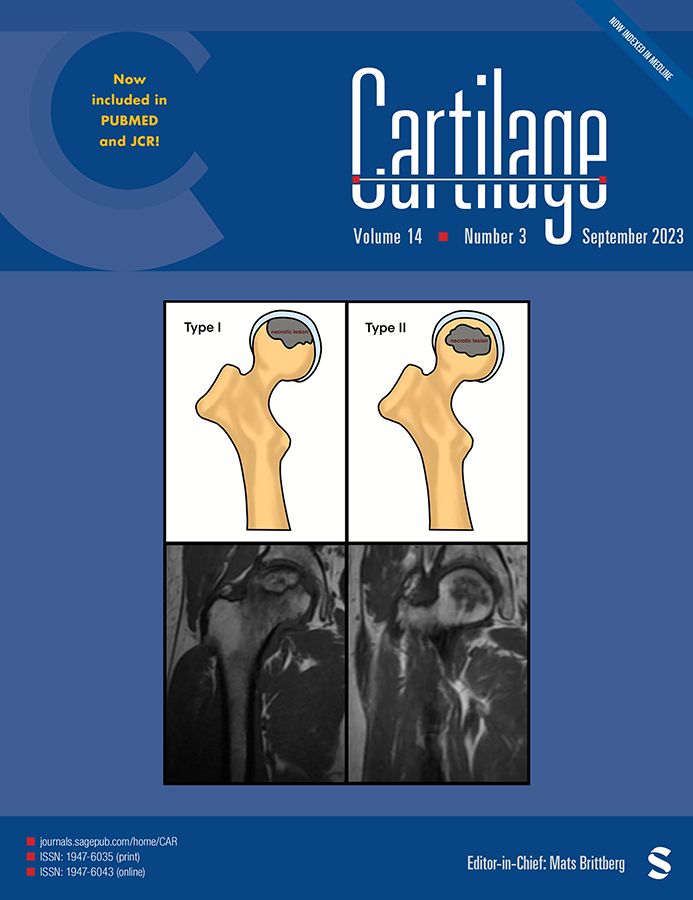
Review Article
A dietary supplement Avocado/Soybean Unsaponifiables aids in treating Osteoarthritis by preventing cartilage degradation and promoting cartilage repair, thereby reducing pain and enhancing joint functionality.
Christiansen BA, Bhatti S, Goudarzi R, Emami S

Systematic Review
Saffron, derived from Crocus sativus flower, shows similar efficacy to antidepressant medications in treating major depression, potentially due to its variety of biochemical effects.
Lopresti AL, Drummond PD
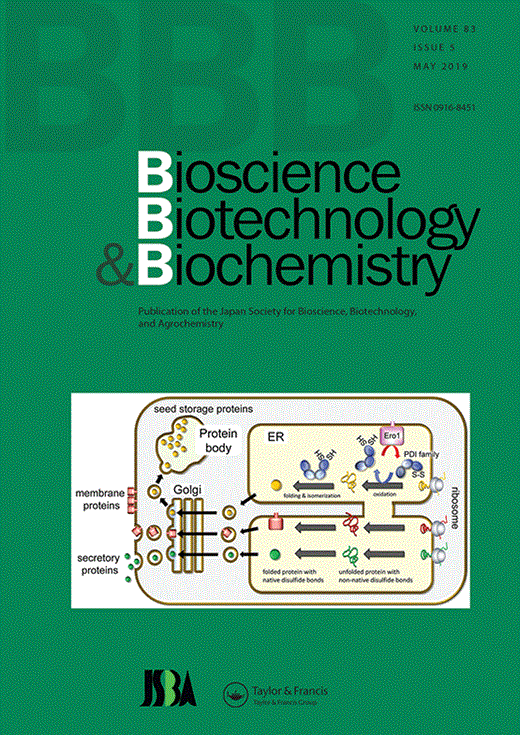
Network Pharmacology
Chrysanthemum flower oil can effectively decrease uric acid levels in rats, by reducing production in the liver and enhancing excretion from the kidney.
Honda S, Kawamoto S, Tanaka H, Kishida H, Kitagawa M, Nakai Y, Abe K, Hirata D
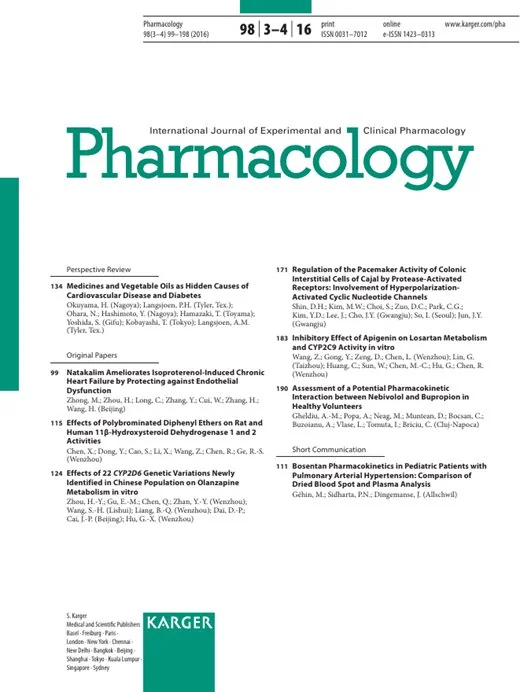
Systematic Review
Green tea polyphenols may enhance effectiveness of specific breast cancer endocrine treatments through both estrogen-dependent and -independent mechanisms.
Yiannakopoulou EC
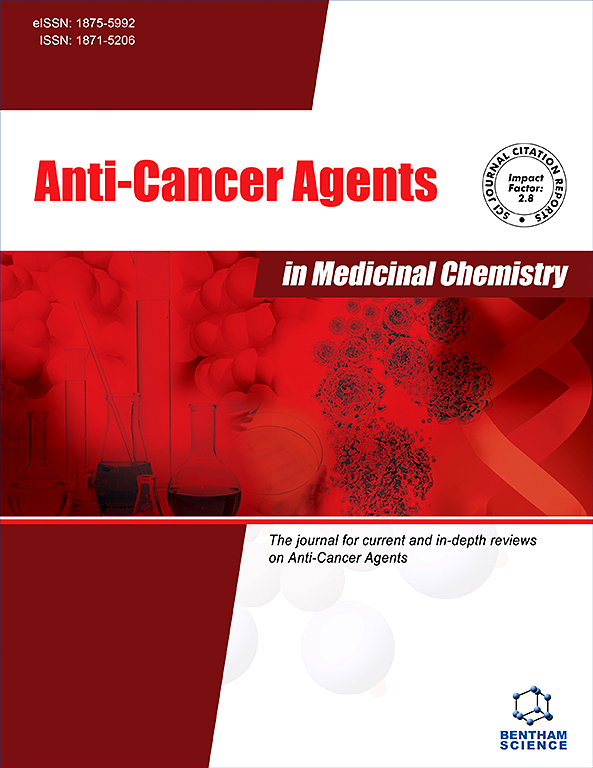
Review Article
Blueberries, due to their phenolic compounds, show potential as both dietary and supplemental anti-cancer agents by inhibiting cancer cell growth and promoting apoptosis.
Johnson S, Arjmandi B

Animal Study
Dried plum intake uniquely improves bone density, promotes growth of vertebral trabecular bone, prevents bone loss in tibia, and positively adjusts bone metabolism.
Rendina E, Hembree KD, Davis MKR, Marlow D, Clarke SL, Halloran BP, Lucas EA, Smith BJ
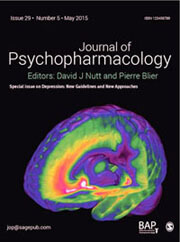
Review Article
Curcumin, a component of Indian spice turmeric, presents a potential natural treatment for depression, influencing neurotransmitters and protecting against several biological systems compromised in depression.
Lopresti AL, Hood SD, Drummond PD

Experimental Study
Korean pears potentially boost key alcohol-metabolizing enzymes, aiding alcohol detoxification, with effects that may vary due to human ALDH2 polymorphisms.
Lee HS, Isse T, Kawamoto T, Woo HS, Kim AK, Park JY, Yang M

Experimental Study
Angelica sinensis polysaccharide (ASP) efficiently stimulates erythropoietin secretion and suppresses the liver's hepcidin expression, potentially aiding in treatments of hepcidin-induced diseases.
Wang KP, Zeng F, Liu JY, Guo D, Zhang Y
Executive Summary
Write an executive summary in the form of a blog article on the topic of "Research into Chinese medicine treatment for Mechanism" summarising the research below and using language that can be easily understood by patients and avoiding medical jargon using a professional and caring tone of voice.
Write an executive summary in the form of a blog article on the topic of "Researched Chinese medicine treatments for Mechanism" summarising the research below in an objective and easy to understand way, and using language that can be easily understood by patients. Group the article into Chinese medicine treatments first, followed by nutrition and other treatments. Avoid using medical jargon and use a professional and caring tone of voice.
Write me a concise but easy to understand executive summary on the topic of "Chinese medicine treatments for Mechanism" based on the following research that I will give you. Your summary should be 2 paragraphs long in Australian English spelling and include references to the studies.
A Network Pharmacology published in 2024 in the journal Medicine found that The Danggui Sini Decoction, a Traditional Chinese Medicine, may prevent myocardial infarction by positively influencing cell proliferation, inflammatory responses, and aging processes. The researchers utilized network pharmacology and molecular docking to uncover the main components and targets of Danggui Sini Decoction (DSD) in the treatment of myocardial infarction. They examined myocardial infarction-related genes using the Genecards database and screened the active ingredients of DSD based on criteria relating to oral bioavailability and drug likeness. To understand the relationship between these components and their potential targets, the researchers generated a protein-protein interaction network diagram using the STRING database. Findings of the investigation led to the identification of 120 primary active ingredients and 561 putative active target genes. The main therapeutic targets were a number of genes associated with processes such as inflammation and cell proliferation. Furthermore, the researchers conducted gene ontology and Kyoto encyclopedia of gene and genome analyses to understand the pathways that DSD acts upon in treating myocardial infarction. The results indicated that DSD treatment involves the positive regulation of certain cellular cascades signifying positive impact on cell proliferation, inflammatory responses, aging, and other biological processes. Molecular docking results indicate potential interactions between DSD and certain genes, suggesting its role in treatment.
A Systematic Review published in 2024 in the journal Journal of Ethnopharmacology found that Guizhi Fuling Wan, a traditional Chinese herbal formula, can inhibit endometriosis growth and enhance the effects of western medicines used to treat the condition. In the methodology, a bibliographic assessment of publications on "Guizhi Fuling Wan" and "endometriosis" indexed in international and chinese databases was conducted. Out of these, five pre-clinical studies and thirteen clinical were selected. Thereafter, targeted molecules of each herb in the formula were extracted from a Traditional Chinese Medicine Systems Pharmacology Database and compared with endometriosis-related genes from DisGeNET. To expose potential therapeutic mechanisms of Guizhi Fuling Wan, pathway and gene ontology analyses were performed using David Bioinformatics Resources. In the results discussion, it was found that both pre-clinical and clinical studies suggested that Guizhi Fuling Wan can inhibit the growth of endometriotic lesions by modulating immunity, apoptosis-regulating molecules, and angiogenesis-associated factors, while also enhancing the effects of western medicines for endometriosis. The formula likely achieves this through its impact on key pathways involved in diabetes complications, Kaposi sarcoma-associated herpesvirus infection, human cytomegalovirus infection, and atherosclerosis, which all regulate inflammation, angiogenesis, and apoptosis. The review also notes a strong connection between endometriosis and abnormal inflammatory, angiogenic, and apoptotic activities.
A Review Article published in 2024 in the journal Molecules found that Beer, specifically low-purine and high-active ingredient beer such as ginger, ginseng, and coix-lily, possess functional ingredients contributing to controlling chronic human diseases. The study incorporated a comprehensive analysis of information derived from PubMed, Google, CNKI, and ISI Web of Science databases, integrating published data from 1997 to 2024. The researchers set out to elucidate the physiological impacts of beer's functional ingredients, with an intense concentration on those exerting potential health benefits. The types of beer explored encompass those produced from pure barley malt, presenting low purine and high active ingredients. More specific attention was directed towards uniquely brewed variants such as ginger, ginseng, and coix-lily beer, which replicate ancestral practices from approximately 9000 years ago. The discussion of results inferred the observable health benefits of beer in combating 26 chronic diseases, attributing these effects primarily to the physiological behavior of the beer's polyphenols, melatonin, minerals, bitter acids, vitamins, and peptides. Importantly, these health impacts of beer were found to closely resemble those demonstrated by barley, signifying the consequential role of barley's functionality in the equation. Furthermore, it was highlighted that the production of low-purine beer could be facilitated through enzymatic and biological degradation and adsorption of purines, in conjunction with the addition of dandelion. This research, hence, provides a crucial scientific foundation for the advancement of functional beers that foster health benefits.
A Systematic Review published in 2024 in the journal Phytotherapy Research found that Noni fruit and its compounds demonstrate significant potential in cancer therapy by inducing apoptosis, arresting cell cycle, inhibiting angiogenesis, and modulating immune system. In this study, a systematic review was put forth to scrutinize the therapeutic effectiveness of Morinda citrifolia L., commonly known as Noni, specifically looking into its effects on various forms of cancer. The review employed an extensive search of various scientific databases to gather relevant literature. This included both in vitro and in vivo studies, as well as clinical trials, specifically focusing on the outcomes of Noni fruit and its phytoconstituents - anthraquinones, flavonoids, sugar derivatives, and neolignans - on cancer. A carefully structured keyword and criteria search ensured a robust collection and analysis of data. The plethora of studies compiled point out to Noni's complex role in cancer therapy, underlining its various bioactive elements and their methods of activity. Significant anticancer and chemopreventive potential of Noni was observed, establishing it as potentially a safe and effective option in cancer prevention and treatment.
A Review Article published in 2024 in the journal The Natural Products Journal found that Pumpkin seeds are recognised for their medicinal, nutritional, and cosmetic benefits, including anti-diabetic, heart disease prevention, anti-cancer, and antioxidant qualities. The review article undertakes a comprehensive exploration of the nutraceutical importance of pumpkin seeds. The methodology includes an examination of the various known substances in the seeds, such as phytoestrogens, unsaturated fatty acids, and vitamin E. The study then delves into the different benefits and therapeutic uses of these components stretching from medicinal to nutritional to cosmetic applications. The results of this research are diverse and impressive, with implications for several major health sectors. Their potential anti-diabetic and hypoglycemic properties could suggest a significant role in the management and prevention of diabetes. Meanwhile, the seeds' potential in cardiovascular disease prevention could help to address one of the most pressing global health issues. Moreover, potential anti-cancer properties imply that these seeds could even have a part to play in cancer prevention. The review also described potential additional qualities, such as antidepressant, anti-helminthic (parasite-removing), and antioxidant effects.
A Review Article published in 2024 in the journal Foods found that Jujube, a Chinese native plant with numerous active components, exhibits calming effects, nourishes blood, and strengthens the spleen and stomach, alongside promising neuroprotective and cardiovascular benefits. This study statistically evaluated and tracked the research status of Jujube over the past two decades. The research observed, among other things, the plant's traditional use in calming nerves, nourishing blood, and strengthening the spleen and stomach in traditional Chinese medicine. The study found that the Jujube has numerous effective components, including polysaccharides, phenols, and triterpene acids. The study delved into understanding how these components can provide a variety of pharmacological activities. Such activities include neuroprotection, as well as the prevention and treatment of cardiovascular diseases. The study also expounded comprehensively the molecular mechanisms and efficacies of Jujube. The research, therefore, provides an exhaustive appraisal of the pharmacological potentials of the Jujube plant and its prospective industrial relevance in food and pharmaceutical industries.
A Meta-Analysis published in 2023 in the journal Critical Reviews in Food Science and Nutrition found that Consuming carrots can significantly decrease the risk of cancer. The methodology used in this research involved examining the links between carrot intake and the incidence of cancer. The scope was broad, examining all studies published before June 2022 that offered risk estimates connecting cancer incidence with either carrot consumption, α-carotene intake, or α-carotene plasma levels. Possible sources of such studies included those found via digital searches, manually identified within other studies, or garnered from existing reviews. Analysis was carried out comparing the highest and lowest reported intakes from prospective studies, estimating summary relative risks using a random-effects model. The study's results indicated a strong correlation between carrot consumption and a notable reduction in cancer risk. This conclusion was derived from the analysis of 198 observational studies, 50 of which were prospective studies involving a total of 52,000 cases that specifically recorded carrot intake. Comparatively, on the correlation between α-carotene plasma levels and cancer risk, analysis from 30 prospective studies with 9,331 cases indicated that a higher presence of α-carotene also resulted in decreased cancer risk. Despite a moderate variance between studies, these findings serve as significant evidence in support of the anticancer benefits of carrots.
A Systematic Review published in 2023 in the journal Brain Research found that Pomegranate fruit and its phytochemicals may offer a novel, natural alternative for the treatment of pathological anxiety, with fewer adverse effects than traditional medications. Using a systematic review methodology, the researchers explored the potential anxiolytic (or anxiety-reducing) effects of pomegranate (PG) fruit and its natural compounds. Searches were conducted across numerous databases such as PubMed, ScienceDirect, Google Scholar, WorldWide Science, and Web of Science using specific predetermined terms. Only original articles meeting established inclusion criteria were chosen for review. The data collected from these articles provided information on the part and variety of pomegranates used, the species studied, sample size, anxiety model, dose, route and time of administration, reference drug, main results, and associated mechanisms of action. The review of 59 such studies revealed PG as well as compounds it contains - specifically anthocyanins, flavonoids, tannins, organic acids, and xanthonoids - as having potential anxiolytic effects. According to the existing literature, these effects appear to be driven by several molecular mechanisms. These include the inhibition of specific anxiety-linked receptors, activation of certain cellular pathways associated with anxiety reduction and resilience, modulation of inflammatory proteins, and reduction of oxidative stress. The results position pomegranate and its phytochemicals as a potentially new natural option for the treatment of anxiety disorders. This is the first review to focus on the anxiolytic impact of pomegranates.
A Experimental Study published in 2023 in the journal Heliyon found that Qi Shen Tang, a traditional Chinese medicine, was found to suppress retinal cell death in retinitis pigmentosa by inhibiting a process called ferroptosis. The researchers investigated the potential mechanism of Qi-Shen-Tang (QST), a combination of two traditional Chinese medicines, on retinitis pigmentosa, an eye disease. They induced a retinitis pigmentosa model in mice while subsequently treating them with QST. They then examined the impact of the medicine on the tissue morphology and function of the retina in these model mice, in addition to monitoring factors such as retinal blood flow and fundus structure. The study found that the treatment with QST led to notable improvements in the retinal tissue morphology and function. In addition, they observed an increase in retinal blood flow and normalization of the fundus structure. Following the treatment, the amounts of iron and malondialdehyde in the retinal tissue were significantly reduced, while the levels of superoxide dismutase, glutathione, and the protein expressions of various enzymes significantly increased. Molecular docking results also revealed potential interactions between the components of QST and key proteins of a particular signaling pathway, namely the Nuclear factor erythroid 2-related factor 2/ Glutathione peroxidase 4 pathway. The results suggest that QST may inhibit ferroptosis by suppressing this signaling pathway, thereby mitigating retinitis pigmentosa-induced damage to the retinal tissue.
A Theoretical Article published in 2023 in the journal Frontiers in Pharmacology found that Traditional Chinese medicine has been found to effectively treat ulcerative colitis by repairing various components of the damaged intestinal mucosal barrier. In the methodology, the study sought to uncover the efficacy of Traditional Chinese medicine (TCM) in treating ulcerative colitis (UC). The research began by acknowledging the key role that damage to the intestinal mucosal barrier plays in the development of UC. It then explored how TCM could combat UC by protecting and repairing various aspects of this barrier including the physical, chemical, immune, and biological barrier. In the results discussion, it was discovered that TCM not only increases the number of intestinal epithelial cells, tight junction proteins, and mucins, but also encourages the proliferation of intestinal stem cells, restores the abundance of the intestinal microbiota, and modulates immunity in the gut. Moreover, the study identified several upstream proteins and signaling pathways that were activated in the process. This gives hope to future treatment plans for UC using TCM, with the study providing a fundamental theoretical basis and new ideas for future investigations.
A Systematic Review published in 2023 in the journal Autoimmunity Reviews found that Intermittent fasting may potentially influence autoimmune diseases like type 1 diabetes and rheumatoid arthritis, by reducing inflammation and supporting cellular repair mechanisms. Extensive research was done through several electronic databases such as PubMed, Scopus, Embase, and Web of Science. Rigorous inclusion criteria were applied to filter the most relevant studies on the effects of intermittent fasting on autoimmune diseases. No reference to further research trials was mentioned in the methodology. The results indicate a potential link between intermittent fasting and the management of certain autoimmune diseases. Autoimmune diseases like type 1 diabetes, rheumatoid arthritis, and systemic lupus erythematosus exhibited improvements owing to the reduction in inflammatory markers, improvement in gut microbiota, and enhanced cellular repair resulting from autophagy induced by intermittent fasting. However, results concerning other autoimmune diseases like multiple sclerosis, systemic lupus erythematosus, thyroid diseases, and psoriasis were inconclusive.
A Review Article published in 2023 in the journal Chinese Herbal Medicines found that Chinese herbal medicines (CHMs) possess multiple advantages, including multiple targets, pathways, and low toxicity, for the treatment of prostate cancer. The research team undertook an in-depth review of experimental research and clinical practices related to the use of CHMs for prostate cancer treatment, with the data being sourced from PubMed, Embase, and Web of Science. The focus of the review was on recent studies published within the last five years. The research identified five CHM formulas and six single CHM extracts, along with 12 CHM-derived compounds. The research findings demonstrated that CHMs induced apoptosis, autophagy, and cell cycle arrest in prostate cancer cells, and concurrently suppressed angiogenesis, proliferation, and cell migration. The CHMs also displayed efficacy in overturning drug resistance and in enhancing anti-tumor immunity. The modes of action were identified as the phosphatidylinositol 3-kinase/protein kinase-B/mammalian target of rapamycin, androgen receptor, epidermal growth factor receptor, and Wnt/beta-catenin signaling pathways which are known to play key roles in the development of prostate cancer. Additionally, the researchers discussed the benefits of CHMs in treating hormone-sensitive and castration-resistant prostate cancer.
A Network Pharmacology published in 2023 in the journal Annals of Translational Medicine found that The research unveils luteolin, quercetin, and kaempferol in RALRG as promising complementary components for RP treatment, with a key role in managing oxidative stress and PI3K/AKT signaling pathways. The research used various databases such as Traditional Chinese Medicine Systems Pharmacology Database and Analysis Platform, GeneCards, and the Online Mendelian Inheritance in Man database to gather the ingredients of RALRG and potential targets of RP and RALRG. A protein-protein interaction network was constructed to visualize these interactions. The R program was utilized to perform functional enrichment. The researchers constructed a visual RALRG-RP-pathway pharmacology network using Cytoscape 3.9.1 and applied molecular docking to compute binding affinity. The research revealed a total of 132 effective active elements in RALRG correlating to 248 target genes. Ninety-two intersection target genes were discovered from the overlap of RP- and RALRG-related genes. These intersection targets were discovered to be primarily involved in oxidative stress, responding to metal ions, and handling chemical stress. Several molecular pathways such as PI3K-AKT and MAPK were identified as closely connected to RP therapy. A potential pharmacology network was designed for the RALRG-RP-pathway with AKT1 and JUN being considered the main targets. The active ingredients luteolin, quercetin, and kaempferol were highlighted as crucial for this mechanism. RALRG overall was established as a main regulator for oxidative stress and PI3K/AKT signaling pathways in the treatment of RP.
A Review Article published in 2023 in the journal Nutrients found that The bioactive peptides found in walnuts have potential neuroprotective effects, including reducing oxidative stress and neuroinflammation, and promoting autophagy and balance in the cholinergic system. The research method used includes the development of various procedures to prepare, isolate, purify, and identify the neuroprotective peptides found in walnuts. Different evaluation approaches were then used to gauge the activity of these peptides within experimental setups, placing emphasis on potential oxidative stress reduction, neuroinflammation mitigation, autophagy promotion, gut microflora regulation, and cholinergic system balance enhancement. The discussion of the results suggests the confirmed neuroprotective benefits of walnut-derived peptides. These peptides showcased their ability to reduce oxidative stress, combat neuroinflammation, stimulate autophagy, and regulate gut microflora and the cholinergic system. Consequently, these findings highlight the value of walnuts in diet, and the potential for these peptides to be utilized as functional food ingredients promoting neurohealth.
A Systematic Review published in 2023 in the journal Frontiers in Endocrinology found that Jia Wei Xiao Yao San could potentially enhance the effectiveness of antithyroid drugs in treating hyperthyroidism especially in symptom relief and side effect reduction. To evaluate this claim, a systematic and comprehensive dive into eight databases and three trial registries up until May 2023 was performed. From this, Randomized Controlled Trials (RCTs) were earmarked and subjected to further analysis using the Review Manager software application (RevMan 5.4) and Stata 14.0. Assessments of bias in these studies were conducted using the Cochrane risk of bias tool 1.0, while the GRADE tool was implemented for overall quality assessment. In addition, any case reports utilizing JWXYS in singular use and relevant pharmacological studies were summarized for further understanding. This investigation involved 13 RCTs with a total of 979 participants. It was found that, when compared with standalone antithyroid drug treatment, the combination of JWXYS and antithyroid drugs resulted in improved control of thyroid hormones, better efficacy in treating traditional Chinese medicinal syndrome, lesser incidence of goiter, fewer side effects, and lower levels of thyroid stimulating hormone receptor antibodies. Furthermore, dosage reduction of antithyroid drugs when used in combination with JWXYS also led to fewer side effects. However, when compared to antithyroid drugs treatment in a single trial, JWXYS showed mixed results indicating it is not recommended for use as a standalone treatment except in patients intolerant to antithyroid drugs. The evaluation of three case reports highlighted that patients may opt for traditional Chinese medicine only as an alternative due to severe side effects and recurrent relapses. Three other pharmacological studies showed the potential of JWXYS in restoring Th17/Treg balance, regulating thyroid cell growth, and alleviating oxidative stress in liver.
A Review Article published in 2023 in the journal Critical Reviews in Food Science and Nutrition found that Theabrownins, a major ingredient in dark tea, significantly contribute to multiple health benefits by modulating lipid metabolism, reducing weight gain, and preventing diseases, surpassing other tea types. The research focuses on theabrownins, macromolecular pigments found in dark tea, believed to have numerous health benefits. These pigments derive from the oxidative polymerization of tea polyphenols and are observed to have a reddish-brown color and a mellow taste. One of the primary aspects of the research is the method of generation of theabrownins, which is mainly through microbial fermentation. This method seemingly enhances the health-promoting qualities of dark tea, especially its hypolipidemic effect, compared to other tea variants. The results of the study affirm the host of health benefits provided by theabrownins - including the modulation of lipid metabolism, reduction in body weight gain, attenuation of diabetes, mitigation of NAFLD, scavenging ROS, and prevention of tumors. Particular attention was given to the role that theabrownins play in influencing the gut microbiota, leading to significant health benefits. Despite some limitations, these factual conclusions advocate the potential of dark tea in fostering human health, premised upon its theabrownins content.
A Experimental Study published in 2023 in the journal Foods found that The fermented jujube seeds extract significantly enhances sleep by binding to the GABA receptors, thus offers a promising natural alternative for sleep disorders treatment. Methodology: An aqueous extract of jujube seeds (ZW) was fermented, following a starch-removing enzymatic degradation process, to increase its γ-aminobutyric acid (GABA) content, resulting in a fermented product (ZW-FM). The sleep-promoting effect of ZW-FM was evaluated using rodent models; specifically, sleep tests were performed on ICR mice with pentobarbital-induced sleep, while the electroencephalography analysis was undertaken in Sprague Dawley rats. Awakening relief effects of ZW-FM were assessed using a caffeine-induced insomnia model. To understand the mechanism, GABA receptor type A (GABA) antagonists were used. Results: The groups given ZW-FM treatment displayed a longer sleep duration, particularly increased δ-wave time during non-rapid eye movement sleep, and reduced sleep latency. Particularly, the model treated with ZW-FM showed an increase in non-rapid-eye-movement sleep and a reduction in the REM sleep duration, brought about by caffeine treatment. The enhanced sleep induction caused by ZW-FM was hindered by GABA receptor antagonists, thereby validating the involvement of a GABAergic mechanism in promoting sleep.
A Animal Study published in 2023 in the journal European Journal of Medicinal Chemistry found that Jin Si Huang Ju tea, a traditional Chinese beverage, contains compounds that potentially reduce lipids, mitigate insulin resistance and reduce liver inflammation in vitro. The researchers identified 14 compounds in the Jinsi Huangju tea using different spectroscopic techniques, 11 of which had not been previously identified in this plant. Two of these compounds, apigenin-7-O-6″-malonylglucoside and luteolin-7-O-6″-malonylglucoside, were synthesized for the first time with a yield of 1.2% over 5 steps. In the findings, the natural compound apigenin-7-O-6″-malonylglucoside was found to inhibit the function of pancreatic lipase, reduce cellular lipid contents, and attenuate insulin resistance when tested in vitro. It was also observed to restore lipid and inflammatory profiles in plasma and the liver, as well as reduce hepatic steatosis in non-alcoholic fatty liver disease (NAFLD) mouse models. Thus, Jinsi Huangju and its active components are strong candidates for the development of drugs or functional foods that could provide a therapeutic strategy for hyperlipidaemia and NAFLD.
A Experimental Study published in 2023 in the journal Phytomedicine found that The Chinese herbal medicine Bujing Yishi tablets could alleviate photoreceptor degeneration in retinitis pigmentosa by inhibiting microglial over-activation and inflammation. This experiment began with the creation of a rat model for retinitis pigmentosa through intraperitoneal injection of N-Methyl-N-Nitrosourea. After the rats developed retinal degeneration, they were treated with Bujing Yishi tablets. To confirm the impact of these tablets on the rat model, the researchers conducted several tests, including examination of the retinal cytokine levels and expression of IBA-1 in microglia. This let them monitor the apoptotic cells, ONL thickness, retinal morphology, and photoreceptor degeneration. They further used western blot, real-time polymerase chain reaction, and immunofluorescence to determine the mRNA and protein expression levels involved in the P2X7R/CX3CL1/CX3CR1 pathway. Following the treatment of the rats with Bujing Yishi tablets, there was significant relief in the morphological structure deterioration of the retinas and the photoreceptor degeneration. The herbal tablets also reduced the number of apoptotic cells in the ONL and prevented the thinning of the ONL, pointing to their effectiveness in retinal preservation. Additionally, the tablets lowered the level of over-activated microglia and decreased retinal levels of inflammatory markers. Bujing Yishi tablets were also observed to decrease the protein and mRNA expression of P2X7, CX3CL1, and CX3CR1, further exhibiting their mechanism of retinal preservation through influence on the P2X7R/CX3CL1/CX3CR1 pathway.
A Review Article published in 2023 in the journal PeerJ found that Crocin, a compound derived from saffron, has shown considerable potential in hindering tumor growth and improving immune status, across various malignant tumors. The methodology for the study involved an in-depth review of modern pharmacological studies that have analyzed the therapeutic effects of crocin, a natural compound that can be extracted from saffron. Various anti-tumor effects were assessed including the induction of tumor cell death (apoptosis), restrictions on tumor cell proliferation, and potential barriers to invasion and metastasis of these cells. The potential for enhancement of sensitivity to chemotherapy and improvement of immune status were also examined. Following the review, the study revealed that crocin has significant anti-tumor properties. It showed that this natural compound can induce apoptosis in tumor cells, inhibit their expansion and progression, and even prevent their invasiveness and metastasis. Furthermore, crocin demonstrated the potential to enhance the body’s responsiveness to chemotherapy and help boost the immune system. These effects were observed across a range of different malignant tumors, including stomach, liver, cervical, breast, and colorectal cancers.
A Review Article published in 2023 in the journal Food Science & Nutrition found that Eating apples and apple products can enhance health by protecting the cardiovascular system, combating cancer and cognitive impairment, and improving hair growth, among other beneficial effects. The study took a comprehensive approach to evaluate the health benefits of apples and apple products by conducting a literature review of relevant clinical, epidemiological, in vitro, and in vivo studies. It involved an exhaustive search of the PubMed database for a ten-year period, sourcing studies that reported on the effects of different apple products: juices, purees, pomaces, dried apples, and extracts rich in apple bioactives. The findings indicate that the consumption of apples and their derivations contributes to multiple aspects of human health. These products exhibited a range of protective effects against diseases such as cardiovascular conditions and cancer. Moreover, they were associated with enhanced cognitive function, facilitated hair growth, the healing of burn wounds, and improved oral health. The use of apples and apple-based products also helped to reduce UV-induced skin pigmentation, alleviated the symptoms of atopic dermatitis and cedar hay fever, and even prevented skin flushing caused by niacin. The beneficial impacts of apple consumption can be attributed to a variety of mechanisms including, but not limited to, vascular endothelial protection, blood lipid regulation, anti-inflammatory and antioxidant effects, as well as anti-invasion and antimetastatic tendencies. These results provide a significant reference point for various fields, including medicine and nutrition, contributing to their development and application.
A Experimental Study published in 2023 in the journal Biomedicine & Pharmacotherapy found that Zhangyanming Tablets show potential as a protective agent for retinal function in early-stage, genetically-caused blindness in mice, possibly due to their antioxidant and anti-/pro-apoptotic properties. Eighty mice with Retinitis Pigmentosa (RP) were divided into two groups, with one group receiving Zhangyanming Tablets (ZYMT) and a control group getting distilled water. After a period of 7 and 14 days, the researchers conducted tests through electroretinogram, fundus photography, and histological examination to assess the retinal function and structure of the subjects. They furthered the study using TUNEL, immunofluorescence and qPCR to evaluate cell apoptosis and the expressions of particular genes. The ZYMT-treated mice displayed a notable enhancement in retinal reactions and overall preservation of retinal structure when compared to the control group. Particularly noticeable were increases in retinal thickness and cell count, alongside a significantly lowered rate of cell death. A comprehensive follow-up shows the altered expressions of several genes in the retina following the application of ZYMT. These results, combined, suggest a key role of ZYMT in mitigating the effects of RP especially in early stages.
A Review Article published in 2023 in the journal Nutrients found that Green tea helps alleviate symptoms in multiple benign gynecological disorders, primarily due to a compound called Epigallocatechin-3-gallate. The paper reviews the role of the compound Epigallocatechin-3-gallate found in green tea, and its effects on various benign gynecological conditions. The compound is noted for its antioxidant and prooxidant qualities, allowing it to interact with multiple cellular pathways that are crucial for disease pathogenesis. The studied conditions include uterine fibroids, endometriosis, dysmenorrhea, adenomyosis, menopause, and polycystic ovary syndrome. The research accounts for the specific mechanisms through which the compound might affect each condition, such as anti-fibrotic, anti-angiogenic, and pro-apoptotic mechanisms. The results suggest that green tea consumption can lead to improved symptom management in these disorders. It was found to lessen the intensity of symptoms associated with uterine fibroids and endometriosis, by invoking anti-fibrotic, anti-angiogenic, and pro-apoptotic mechanisms. It also helped manage pain linked with dysmenorrhea and adenomyosis through reducing uterine contractility and widely felt pain. Additionally, it showed efficacy in weight and osteoporosis control during menopause, and showed potential benefits in managing polycystic ovary syndrome. However, claims regarding its influence on fertility were deemed controversial.
A Animal Study published in 2023 in the journal Foods found that Long-term intake of traditionally made Doenjang, particularly high in certain species, may improve symptoms of estrogen deficiency more effectively than unfermented soybeans. The study involved using four different types of traditionally made Doenjang (TMD), distinguished based on the quantities of certain species and biogenic amines they contained. These were used to observe possible alterations in energy, glucose, and lipid metabolism in estrogen-deficient female rats via potential modification of the gut microbiota. This involved comparing a control group of rats that underwent ovary removal with five other groups that were supplemented with different types of TMD and cooked soybeans. The outcomes revealed that weight gain and visceral fat mass were lower and lean body mass was higher in the TMD and cooked soybean intake groups compared to the control group, however, these figures were not as good as those in the normal control group. Additionally, the hepatic triglyceride content was lower with TMD intake. It was further observed that the intestinal health significantly improved in the TMD groups, and some groups revealed more improvements than others. Concerning gut microbiota, certain groups showed an increase in certain types of organisms, suggesting a benefit from high amounts of the specific species in TMD. The study inferred that TMD rich in certain species correlates positively with the regulation of estrogen-related markers.
A Randomised Controlled Trial published in 2023 in the journal Frontiers in Public Health found that Acupuncture can improve both perimenopausal depression and insomnia with short-medium term effects while being a safe treatment. The experiment involved seventy eligible participants who were randomly assigned to either a real-acupuncture (RA) or a sham-acupuncture (SA) group. They were given 17 sessions of either RA or SA treatments over an 8-week timeframe. The primary outcomes for mood and sleep were evaluated using the 17-item Hamilton Depression Rating Scale and the Pittsburgh Sleep Quality Index scores. Secondary outcomes included an evaluation of anxiety symptoms, perimenopausal symptoms, and quality of life. Also, participants' experiences and overall satisfaction with treatment were assessed. Blood samples were collected as well to measure reproductive hormone levels. Reports indicate that 65 participants completed all treatment sessions while 54 and 41 participants completed the 8-week and 16-week follow-ups respectively. The results showed the RA group to have a bigger reduction of Pittsburgh Sleep Quality Index scores at post-treatment and 8-week follow-up compared to the sham-acupuncture group. Although, the change in the Hamilton Depression Rating Scale scores for the RA group wasn’t significantly different from the sham group. There were no significant mean differences for the Hamilton Depression Rating Scale or the Pittsburgh Sleep Quality Index between the two groups from the beginning to the 16th-week follow-up, nor were any differences noted in serum reproductive hormone levels among the groups. No major adverse events were reported.
A Animal Study published in 2023 in the journal Frontiers in Nutrition found that Kiwifruit polysaccharides may alleviate the toxic effects of acrylamide by improving gut health and enhancing bile acid metabolism. In this study, the team explored the potential protective effects of kiwifruit polysaccharides on disorders induced by acrylamide (a toxic ingredient found in high-temperature, carbohydrate-rich food) on gut microbiota and systemic metabolism. They measured changes in gut microbiota and serum metabolites in mice subjected to acrylamide-induced toxicity, focusing primarily on the effects on mice's bodily features, liver health, and liver enzyme activity. The results revealed that treatment with kiwifruit polysaccharides not only improved the mice's overall health and liver function but also restored the balance in their gut microbiota by increasing microbial diversity and the abundance of beneficial bacteria. Furthermore, it was found that the polysaccharides had a significant impact on amino and bile acid-related metabolic pathways, proving their potential in protecting against toxicity. A strong correlation was also found between certain bacteria and the critical metabolites of bile acid metabolism, providing a deeper understanding of the protective mechanisms of kiwifruit polysaccharides.
A Systematic Review published in 2023 in the journal Frontiers in Pharmacology found that Blending traditional Chinese medicine with Western medicine shows potential for treating heart enlargement Combined medicine of Chinese medicine and Western medicine worked well, possibly by improving blood flow and also showed promise in improving heart health. It suggests combining CPM and WM might be beneficial for heart enlargement, but more and better studies are needed to be sure.
A Review Article published in 2023 in the journal Frontiers in Aging Neuroscience found that Honey exhibits multifaceted benefits for brain health, acting as a memory booster, neuroprotective agent, anti-stress, and anti-nociceptive substance, fostering potential therapeutic applications to enhance overall cognitive well-being. This review scrutinizes 34 original articles exploring the impact of honey on brain health. Honey, traditionally known as a natural sweetener, emerges as a versatile substance with applications in nutrition, health supplementation, and brain health enhancement. The analysis identifies four key benefits: memory enhancement, neuroprotection, stress reduction, and pain alleviation. The review emphasizes the growing interest in understanding the mechanisms that underlie these effects, paving the way for potential therapeutic roles of honey in promoting cognitive well-being. The literature review underscores the significant role of honey in brain health research, shedding light on its diverse benefits, including memory improvement, neuroprotection, stress mitigation, and pain relief. The emphasis on unraveling the underlying mechanisms reflects a broader interest in establishing honey's therapeutic potential for enhancing overall brain health. This comprehensive exploration of honey's effects on cognition opens avenues for developing novel therapeutic strategies harnessing honey's natural properties.
A Network Pharmacology published in 2023 in the journal TMR Pharmacology Research found that Chrysanthemum has several active ingredients that can potentially treat dry eye by inhibiting inflammation-related factors and pathways, thus reducing inflammation of lacrimal gland tissue. The study used network pharmacology methods and various databases to further analyze the mechanism of Chrysanthemum in treating dry eye. First, the TCMSP was used to screen for candidate active ingredient molecules of chrysanthemum showcasing requisite oral bioavailability and drug similarity. The active ingredients of chrysanthemum were then identified, followed by target prediction. Cytoscape was used to construct a compound-target network for chrysanthemum. The Online Mendelian Inheritance in Man and DisGeNET databases were utilized to pinpoint pathogenic genes associated with dry eye, and the STRING database produced an interaction network and bar graph to scrutinize protein interactions. Using Venny, a final drug-active ingredient-key target-disease network was created. The study found that Chrysanthemum has eighty active ingredients corresponding to targets for treating dry eye. These key functional targets primarily regulate gene expression, oxidative stress, immune response, apoptosis, proliferation, regulation of cellular inflammation-related factors, and angiogenesis. The primary pathways associated with these key targets include interleukin signaling, metabolism, cytokine signaling in the immune system, immune system, and signal transduction, thereby improving the condition of dry eye primarily through the inhibition of inflammation-related factors.
A Experimental Study published in 2023 in the journal Research found that A novel compound in walnuts, defined as 3-hydroxy-4-iminobutyric acid, can enhance sleep duration by disturbing motor activity and adjusting certain neurotransmitters in the brain of mice. The research examined the sedative and hypnotic elements of walnuts, particularly focusing on a newly discovered compound, 3-hydroxy-4-iminobutyric acid. Through careful analysis, the scientists discovered that this compound can disrupt motor activity and increase sleep duration by modulating neurotransmitters in the brain and serum of mice. The team used metabolomics to study the potential molecular mechanisms underpinning these effects, exploring the serum, various brain regions, and the gut microbiota. In the assessment of results, it was found that 3-hydroxy-4-iminobutyric acid can alter the metabolism within the basal ganglia. Of particular interest is the compound’s potential influence on gut microbiota. Accordingly, the research expands our understanding by presenting 3-hydroxy-4-iminobutyric acid as a novel natural product that can promote sleep in mice, offering fresh insights related to the microbiota-gut-brain axis in connection to enhancing sleep.
A Review Article published in 2023 in the journal Journal of Biosciences and Medicines found that Noni fruit juice enhances immune system function, primarily by boosting natural killer cell activity and increasing interferon-gamma production, which promotes phagocytosis. The research was conducted using several human, animal, and in vitro studies to gain insight into the immunomodulatory effects of noni fruit juice. They observed the impact on natural killer cell activity and monitored interferon-gamma production to assess improvements in immune function. Further investigation was carried out to identify how noni influences this process, with a focus on kinase 1/2, protein kinase B, and nuclear factor-kappa-beta signaling. In addition, they carried out trials to evaluate the antioxidant properties of noni juice. The studies showed that noni juice significantly enhances the immune system's function. This was evidenced by an increase in natural killer cell activity, which likely contributes to improved health outcomes and survival times as seen in previous case reports. Furthermore, they saw an increase in interferon-gamma production, known to boost natural killer cell activity and phagocytosis. They also discovered that noni promotes regulatory cytokine expression, which supports immune response. Additionally, noni juice demonstrated considerable antioxidant properties, implying a positive effect on oxidative status, a key player in immune function.
A Experimental Study published in 2023 in the journal Food & Function found that Pu-erh tea can potentially prevent depression-like behaviors induced by nighttime blue light from electronic devices by reshaping gut microbiota and increasing short-chain fatty acids generation. The methodology used involved administering water or Pu-erh tea to two groups of mice for 120 days, followed by a 45-day exposure to a blue light simulating electronic equipment during the night. The effect of the tea and blue light on the mice's behavior and gut microbiota was then studied. Results indicated that the blue light induced depression-like behaviors and upset the gut microbiota in mice that were previously healthy. In the discussion of results, it was noted that the intake of Pu-erh tea significantly reshaped the mice's gut microbiota, especially the metabolism of short-chain fatty acids, which helped protect the integrity of the intestinal barrier. This improvement not only lessened damage to the blood-brain barrier, but also reduced neuroinflammation by inhibiting certain cellular pathways. This ultimately regulated neurotransmitters like brain-derived neurotrophic factor and serotonin, demonstrating the potential of Pu-erh tea to prevent blue light induced depression-like behaviors by impacting the gut-brain axis.
A Network Pharmacology published in 2022 in the journal Computational and Mathematical Methods in Medicine found that Compound Chrysanthemum extract may alleviate visual fatigue through its interaction with several components, targets, and pathways. Regarding methodology, this study combined network pharmacology with experimental research to uncover the mechanisms by which Compound Chrysanthemum alleviates asthenopia. Firstly, molecular docking analysis was employed to identify a total of 593 essential genes and 39 chemicals present in the compound. This helped ascertain the affinity between key compounds and receptors, PRKACA, PRKCA, PRKCB. This was followed up with molecular dynamic simulations that further evaluated the stability of these receptors and ligands. Concurrently an in vitro examination of the compound's effect on ciliary muscle was conducted, using MTT assay to study different concentrations of the compound's effect on the proliferation of rCSMCs over 24 and 48 hours. The discussion of the results suggests that the extracts had significant impacts in several areas. Among the notable outcomes of the in vitro experiment was an increase in nitric oxide production and a decrease in Ca in ciliary muscle cells. The compound was also found to have a relaxing effect on the isolated gastric smooth muscle of rats by reducing contractile tension. In an in vivo experiment, rats treated with the compound displayed retracted pupils and increased NO content compared to the model group. A considerable contribution to the understanding of the compound's effect was the acknowledgment of its role in modulating the expression of PKA and PKC in the crucial calcium signaling pathway. The coordinated culmination of these findings indicates the compound's multi-faceted approach to alleviating visual fatigue.
A Review Article published in 2022 in the journal Medicina found that Chaihu Shugan powder, a traditional Chinese medicine, presents potential advantages in treating post-stroke depression, showing potential as an alternative to conventional antidepressants. The research approach merges both clinical and experimental studies in exploring the effectiveness of Chaihu Shugan powder, a classic traditional Chinese medicine formula, in treating post-stroke depression. Starting from current clinical cases, the study thoroughly investigates the mechanisms of action and drug and chemical effects of this treatment. The attention is given to the performance of Chaihu Shuan powder in counteracting post-stroke depression, focusing on patients who have not shown an adequate response or experienced adverse reactions to commonly used antidepressants like selective serotonin reuptake inhibitors and serotonin-norepinephrine reuptake inhibitors. The results indicate outstanding benefits of the Chinese herbal treatment for post-stroke depression. It shows that Chaihu Shugan powder could potentially offer a significant contribution to incapacity and recovery of cognitive dysfunction and motor function after a stroke. It also helps to prominently lessen the probability of neurovascular events coming back. This highlights the values of Chaihu Shugan powder that serves as an effective and promising alternative to the standard drug treatments for post-stroke depression.
A Review Article published in 2022 in the journal Journal of Functional Foods found that Carrot's bioactive compounds can regulate immune response, reduce oxidative stress, and prevent damaging oxidative destruction, making it a potential preventive tool for various diseases. In this literature review, mechanisms were proposed for how the antioxidant properties of carrot’s β-carotene and other bioactive compounds, such as phenolic acid, flavonoid, polyacetylene, and ascorbic acid could modulate the immune system. These proposals were centered around three main paths: anti-inflammatory response modulation, antioxidant response modulation, and overall immune response modulation (which involves both innate and adaptive responses). In the discussion of results, it was revealed that the bioactive compounds in carrots have the ability to regulate pro-inflammatory and anti-inflammatory cytokines, and are also capable of reducing oxidative stress. This was shown by the decrease in the accumulation of reactive oxygen species and an increase in antioxidant capacity, which collaboratively helps to minimize destructive oxidative destruction. Additionally, these compounds influenced immune components, specifically via the regulation of leukocytes, antigens, immunoglobulins, and histamine levels. As a result, carrots were defined as a functional food source capable of immune modulation and potential prevention and treatment for a range of diseases.
A Animal Study published in 2022 in the journal Food Research International found that Pu-erh tea and its ingredient theabrownin improve liver, jejunum, and adipose tissue functions in metabolic syndrome mice, modulating circadian rhythm, glycerophospholipid, and linoleic acid metabolism. In this study, varied technological applications such as metagenomics, transcriptomics, and metabolomics were utilized to explore the anti-metabolic syndrome mechanism of Pu-erh tea and theabrownin in mice with metabolic syndrome. These scientific technologies allowed the researchers to understand and explore improvements in the physiological functions of liver, jejunum, and adipose tissues in the metabolic syndrome mice as a result of Pu-erh tea and theabrownin interventions. The investigation also focused on changes to the hepatic transcriptome, revealing that both of these interventions had the capacity to regulate the circadian rhythm pathway. The results showcased that both interventions succeeded in the modulation of glycerophospholipid and linoleic acid metabolism, this was established through a comprehensive analysis of serum and brain metabolome. Further analysis of faecal metagenome demonstrated an increase in the relative abundance of certain bacterium and a decrease in others due to both interventions. However, in comparison to Pu-erh tea, theabrownin exhibited a more pronounced influence as regards upregulating hepatic antioxidants and downregulating hepatic inflammatory factors, although there was only a slight reduction in obesity-linked short-chain fatty acids in faeces of the metabolic syndrome mice. Overall, the experiment provided essential insights into the various ways these two elements function and provide treatment for metabolic syndrome.
A Network Pharmacology published in 2022 in the journal International Journal of Molecular Sciences found that Two varieties of chrysanthemum have similar therapeutic effects but operate through distinct mechanisms, revealing potential for precise applications in both traditional and modern medicine. The study combined network pharmacology, molecular pharmacology, and metabolomics to clarify differences between two herbs, CMF and CIF. An initial analysis was carried out via HPLC-Q-TOF-MS which revealed distinct flavonoid constituents between CMF and CIF. These findings led researchers to make predictions about the possible biological processes responsible for the therapeutic effects of these herbs on LFHSH, including their influence on inflammatory response and fatty acid production. Through a series of ELISA, molecular docking, Western blot, and metabolomics techniques, the research identified similar influences of CMF and CIF on blood pressure and resistance to tissue, organ and functional damage as well as dyslipidemia. Despite the similar outcomes, there was variation in their mechanism of action. Namely, these herbs uniquely influenced inflammatory response, various signaling pathways, lipid anabolism, the renin-angiotensin system, and metabolic abnormalities. Differing effects were believed to be due to each herb's unique regulatory capabilities which, despite the end effect similarities, offer unique pathways for effective medical application.
A Network Pharmacology published in 2022 in the journal Frontiers in Immunology found that Manuka honey exhibits a dual role in immune modulation, triggering a pro-inflammatory response by elevating cytokine expression and neutrophil recruitment via TLR signaling, while also influencing the phenotypic and functional maturation of macrophages. In vitro experiments using RAW 264.7 macrophages demonstrated that 1% Manuka honey significantly upregulated the expression and secretion of pro-inflammatory cytokines, including TNF-α, IL-1β, IL-6, and iNOS, as well as chemokines such as CXCL2 and CCL2. In vivo studies with C57BL/6 mice revealed a robust peritoneal response characterized by increased neutrophil recruitment and phenotypic changes in peritoneal macrophages after intraperitoneal administration of Manuka honey. Notably, this response persisted in TLR4-defective mice, suggesting independence from TLR4 and ruling out LPS contamination. However, the dependence on MyD88 protein, a crucial adaptor in TLR signaling, was evident, shedding light on the immunostimulatory properties of Manuka honey and its potential as an immunomodulatory agent in diverse disorders. The study delineates Manuka honey's immunomodulatory actions, showcasing its pro-inflammatory impact through cytokine release and neutrophil recruitment, independent of TLR4 but reliant on MyD88 signaling. Additionally, the observed phenotypic alterations in macrophages underscore the potential utility of Manuka honey as an immunomodulatory agent across various health conditions, offering insights into its complex yet promising role in immune regulation.
A Experimental Study published in 2022 in the journal Food Chemistry found that Pu-erh tea, through the increase of Cinnabarinic acid, can improve obesity induced by circadian rhythm disorders by enhancing fat metabolism and altering gut microbes. In this study, a CRD-induced obesity model in mice was developed and Pu-erh tea was used as an intervention. The effect of Pu-erh tea on obesity was observed and determined to come from its production of Cinnabarinic acid (CA). CA was found to promote adipose tissue lipolysis and heat generation response, increasing the sensitivity of fat cells to hormones and neurotransmitters. This was accomplished by targeting the expression of specific receptor proteins in adipose tissue. These processes improved mitochondrial activity in the fat cells and expedited metabolic processes in the adipose tissue, thereby speeding up glucose and fat metabolism. In the final stage of the study, CA was found to make changes in the gut microbiota and short-chain fatty acids which further helped to improve the lipid accumulation mediated by CRD. The researchers concluded that the increase in CA, caused by drinking Pu-erh tea and reaching the fat tissue through blood circulation, could be a crucial mechanism to reduce obesity induced by circadian rhythm disorders.
A Systematic Review published in 2022 in the journal Medicine found that Acupuncture covering the depth ranges for BL18, BL20, and BL22 and their targeting of various tissues potentially alleviates sympathetic nerve issues and ischemia with assistance of the diaphragm. Review analyzed 115 articles on needling depth and angle for back-shu acupuncture points in GI diseases. Key findings include the depth range for BL18, BL20, and BL22 points, their targeting of muscles, nerves, and diaphragmatic tissues, and the potential for acupuncture to alleviate sympathetic nerve overexcitability and ischemia while emphasizing the diaphragm's role in digestive function.
A Network Pharmacology published in 2022 in the journal PeerJ found that The primary ingredient of Shenling Baizhu powder, Rutin, can improve polycystic ovary syndrome and postmenopausal osteoporosis by binding to the aromatic hydrocarbon receptor, thus inhibiting cell apoptosis. In this study, the active ingredients of Shenling Baizhu powder were identified using a Chinese medicine database, and Rutin emerged as having the highest binding affinity to the aromatic hydrocarbon receptor. This was determined through molecular dynamics simulation, eliminating any ambiguity. Then, to assess the efficacy of Rutin, it was used therapeutically on ovarian granulosa and osteoblast cell lines, with varying concentrations to determine the optimum dosage. Analyzing the results showed that the introduction of Rutin to both ovarian granulosa and osteoblast cell lines resulted in modified protein expressions, indicative of cellular adjustments. Specifically, expressions of the apoptosis-associated protein and the aromatic hydrocarbon receptor, among others, were decreased while the expression of protein Bcl-2 was increased. Moreover, cell proliferation was seen to significantly accelerate in both cell lines after treatment with Rutin.
A Network Pharmacology published in 2022 in the journal Combinatorial Chemistry & High Throughput Screening found that The Chinese medicine formulas Zuo Gui Wan and You Gui Wan have the potential to treat premature ovarian failure through different pharmacological pathways. This study used a public database to identify the active ingredients and potential targets of the Zuo Gui Wan and You Gui Wan compounds. These were analyzed in relation to premature ovarian failure (POF) related genes obtained from OMIM and GeneCards. A protein-protein interaction network was established using STRING, and a drug-active ingredient-target gene network was constructed. The study thus identified similarities and differences in potential targets, active ingredients, and enriched pathways between the two compounds. Analyzing the drug-target-pathway network revealed that both compounds contain multiple common active ingredients, as well as unique components, and share several targets in the treatment of POF, showing similar core mechanisms of action. However, each compound also targets some unique pathways, which indicates their differential approaches to POF treatment.
A Review Article published in 2022 in the journal Nutrients found that Walnuts, rich in anti-inflammatory ingredients, potentially regulate neuroinflammation, improve cognitive function, reduce oxidative stress, and maintain gut health, thereby suggesting their use against neurodegenerative diseases. The methodology of the research includes a comprehensive review of the existing studies and experiments on walnuts and their active ingredients. These ingredients include large amounts of unsaturated fatty acids, peptides, and phenolic compounds known for their anti-inflammatory effects. Various studies covering the effect of these ingredients on the brain health of both rats and humans were analyzed. Specifically, the regulation of microglia activation induced by substances like amyloid β or lipopolysaccharides, the inhibition of peripheral inflammation led by macrophages, and the effects on oxidative stress and gut microbes were scrutinized. In the discussion of results, the studies presented compelling evidence of the beneficial effects of walnuts and their components on neuroinflammation and potential ways to counteract neurodegeneration. There seems to be a consensus in the experimental investigations that the walnut’s active ingredients can reduce inflammation and oxidative stress while maintaining gut homeostasis. They also show promise in improving cognitive functions and memory in both rats and humans. However, it was noted that the evidence from human clinical studies is not as abundant or conclusive as the experimental work, although the potential of walnut-based functional foods in mitigating neurodegenerative diseases was recognized.
A Review Article published in 2022 in the journal Expert Review of Neurotherapeutics found that A 6-week course of acupuncture proves as effective as 6-month drug prophylaxis for migraines, with specific Chinese point selection and stimulation appearing less important. The study began by revisiting previous research on acupuncture as a treatment for headache, finding shortcomings in many of these studies. It explored the influence of acupuncture on migraine and how it potentially functions. The methodology involved running several large, randomized trials comparing the use of acupuncture to conventional prophylactic drug treatments, spanning a time frame of six weeks to six months, respectively. In the discussion of the results, it was found that the 6-week acupuncture treatment was just as effective in treating migraines as the 6-month drug treatment. Specific attributes of the acupuncture treatment, such as the selection and stimulation of Chinese points and the depth of the needles, were found to have lower significance than traditionally believed. The paper therefore suggested the integration of acupuncture into existing migraine therapy protocols.
A Review Article published in 2022 in the journal Biomedicine & Pharmacotherapy found that Pomegranate extract and its phytochemicals can potentially inhibit severe acute respiratory syndrome coronavirus 2 (SARS-COV-2) and improve gut microbiota, preventing obesity and diabetes. The study employs the use of in silico molecular docking methodologies to demonstrate that extract from pomegranates and their phytochemicals can serve as inhibitors of severe acute respiratory syndrome coronavirus 2's spike protein and the angiotensin-converting enzyme 2 receptor contact. These findings are further reinforced by clinical trials which suggest that pomegranates can also alleviate non-alcoholic fatty liver disease, metabolic syndrome, dental infections, and symptoms of menopause. This study has also identified numerous active compounds within pomegranates such as alkaloids, anthocyanidins, tannins, flavonoids, phenolics, proanthocyanidins, sterols, terpenes, terpenoids, xanthonoids, fatty acids, organic acids, lignans, saccharides, and vitamin C. This mixture of active compounds is believed to significantly contribute to the broad array of pharmacological activities identified within the pomegranate. This includes anti-diabetic, anti-tumor, anti-inflammatory, anti-malaria, anti-fibrotic, anti-fungal, and anti-bacterial effects. The extract from this fruit improves gut microbiota which could potentially aid in the prevention of obesity and diabetes.
A Network Pharmacology published in 2022 in the journal Evidence-Based Complementary and Alternative Medicine found that Gui Zhi Fu Ling Wan can lessen the expression of certain proteins, which may be key to its ability to impede abnormal tissue invasion and metastasis in adenomyosis. Firstly, an approach called network pharmacology was utilized which involved identifying active components of GuizhiFuling Wan (GFW), its drug targets and disease targets through public databases, and finding shared targets. The biological function and pathway of GFW in treating adenomyosis were analyzed. Then, the interaction and strength of binding between key components and targets of GFW were verified by a method known as molecular docking. In the animal part of the study, the impact of GFW on the expression of several proteins in mice with adenomyosis was observed using different staining, protein analysis, and immunohistochemical techniques. Through collecting and intersecting data, 26 common targets were identified, with the key active compounds being baicalein, sitosterol, and -sitosterol, and the key targets being certain proteins. Enrichment analyses showed that processes such as the positive regulation of vascular endothelial migration and signaling pathways were involved in regulating angiogenesis, invasion, and metastasis in adenomyosis. Furthermore, the molecular docking results suggested that the key active compounds had substantial binding potential with the key proteins. In vivo analysis suggested that GFW could decrease the serum content and protein expression of certain proteins in mice with adenomyosis. These findings reinforce the hypothesis that reducing the expression of these proteins might be a significant mechanism for GFW in inhibiting the invasion and metastasis of atypical tissues associated with adenomyosis.
A Review Article published in 2022 in the journal Molecules found that Depression, a prevalent and debilitating disorder, necessitates novel treatments beyond conventional drugs. Stingless bee honey, rich in antioxidants, emerges as a potential antidepressant candidate, explored comprehensively through monoamine, inflammatory, and neurotrophin hypotheses. This comprehensive review delves into the urgent need for safer and more effective depression treatments, considering the limitations of conventional drugs. The focus is on Stingless Bee Honey (SBH), recognized for its high antioxidant content, and its potential as an antidepressant is explored through the lenses of the monoamine, inflammatory, and neurotrophin hypotheses. Stingless bee honey's potential as an antidepressant is examined in the context of its antioxidant richness, offering a new avenue for addressing depression beyond conventional drug approaches. The review highlights the importance of exploring alternative medicines, such as SBH, for safer and more efficacious depression treatments.
A Review Article published in 2022 in the journal Applied Sciences found that Honey, owing to its bioactive compounds, demonstrates potential in treating COVID-19 symptoms by reducing oxidative damage and enhancing the immune system. The review outlines the SARS-CoV-2 virus's mechanisms of action, which is responsible for COVID-19, offering a comprehensive understanding. It also explores the various bioactive assets honey has at its disposal, primarily focusing on its beneficial properties. The discussion elaborates on the potentials of honey's biological properties, especially its antioxidant and anti-inflammatory activities. These characteristics of honey, as suggested by the review, could contribute to the relief of oxidative damage and boost the immune system, thereby proving beneficial in combating viral infections, including COVID-19.
A Review Article published in 2022 in the journal Frontiers in Pharmacology found that Xiao Yao San has potential as an effective and safe alternative treatment for depression, offering multiple mechanisms of action for its antidepressant effects. The article discusses the use of Xiaoyaosan, a traditional Chinese medicine formulation, in the treatment of depression. It reviews recent evidence from animal and clinical studies, highlighting the pharmacological mechanisms and effective components involved in the antidepressant effects of Xiaoyaosan. The review explores various factors such as neurotransmitters, neuroplasticity, inflammatory response, gut-brain axis, oxidative stress, and autophagy that contribute to its therapeutic effects. The article emphasizes the potential of Xiaoyaosan as an alternative therapy for depression and provides an overview of its mechanisms of action.
A Review Article published in 2022 in the journal Frontiers in Pharmacology found that Various traditional Chinese medicine treatment strategies could potentially provide an effective alternative in slowing the progression of Chronic Kidney Disease. The study explores the use of Traditional Chinese Medicine (TCM) and various Chinese materia medica (CMM) to manage Chronic Kidney Disease (CKD). The review delves deeper into the principles and treatment approaches of TCM in battling CKD, dictating that the disease's nature is deficient in the root and excessive in the branches, where deficiency and excess persist simultaneously throughout the condition. The main strategies employed by TCM in the treatment of CKD include invigorating Qi, tonifying kidneys, promoting blood circulation, removing stasis, eliminating heat and dampness, reducing turbidity, and controlling edema. The discussion highlights the effectiveness of several CMMs in treating CKD, which are undergirded by clinical evidence or experimental studies. Notably, it points out a correlation between the macroscopic view of TCM and the microscopic view of modern medicine. These TCM and CMM strategies are hailed for their multi-targeted and multi-functional characteristics, potentially providing an effective alternative treatment approach for CKD.
A Systematic Review published in 2022 in the journal Frontiers in Neurology found that Acupuncture, specifically electroacupuncture and bee venom acupuncture, shows promise as a growing therapeutic approach in the treatment of Parkinson's Disease. To explore global trends in acupuncture research for Parkinson's Disease over recent decades, data was gathered from the Web of Science Core Collection database. The analysis period covered 2000 through 2021, with the use of CiteSpace and VOSviewer software to review key factors such as the number of publications, countries offering significant contributions, key institutions and researchers, and recurring research keywords. Five years of research indicated a general upward trend in publications dedicated to this subject. It was observed that China, South Korea, and the USA are the predominant contributors, with Kyung Hee University and Capital Medical University recognized as the most productive institutions. Hi-Joon Park has significantly contributed to the field of study, with an emphasis on "electroacupuncture" and "bee venom acupuncture" as emerging research focus points. An analysis of the gathered information revealed that acupuncture therapy for Parkinson's Disease has an upward trajectory in scientific interest and research. Within the body of global research, specific therapeutic approaches such as electroacupuncture and bee venom acupuncture have gained prominence. It became clear that collaboration and open communication across different nations and organizations could benefit the global development and application of these promising treatments. The non-motor symptoms of Parkinson's Disease, the development of models that accurately reflect these symptoms in humans, and the efficacy of potential therapies have taken center stage in the realm of acupuncture research.
A Network Pharmacology published in 2022 in the journal Frontiers in Pharmacology found that The Jian Pi Yi Shen formula in traditional Chinese medicine demonstrates a protective effect on kidneys by modulating tryptophan metabolism and Aryl hydrocarbon receptor activation. A chronic kidney disease (CKD) rat model was induced by feeding a diet containing 0.75% adenine over a four-week period. Concurrently, the Jian-Pi-Yi-Shen formula was administered every day starting from the third week and continued for four additional weeks. Multiple factors were evaluated including renal injury, fibrotic markers expression, and serum creatinine and blood urea nitrogen levels. The levels of 10 tryptophan metabolites in the rat serum and Aryl hydrocarbon receptor signaling were detected and analyzed using ultra-high performance liquid chromatography-tandem mass spectrometry and Western blot analysis, respectively. The Jian-Pi-Yi-Shen formula demonstrated significant effects of reducing both serum creatinine and blood urea nitrogen levels and improving renal pathological injuries in the CKD rat model. It was found that the formula also regulated tryptophan metabolism and decreased the levels of tryptophan metabolites in the serum. Furthermore, the formula suppressed the overactivated Aryl hydrocarbon receptor signaling in the kidney. These observations imply that the actions of the Jian-Pi-Yi-Shen formula could effectively protect against CKD.
A Review Article published in 2022 in the journal Phytomedicine found that Chinese Herbal Medicine Prescriptions (CHMPs) have demonstrated to be potentially effective in managing Inflammatory Bowel Disease (IBD) with a comprehensive, holistic approach. In their methodology, the authors reviewed both preclinical and clinical researches to evaluate the effectiveness of CHMPs in treating IBD. They performed screenings of articles that highlighted the use of CHMP as a treatment option for IBD, giving them an insight into the complexity of the disease and the sophistication of CHMP treatments. Subsequently, they conducted an umbrella review of multiple meta-analyses linked to CHMPs to comprehend the efficacy of these herbal prescriptions in a clinical setting; they narrowed down from 1174 records to 12 substantial references for the review. In discussing their results, the authors analyzed a variety of 14 CHMPs that have a historical usage background and discussed their respective mechanisms of action. They delve into the inherent characteristics of the herbs used to provide a comprehensive understanding of the CHMPs. Recognizing the holistic nature being integral to CHMP, the authors discussed how the implementation of omics, studying the gut microbiome, and network pharmacology can enhance the understanding of CHMPs' bioactions in treating IBD.
A Cohort Study published in 2022 in the journal Journal of Ethnopharmacology found that Shenling Baizhu San (SBS), combined with mesalamine, can treat ulcerative colitis effectively by changing gut microbiota structures and increasing tryptophan metabolite levels. The methodology involved conducting a prospective cohort study to explore the potential therapeutic effects of SBS, used as a complementary medicine with mesalamine, on ulcerative colitis patients. There were 48 patients included in the study, out of which 24 were a part of the control group and given just mesalamine, while the remaining patients in the experimental group were administered mesalamine along with SBS. The efficacy of these treatments was evaluated after an elapsed period of 8 weeks. The study utilized procedures like 16S rRNA sequencing to observe the structures of gut microbiota (GMB), and UPLC-MS/MS to analyze microbial tryptophan metabolites. In terms of results discussion, the study noticed that the combination of SBS and mesalamine significantly enhanced the clinical symptoms of ulcerative colitis. This was observed through mucosal healing and reduced damage to the colon that the medicinal combination induced. The research also highlighted a novel discovery, the alteration of gut microbiota structures, and an observable increase in microbial levels of tryptophan metabolites when both SBS and mesalamine were used. This led to the conclusion that SBS acted as an effective supplementary therapy to the standard treatment, easing ulcerative colitis through an identified GMB-tryptophan metabolite axis.
A Systematic Review published in 2022 in the journal Frontiers in Pharmacology found that Chinese herbal medicine shows evident efficacy in treating coronary heart disease patients with anxiety or depression, notably improving symptoms of angina pectoris. Method: The study was conducted through a systematic approach, wherein literature search was performed based on certain screening studies. Information was extracted by two researchers who independently assessed the quality of the articles. These articles covered numerous studies concerning the active ingredients of Chinese herbal medicine utilized for treating coronary heart disease accompanied by anxiety or depression. The analysis of this data was performed through network pharmacology. Results: According to 32 chosen studies, Chinese herbal medicine was found to be markedly beneficial in treating anxiety or depression in patients who also had coronary heart disease. This was true in comparison to blank control groups, and the efficacy of Chinese herbal medicine appeared not to be inferior to that of Western medicine. Chinese herbal medicine also significantly enhanced angina stability. Observations after usage of Chinese herbal medicine demonstrated similar trends in terms of angina frequency and electrocardiogram analysis. From the network pharmacology viewpoint, a set of certain compounds were found to possess the greatest correlation to the pathological targets of coronary heart disease, anxiety, and depression. Anti-damage or apoptosis, anti-inflammation, oxidative stress reduction, and maintaining neurotransmitter homeostasis were believed to be the principal functional mechanisms.
A Review Article published in 2022 in the journal Frontiers in Pharmacology found that Acupuncture, particularly when used alongside antidepressants, can effectively alleviate various types of depression symptoms and reduce side effects of medication. This review set out to summarize the available data regarding the mechanisms behind, and clinical efficacy of, acupuncture in treating depression, and to compare it with pharmacological interventions. The investigation analyzed studies conducted on animal models of depression and patients diagnosed with this disorder. These studies have indicated that acupuncture has the potential to promote neuroplasticity in the hippocampal region and other neural networks, and may mitigate brain inflammation, which could in turn reduce depressive symptoms. The overall conclusions from clinical studies were that acupuncture could offer relief from symptoms in cases of primary depression, particularly milder ones. It has also been found to be beneficial in managing post-stroke depression, depression related to pain, and postpartum depression. Perspectives on the use of acupuncture alone and as a complimentary therapeutic approach were also considered in this review. The findings suggest that combining acupuncture with pharmacological antidepressant treatments can enhance symptom improvement and decrease the side effects of the drugs, which often contribute to high patient dropout rates in pharmaceutical-based treatments.
A published in 2022 in the journal Journal of Ethnopharmacology found that Xiang Fu, a traditional Chinese herbal medicine, shows significant antidepressant effects. The study reviewed the major antidepressant mechanisms and clinical applications of Cyperi Rhizoma, known as CR. It aimed to evaluate the pharmacological effects and the chemical compositions associated with these effects. The authors underwent an extensive literature search using "Cyperus rotundus L." as the search term across multiple electronic databases including Web of Science, ScienceDirect, and PubMed. In discussing the results, the researchers found that CR has broad application in alleviating symptoms related to stagnation of Qi, such as issues with the liver, stomach, and bowels, common in different countries. They identified the effective constituents of CR, including Aqueous extract, EtOH extract, essential oil, total oligomeric flavonoids, and five other extracts. These exhibited various pharmacological activities, such as antibacterial, antioxidant, neuroprotective, antihemolytic, and anti-inflammatory effects. Notably, specific components like α-cyperone and nootkatone showed antidepressant effects. Through synthesizing this scientific information, they concluded that CR holds potential as a herbal medicine to develop antidepressant drugs with fewer side effects.
A Review Article published in 2022 in the journal Current Neuropharmacology found that Acupuncture could help manage different types of depression by increasing neuroplasticity, decreasing brain inflammation, and reducing side effects of conventional antidepressant treatment. The study under review examines the possible mechanisms and clinical effectiveness of acupuncture in the treatment of different forms of depression. To do this, the researchers examined existing studies and evidence involving both human patients and animal models. A significant aspect of the investigation involved assessing how acupuncture influences neuroplasticity within the hippocampus and neural networks, along with probing the role of this non-pharmaceutical therapy in modulating brain inflammation, which had potential implications for alleviating depressive disorders. The discussions of the results indicated that acupuncture showed considerable promise in the relief of primary depression, especially in milder cases. It was also found useful in the management of post-stroke depression, pain-related depression, and post-partum depression. The study noted positive outcomes both when acupuncture was offered as a stand-alone treatment, and when combined with conventional pharmacological treatments. It was observed that the combination of acupuncture and anti-depressant drugs not only improved primary and secondary depressive symptoms but also managed to reduce the side-effects often associated with medication regimens, which are frequent contributors to high dropout rates in pharmacological treatments.
A Review Article published in 2022 in the journal Journal of Traditional Chinese Medical Sciences found that Pu-erh tea possesses therapeutic mechanisms potentially beneficial for metabolic diseases due to its interaction with liver and gut microbiome. The methodology of this research involved reviewing and summarising the processing elements and bioactive components of pu-erh tea. Extensive study of relative human and animal trials was conducted, and the potential therapeutic mechanisms of this tea were examined and extrapolated. In discussing the results, it was discovered that pu-erh tea evidently has beneficial effects on metabolic diseases, such as hypocholesterolemic and hypolipidemic effects. The research points to the conclusion that the tea's interaction with the liver and gut microbiome is the major contributing factor to these health benefits. It helps regulate tea biotransformation and endogenous metabolism, underlining the tea's potential use in therapeutic interventions.
A Review Article published in 2022 in the journal The American Journal of Chinese Medicine found that Acupuncture shows promising results in managing autoimmune diseases by potentially regulating immune responses. The methodology of the study involved a comprehensive review of how acupuncture, a form of traditional Chinese medicine, may be employed as a treatment method for autoimmune diseases such as multiple sclerosis, rheumatoid arthritis, and inflammatory bowel disease. The research was based on existing knowledge and accumulating data, investigating the role of acupuncture in regulating immune responses during these conditions. The discussion of the results revealed that acupuncture showed promise in managing these diseases. It was noted that the positive outcomes observed might be linked to the potential of acupuncture to regulate abnormal immune responses which are characteristic of autoimmune diseases. Despite the fact that the precise mechanism through which this achieved is not fully understood, the findings indicate a promising alternative method of managing autoimmune conditions.
A Network Pharmacology published in 2022 in the journal Pharmaceutics found that Asthma severity can be notably reduced by Xi Xin essential oil, which decreases inflammation, immunoglobulins, and fibrotic mediators, while also alleviating airway obstruction. AEO was administered via a nebulizer for three weeks ahead of exposing mice to ovalbumin (OVA), a protein commonly used to provoke an allergic reaction, and particulate matter (PM), common air pollutants. Co-treatment of AEO, OVA, and PM was carried out for four weeks. Additionally, A549 lung epithelial cells were exposed to PM to study the influence of AEO on lung-fibrosis-related factors. In our study, we found that AEO notably inhibited goblet cell accumulation, which led to a decrease in epithelial thickness. Collagen deposition in lung tissues, a common marker of airway remodeling, was significantly inhibited by AEO in asthmatic mice exposed to OVA and PM. AEO also lessened the influx of inflammatory cells into the bronchoalveolar lavage fluid, an indicator of respiratory inflammation. Similarly, the increases in serum IgE and IgG, immunoglobulins associated with allergic reactions, and cytokines in lung tissues were reduced by AEO. Moreover, AEO successfully managed the expression of key fibrotic mediators, particularly POSTN and TGF-β. All these indicators point to AEO's potential as a promising therapeutic treatment to alleviate asthma symptoms.
A Review Article published in 2022 in the journal Pharmacological Research - Modern Chinese Medicine found that The Jing Si Herbal Drink, composed of various antiviral, antioxidant and anti-inflammatory herbs, has been confirmed as potentially effective in treating COVID-19 symptoms. The methodology incorporated in this study involves analyzing the efficacy of the component herbs present in Jing Si Herbal Drink (JSHD). This was done through in vivo and in vitro testing to understand their potential in treating COVID-19. JSHD comprises a combination of 5 antiviral, 7 antioxidant, 7 anti-inflammatory herbs. Furthermore, it includes 2 herbs that inhibit the overactive immune system, one herb that reduces cell apoptosis, and another with antithrombotic ability. These constituent herbs were evaluated for their impact on the pathogenesis of COVID-19. Discussion of the results showed that the ingredients in JSHD have demonstrated potential effectiveness against COVID-19. The active ingredients in the drink were effective in providing symptomatic relief for infected patients. The antiviral, antioxidant, and anti-inflammatory herbs, along with those altering immune response, inhibiting cellular apoptosis and providing antithrombotic capacity, were all found beneficial against the disease. Thus, JSHD holds promise as a useful adjuvant or supplementary treatment in handling COVID-19.
A Systematic Review published in 2022 in the journal Current Drug Discovery Technologies found that Edible medicinal plants like saffron, chamomile, dill seeds, and castor oil have demonstrated positive effects on various aspects of labor, indicating potential natural alternatives for aiding childbirth. This systematic review explores the potential of oral herbs in aiding childbirth, given the rising interest in natural treatments despite advancements in medical interventions. More than 20% of pregnancies require labor induction, often associated with adverse effects and increased cesarean risk. The study investigates edible plants' impact on cervical readiness, labor onset, pain reduction, and labor duration. Among 20 clinical trials, saffron, chamomile, boiled dill seeds, date, date syrup, Descurainia Sophia, and castor oil have demonstrated positive effects on various labor aspects. Nonetheless, larger-scale studies are needed for a comprehensive understanding of these herbs' mechanisms and effectiveness in facilitating labor.
A Systematic Review published in 2022 in the journal Journal of Medicinal Food found that Raspberry consumption can help to reduce blood glucose levels and stabilize the blood lipid profile due to its bioactive compounds. The researchers conducted a systematic review of original articles and enzyme inhibition studies involving animal models and human clinical studies, extracting data from the PubMed, Web of Science, and Science Direct databases. The mechanisms of action investigated focused on how consumption of raspberry in different forms (like frozen, lyophilized, infusion of leaves, seed oil) and compounds extracted from it could inhibit enzymes and increase insulin production and sensitivity, thereby affecting blood glucose levels. The findings revealed that raspberry consumption, regardless of its form, consistently aided in reducing blood glucose levels. The mechanisms involved included inhibition of specific enzymes and enhancement of insulin production and sensitivity. On the other hand, the effects on the lipid profile were varied. While a decrease in cholesterol and low-density lipoprotein levels was recorded, the impact on triglyceride levels was less consistent and manifested mainly as stabilization rather than reduction. However, an increase in levels of beneficial high-density lipoproteins was reported, suggesting an overall beneficial effect on lipid profile.
A Network Pharmacology published in 2022 in the journal Annals of Medicine found that The Gui Zhi-Shao Yao herb pair in traditional Chinese medicine potentially treats chronic pain, anxiety, and depression through interactions with nine key targets. The methodology in this research utilised network pharmacology to explore the active components of the "Gui Zhi-Shao Yao" herb pair and their possible targets. Initially, 15 active compounds were identified through a series of analysis which revealed about 130 potential targets. By considering the intersections between the targets of the "Gui Zhi-Shao Yao" herb pair and chronic pain, anxiety disorder, and mental depression, nine vital targets were identified and listed in order of importance. The results discussion revealed that the "Gui Zhi-Shao Yao" herb pairing acted on the nine identified key targets to alleviate chronic pain, anxiety, and depression. Gene ontology and pathway analysis demonstrated that there were 11 primary pathways, including AGE-RAGE signalling pathway, IL-17 signalling pathway, and TNF signalling pathway. These pathways appear to be actively involved in the pathological processes, providing a holistic understanding of how the "Gui Zhi-Shao Yao" herb pair functions therapeutically.
A Review Article published in 2022 in the journal Evidence-Based Complementary and Alternative Medicine found that Acupuncture can regulate both innate and adaptive immunity of IBD patients, including the balance of Th17/Treg and Th1/Th2 cells, and also modulate intestinal flora. The methodology of the research revolved around a review of existing studies related to the treatment of Inflammatory Bowel Disease (IBD) via acupuncture. The broad scope of exploration focused on the effects of acupuncture on the immunomodulatory mechanism inherent in these patients. The review pursued a detailed study of how acupuncture directly influenced both the innate and adaptive immunity systems in IBD patients as well as its regulation on their intestinal flora. The results discussion revealed that acupuncture had multiple immunomodulatory effects on IBD patients. On one hand, it influenced their innate immunity by regulating elements such as their intestinal epithelial barriers, toll-like receptors, NLRP3 inflammasomes, oxidative stress, and endoplasmic reticulum stress. On the other hand, it affected their adaptive immunity by modulating the balance of Th17/Treg and Th1/Th2 cells. Furthermore, an interesting revelation from the study was that acupuncture could also significantly regulate the intestinal flora of the patients.
A Systematic Review published in 2022 in the journal Integrative Cancer Therapies found that Noni, a medicinal plant, has illustrated diverse anticancer properties across different cancer models through numerous mechanisms including antitumor and immunomodulatory activities. A systematic review was undertaken to compile scientific evidence on the anticancer properties of Noni. The process involved the use of predefined search terms across five electronic databases - MEDLINE, CENTRAL, LILACS, Web of Science, and EBSCOHost. As a result, 51 clinical and preclinical studies, of which 41 were efficacy and 10 safety studies, were used for this review. The results of this review demonstrated that Noni exhibited various anticancer properties across differing cancer models. These effects were undertaken through multiple mechanisms ranging from antitumor, antiproliferative, and pro-apoptotic to antiangiogenesis, antimigratory, anti-inflammatory, and immunomodulatory activities. This underscores the potential value of Noni as a medicinal plant in cancer treatment.
A Experimental Study published in 2021 in the journal Frontiers in Immunology found that Consuming oats significantly lessens total and LDL cholesterol levels and mediates a prebiotic effect on the gut microbiome, contributing to its cholesterol-lowering ability. In a randomized controlled study, 210 mildly hypercholesterolemic subjects from three various study centers across China were assigned to consume either 80 g of oats or rice daily for 45 days. To ascertain the effects of these diets, measurements were taken of the participants' plasma lipid profiles, short chain fatty acids (SCFAs), and fecal microbiota. Following 30 and 45 days of adherence to these diets, there was a pronounced reduction in total cholesterol (TC) and non-high-density lipoprotein cholesterol (non-HDL-C) in both the oat-consuming and rice-consuming participants. This decrease was more articulated amongst the oat consumers by the 45th day. The consumption of oats led to a significant increase in the abundance of certain beneficial gut microbiota and a corresponding decrease in unclassified harmful types. These microbiota demonstrated associations with changes in plasma lipid levels and SCFAs. The comprehensive findings strongly suggest that the cholesterol-reducing effect of oats may be largely down to its prebiotic activity, which modulates the gut microbiome.
A Review Article published in 2021 in the journal Nutrients found that Fresh Hass avocados have been found to reduce cardiovascular disease risk, assist weight loss, improve cognitive function, and promote colonic microbiota health. The methodology used in this comprehensive review entailed conducting 19 clinical trials, five observational studies, and examination of several biological mechanisms. These focused on understanding and identifying the primary health effects of Hass avocados in different population groups such as healthy overweight or obese adults, older normal-weight adults, and overweight or obese women. The effects were thoroughly measured in terms of cardiovascular health, body weight, cognitive function, and colonic microbiota health. The primary health effects of Hass avocados were then linked to its unique nutritional properties - the unsaturated to saturated fat ratio, the presence of multifunctional prebiotic and viscous fiber, its low energy density, and the increase in carotenoid absorption facilitated by its oleic acid and water emulsion, particularly when combined with low-fat fruits and vegetables. The results indicated significant positive effects from consuming Hass avocados, especially when incorporated into a healthy dietary plan like the Mediterranean diet. Consumption of avocados was found to lead to reduced cardiovascular disease risk in healthy overweight or obese adults, primarily by undesirable cholesterol profiles and promoting vascular health. For overweight or obese women, it helped in weight reduction and lessened visceral fat tissue. The consumption of avocados improved cognitive function in both older normal-weight adults and young to middle age overweight adults, particularly their executive function. It was also found to enhance colonic microbiota health in overweight or obese individuals by fostering healthier microflora and fecal metabolites.
A Review Article published in 2021 in the journal Current Drug Delivery found that Pomegranate juice and its bioactive components may serve as cost-effective, next-generation non-pharmacologic anticancer therapies, particularly against colorectal and prostate cancer. Methodology: The present review was undertaken to provide current information on the impact of pomegranate juice and its bioactive elements, critically focusing on the effects on the most common six types of cancer. The inherent polyphenolic compounds of pomegranate, such as ellagitannins and punicalagin, are known to have substantial antioxidant capability which has been evaluated through in vitro and in vivo studies. These compounds' ability to avert free radicals and design metal-chelates in biological tissues have offered a useful basis to extrapolate their impact on various types of cancers. Discussion of Results: The findings indicate that the antioxidant and anti-inflammatory properties of pomegranate possess significant antimutagenic and antiproliferative activities, which proved to be beneficial in modifying gene expression, moderating cellular mechanisms, and limiting the metastasis of cancerous cells. In addition to this, there are reports from a few clinical trials showing the potential of pomegranate ingredients to prevent and treat cancer, notably colorectal and prostate cancer. It’s been noticed that the pomegranate driven therapies may prove to be a cost-effective alternative to costly chemotherapies which often carry drug resistances and severe side effects. Such therapies could offer lesser side effects, making them potential candidates for future non-pharmacologic anticancer treatments.
A Review Article published in 2021 in the journal Applied Biological Chemistry found that Cinnamomum cassia, or cinnamon, exhibits promising therapeutic benefits in combating gastritis by targeting inflammation pathways, according to preclinical studies. This study is a systematic review of 20 studies evaluating the pharmacological effects and mechanisms of C. cassia in treating gastritis. Focusing on the main active compound of C. cassia, cinnamaldehyde, the research was centered around its influence on inflammation pathways. Furthermore, different methodologies were used to induce gastric ulcers, including stress, alcohol, excessive acidity, and the prolonged usage of non-steroidal anti-inflammatory drugs (NSAIDs). The result discussion highlights the success C. cassia extract demonstrated in protecting against gastritis. Key findings stemmed from preclinical tests, with predominantly animal models, including Beagle dogs and rats. The ingestion of standardized C. cassia extracts showed positive effects with no toxicity, asserting the effectiveness and safety of this natural remedy in managing gastritis.
A Review Article published in 2021 in the journal Translational Pediatrics found that Allergic rhinitis in children, according to traditional Chinese medicine, is interrelated with the functionality of lungs, spleen, and kidney and can be treated with combined Western and Chinese herbal medicines. The methodology of this study was based on a review of both traditional Chinese and Western medical theories and practices. Chinese theory postulates that BiQiu, or allergic rhinitis in children, is primarily related to a congenital deficiency in vital qi, dysfunction of the lungs inhibiting nose orifices, and a deficiency of spleen and kidney leading to lung qi deficiency. The review looked into herbal monomers and compounds of Chinese herbal medicines as potential treatments for allergic rhinitis, while also considering the impact of external factors like the cold and inadequate diet. The review highlighted some of the effects and shortcomings of Chinese herbal medicines used alongside Western medicines for treating allergic rhinitis. Particularly, it focussed on how the unique perceptions of life science of the human body from both Eastern and Western cultures can be brought together for a comprehensive method of treatment. The study also outlined future trends of research to enhance this combined treatment approach.
A Network Pharmacology published in 2021 in the journal Frontiers in Pharmacology found that Luteolin, a component of traditional Chinese medicine herb Zi Su Ye, has been found to alleviate kidney disease stage 3-5 by reducing renal tubular epithelial cell apoptosis. By using network pharmacology, the research identified the active components of a traditional Chinese medicine herb used for treating chronic kidney disease stages 3-5. Active components were analyzed using high performance liquid chromatography and enriched for substantial analysis. Thereafter, critical components were verified using molecular docking and experimentations. The key therapeutic targets were observed from a constructed PPI network, and further focused on five core nodes: AKT1, TP53, IL6, TNF, and MAPK1. In discussing the results, it was revealed that 19 active components were recognized, interlinking with 108 targets of chronic kidney disease stages 3-5. The potential regulation of various biological functions by these targets was suggested. Specifically, apoptosis, T cell receptor, and PI3K-AKT signaling pathways would be modulated. Molecular docking supported the premise that active components dock successfully with corresponding targets. Luteolin emerged as the most effective component in managing adriamycin-induced renal tubular apoptosis by affecting oxidative stress and downgrading the MAPK and p53 pathways.
A Network Pharmacology published in 2021 in the journal BioMed Research International found that Dang Gui Si Ni formula moderates intervertebral disc degeneration by primarily interacting with stress responses and apoptotic signaling pathways. The study used traditional Chinese medicine SP (TCMSP), UniProt, and five disease gene databases to identify a gene set possibly responsive to DSF treatment of IVDD. In order to establish a protein interaction network involving DSF and IVDD, the STRING database was used. Gene Ontology (GO) and Kyoto Encyclopedia of Genes and Genomes (KEGG) enrichment analyses were performed using the R platform, in order to deduce potential mechanisms. Molecular docking including the calculation of binding energy, was validated with AutoDock Vina. Subsequent to the identification of 119 active ingredients and 136 shared genes, the study reveals 10 core genes that are involved. Enrichment analysis signposts that DSF's therapeutic targets are primary focusses on certain signaling pathways relating to diabetic complications, Interleukin (IL)-17, Tumor Necrosis Factor (TNF), Toll-like receptor, apoptosis, cellular senescence, PI3K-Akt, and FoxO. Reactive oxygen species and stress responses as well as the controlling of apoptotic signalling pathways are the main biological processes these focus on. A stable affinity between the key components and the core genes was shown by molecular docking. Overall, the study used a combination of network pharmacology and molecular docking to affirm the multi-target and multi-pathway attributes of DSF for IVDD treatment.
A Review Article published in 2021 in the journal Frontiers in Pharmacology found that Chinese herbal medicines could alleviate chronic kidney disease symptoms by combating fibrosis, inflammation, oxidative stress, and encouraging repair and regeneration. The study's methodology consisted of both clinical and experimental approaches. It started with an examination of an array of traditional Chinese herbs. The criteria for considered herbs were their clinical efficacy, frequency of use in treating chronic renal disease, and a well-studied mechanism of action. Five herbs, namely, Tanshinone II A, Salvianolic acid A & B, Triptolide, Tripterygium glycosides and a monomer from Kudzu root, made the cut after having met the set criteria. The results showed that these Chinese herbs were found to possess pharmaceutical properties that were effective against fibrosis, inflammation, and oxidative stress. Furthermore, these also showed the potential to promote renal repair and regeneration, which are fundamental for treating chronic kidney disease. These findings suggest a broader scope of therapeutic treatments that could benefit the patients in a more natural and potentially less invasive way.
A Systematic Review published in 2021 in the journal Phytomedicine found that Chinese medicine's unique immune regulation, intestinal flora regulation, and improved intestinal barrier function offer new approaches to managing chronic Inflammatory Bowel Disease. The study involved a comprehensive review of literature from peer-reviewed and clinical databases such as PubMed, Web of Science, ClinicalTrials.gov, MEDLINE, EMBASE, Springer LINK, Wan-fang database, the Chinese Biomedicine Database, and the China National Knowledge Infrastructure. Keywords such as inflammatory bowel disease (including Ulcerative colitis or Crohn's disease) and Chinese medicine were used, focusing on studies conducted between 1997 and 2021, while excluding those that did not meet specific criteria. The review primarily focused on the pathogenesis of IBD and how Chinese medicine plays a role in its treatment, particularly in immune regulation, intestinal flora regulation, and improvement of intestinal barrier function. The collective findings present exciting progress in understanding how multi-herbal Chinese medicine can potentially contribute to the treatment of IBD.
A Systematic Review published in 2021 in the journal Phytomedicine found that Chinese medicine presents unique advantages in managing Inflammatory Bowel Disease (IBD) through immune regulation, intestinal flora regulation, and improvement of intestinal barrier function. In their research, the researchers conducted a systematic review of studies that assessed the effects and mechanics of Chinese medicine in treating IBD. They performed a literature search on various peer-reviewed and clinical databases, including reputable international and Chinese sources. The keywords used for this comprehensive search included "inflammatory bowel disease", "Ulcerative colitis", "Crohn's disease", and "Chinese medicine". Only articles from the period of 1997-2021 that met their exclusion criteria were chosen for the review. The compiled research illuminates recent progression in using Chinese medicine to treat IBD. Certain studies specifically look at how Chinese medicine impacts immune regulation, intestinal flora regulation, and the enhancement of intestinal barrier function in IBD patients. This information could serve as a key reference for further exploration regarding the potential of classical multi-herbal Chinese medicine in treating IBD.
A Network Pharmacology published in 2021 in the journal Evidence-Based Complementary and Alternative Medicine found that Gui Zhi Fu Ling Wan treats adenomyosis by intervening in local estrogen signalling pathways and affecting estrogen resistance via myometrium signalling pathways. This study utilized network pharmacology, molecular docking and animal experiments to understand the treatment mechanisms of Guizhi Fuling Wan on adenomyosis. Initially, key indices and target components of the traditional Chinese medicine were identified through various databases, which resulted in isolation of 55 active ingredients and 44 targets specifically related to adenomyosis treatment. These components were then subjected to protein interaction analysis and compound-hub target network constructions. Main active elements and hub targets were subsequently studied with molecular docking tech. The pathway enrichment analysis showed that the medicinal effects were primarily linked to estrogen signaling, endocrine resistance, and a specific tyrosine kinase signaling pathway. The molecular docking revealed that significant compounds of Guizhi Fuling Wan had a strong binding ability with a couple of cellular receptors. Animal trials indicated that this medicine could reduce abnormal infiltration of specific cells without interrupting normal sexual cycles. These results point towards the importance of the estrogen signaling pathway and cell receptors in the treatment capabilities of Guizhi Fuling Wan.
A Systematic Review published in 2021 in the journal Journal of Ovarian Research found that Cinnamon supplementation may significantly enhance metabolic status in women with polycicstic ovary syndrome, notably improving high-density lipoprotein and insulin sensitivity, and decreasing low-density lipoprotein, triglyceride, and blood glucose levels. The systematic review employed a PICO framework where the population was subjects with polycystic ovary syndrome (PCOS), the intervention was oral cinnamon supplement, the comparison group was either a control or a placebo group, and the outcome measured were changes in inflammatory, oxidative stress, lipid profile, glycemic, hormonal and anthropometric parameters, and ovarian function. To gather relevant research studies, databases including PubMed, Scopus, EMBASE, ProQuest, and Google Scholar were searched right from their inception until January 2020 using specific, relevant keywords. Out of the initial 266 studies found, only nine met the criteria for evaluation. The types of studies considered for this review included all clinical trials, animal studies, and english-language journal studies. The results showed a promising improvement in metabolic status in PCOS patients with cinnamon supplementation. This was shown through increased high-density lipoprotein and insulin sensitivity, and a decrease in low-density lipoprotein, triglyceride, and blood glucose levels in these patients. However, the impact of cinnamon on body weight and body mass index was inconsistent across the studies. Similarly, while the studies showed improved results regarding the effects of cinnamon on oxidative stress and ovarian function, the specific mechanisms behind these effects still need to be fully elucidated. Future studies should focus on observing clinical changes after cinnamon supplementation in PCOS through clinical trials with higher doses of cinnamon and a longer duration of intervention.
A Review Article published in 2021 in the journal Critical Reviews in Food Science and Nutrition found that Green tea and its component EGCG, demonstrate potential as a treatment for endometriosis by inhibiting growth, invasion, adhesion and angiogenesis. The main research methodology of this work is a narrative review. The paper comprehensively collects and reviews various preclinical studies that propose the use of green tea as a potential treatment for endometriosis. These studies explore the diverse biological properties and activities of green tea and its major bioactive component, (-)-epigallocatechin gallate, including anti-angiogenic, anti-proliferation, anti-metastasis, and apoptosis induction functions. Different potential mechanisms used by green tea to inhibit the growth of endometriosis are considered, such as its effects on inflammation, oxidative stress, invasion, adhesion, and apoptosis. The discussion of the reviewed data highlights the potential therapeutic effects of green tea acting on different molecular and cellular mechanisms in endometriosis. The researchers keenly discussed how green tea exhibited an inhibitory effect on the disease through multiple avenues, including reducing inflammation and oxidative stress, preventing tumor invasion and adhesion, promoting apoptosis (cell death), and limiting angiogenesis (the development of new blood vessels) - all these factors contribute to the growth and progression of endometriosis. The discussion elaborates on the significant roles and wider implications of these processes in understanding and potentially treating endometriosis.
A Review Article published in 2021 in the journal Journal of Cosmetic Dermatology found that Acne, primarily influenced by fluctuating hormone levels, may be effectively treated using acupuncture, an ancient technique that tackles the deep-rooted mechanisms crucial to acne development. The methodology of this research paper involved analyzing and understanding acne, identifying its causes and pathogenesis. It was noted that acne is particularly prevalent among juveniles and can be problematic if not treated properly, often leaving persistent scars. It was found that there are four different mechanisms involved in the formation of acne lesions, which are associated with the pathogenic influence of damp heat and heat on specific meridians according to Traditional Chinese Medicine. Additionally, the study reviewed various treatment methods that ranged from oral medications to creams, gels and also the use of acupuncture as potential means of acne treatment. The results discussed in the paper indicate that hormone level fluctuations serve as a key factor in the development of acne. The researchers delved into the utilization of acupuncture therapy as a treatment for acne. They explained the methods, devices, and different techniques involved in this ancient Chinese practice, laying emphasis on acupuncture's role in addressing the significant and deeper mechanisms in acne progression. The clinical trials underscored the efficacy of acupuncture in managing acne, positioning it as an influential remedy within the growing field of medicine.
A Review Article published in 2021 in the journal Nutrients found that Recent findings suggest that the molecular background to the development of insulin resistance may be related to vitamin D deficiency. Taken together, the results of basic and clinical studies reveal that vitamin D deficiency may be a key factor triggering the insulin resistance. In this review, a large body of findings on vitamin D and its association with disorders related to insulin resistance such as obesity, T2D, MS, and PCOS has been analyzed, with controversial results.
A Review Article published in 2021 in the journal Journal of Food Composition and Analysis found that Cocoa, including its often discarded shell, has promising potential in providing benefits to human health due to its high content of health-boosting phytochemicals. Cocoa, extracted from the seeds of Theobroma cacao L., contains a wide range of phytochemicals, with polyphenols being the most predominant. These compounds contribute to a variety of beneficial biological properties such as antioxidant, anti-inflammatory properties, among others. Furthermore, the cocoa bean shell, usually seen as a by-product, has started to attract attention for its own significant phytochemical content, emphasizing the potential health benefits it could also provide. The review gathered and examined existing literature investigating these health benefits. While the benefits of cocoa have been explored in relation to various health conditions like heart diseases and nervous system disorders, the focus of the review was to assess the role of cocoa and its potential therapeutic capacity in the context of cancer. Without revealing specifics, the review not only outlined the potential health benefits that cocoa and its shells can offer, but also delved into the potential mechanisms that enable such benefits, thus presenting a holistic view on the topic.
A Animal Study published in 2021 in the journal Journal of Integrative Medicine found that Shen Ling Bai Zhu San was found to inhibit inflammatory damage in nonalcoholic fatty liver disease, thus offering potential as a preventive and therapeutic treatment. In the study, rats were put on a high-fat diet, with or without the addition of Shenling Baizhu powder or probiotics. Assessments were made at week 16, using an echo magnetic resonance imaging analyser to examine body composition, a micro-computed tomography imaging system to measure whole body and liver fat, and a laser perfusion imager to study liver microcirculation. After this, the rats were sacrificed and biochemical markers in the blood as well as liver ultrastructure were evaluated. The expression of proteins associated with liver inflammatory signaling pathways were scrutinized via Western blot analysis alongside a high-throughput screening of 29 relevant inflammatory factors in liver tissue. The results indicated that supplementing with Shenling Baizhu powder reduced body weight, serum free fatty acid, and insulin resistance. It also improved liver microcirculation and ultrastructural abnormalities. Quantitative analyses manifested that the treatment lowered fat mass and visceral fat. Moreover, the powder reduced the expression of certain inflammatory signaling pathway-related proteins and modified the expression levels of some inflammatory cytokines found in liver tissues. Thus, indicating that Shenling Baizhu powder could inhibit the activation of inflammatory agents and suppress related expressions, making it potentially beneficial for the prevention and treatment of inflammatory damage and associated diseases.
A Review Article published in 2021 in the journal Chinese Medicine found that With a multi-ingredient and multi-target-pathway pharmacological action, Chinese medicine compounds are compatible with the complex pathogenesis of nonalcoholic fatty liver disease to mitigate it. In the analysis of 88 herbal prescriptions screened out by Ding et al. collected from databases, the top 3 drug combinations are “Hawthorn-Rhizoma Alismatis”, “Rhizoma Alismatis-Radix Salvia Miltiorrhiza” and “Hawthorn-Radix Salvia Miltiorrhiza”, with a high frequency of over 40 in 88 prescriptions. The digestant drug Shan Zha (Hawthorn) mainly improve lipid metabolism and insulin resistance, and protect against oxidative stress in NAFLD. The damp-clearing drug Ze Xie (Rhizoma Alismatis) could alleviate lipidosis as well. Besides, it also has effects on liver regeneration, inflammation and autophagy, which supplement to the effect of Hawthorn. On the other hand, the blood-activating and stasis-eliminating drug Dan Shen (Radix Salvia Miltiorrhiza) have more effects on lipid metabolism, oxidative stress, inflammation, cell death and fibrosis. These are complementary to the effects of Hawthorn and/or Rhizoma Alismatis. As shown in Fig. 3, the combinations of three herbs play a more comprehensive role in treating NAFLD than single herb.
A Experimental Study published in 2021 in the journal Complementary Therapies in Medicine found that The Licorice and Jujube formula is seen as commonly used and potentially effective for treating menopausal symptoms as per classical Chinese medicine. The methodology of this study involved exploring classical Chinese medicine textbooks to find the most frequent herbal mix used for symptoms similar to menopause. The approach taken was to sort and identify the formulas from the Encyclopedia of Traditional Chinese Medicine, a comprehensive resource in this field. Following this, a thorough review of randomized controlled trials was performed in order to determine the efficacy of the most common formula. In terms of results, it was discovered that the Licorice and Jujube formula (LJF) was the most commonly found, mentioned in 36% of the analyzed references. The review of controlled trials revealed that the LJF might be effectively utilized for the improvement of sleep-related symptoms. Additionally, experimental studies hinted at potential benefits of the LJF, including sedative, antidepressant-like, estrogenic, and antiprogestogenic effects.
A Systematic Review published in 2021 in the journal Chinese Medicine found that A variety of Chinese herbal medicines have been reported to effectively prevent or treat nonalcoholic fatty liver disease by regulation of the gut microbiota and the gut-liver axis. The key roles of CHMs in the regulation of gut microbiota and the gut-liver axis along with their mechanisms (such as modulating intestinal permeability, reducing the inflammatory response, protecting liver cells, improving lipid metabolism, and modulating nuclear receptors), were well summarized. All the knowledge and information presented here will be very helpful for researchers to better understand the applications and mechanisms of CHMs for treatment of NAFLD.
A Review Article published in 2021 in the journal Frontiers in Pharmacology found that The autophagic-regulatory effects of Chinese herbal medicine are potentially therapeutic for allergic inflammatory diseases such as asthma. Chinese herbal medicine is one of the main lines of complementary and alternative therapy of bronchial asthma, as it is the third most popular choice of both adults and children suffering from this condition. An increasing number of CHMs have been discovered as autophagy modulators. Such autophagic-regulatory effects are potentially therapeutic for allergic inflammatory diseases such as asthma. Although we have found that many autophagy modulators isolated from anti-asthmatic-CHMs were possibly related to new mechanisms and functions of these plants in the treatment of asthma diseases, we are still far away from translating these traditional herbs or formula into clinical applications in asthma therapy.
A Clinical Study published in 2021 in the journal Frontiers in Pharmacology found that Jia Wei Yu Ping Feng San, a traditional Chinese medicine, alleviates allergic asthma by reducing airway inflammation, mediated by suppressing group 2 innate lymphoid cells. In this study, a model of allergic asthma was established by sensitizing and challenging female C57BL/6 mice with Ovalbumin (OVA). Following this, the assessment of airway hyperresponsiveness was done using direct airway resistance analysis. Levels of inflammation were examined in bronchoalveolar lavage fluid (BALF), and lung tissue sections were analyzed through HE and PAS staining, studying mucus hypersecretion and inflammatory cell infiltration. The number and proportion of ILC2s, their related transcription factors (GATA3, IRF4), and type 2 cytokines were also measured from lung tissue samples. Moreover, the ILC2s were extracted from mouse lungs followed by evaluation of ILC2s-related cytokines, and transcription factors GATA3 and IRF4 after IL33-induced activation of ILC2s. The results showed that JWYPFS treatment significantly mitigated airway resistance and decreased inflammatory cells such as eosinophils in these mice. It also hindered mucus production and type 2 cytokines. Importantly, JWYPFS dramatically decreased the number and proportion of ILC2s, and the mRNA levels of their related transcription factors - GATA3, and IRF4. This research indicates that JWYPFS could be an effective agent in treating allergic asthma by alleviating ILC2s-mediated airway inflammation.
A Review Article published in 2021 in the journal Neural Plasticity found that Acupuncture may slow Parkinson's disease progression by protecting dopaminergic neurons and regulating neurotransmitter balance, potentially reducing dependence on medication. The study summarizes various clinical trials that explore the impact of acupuncture on Parkinson's disease. It predominantly focuses on how acupuncture, when combined with anti-Parkinson's medication, helps in improving the symptoms of the disease. Furthermore, it delves into the protective role of acupuncture on dopaminergic neurons in the brain through various physiological pathways including antioxidative stress, anti-inflammatory, and anti-apoptotic mechanisms. The abstract also discusses how acupuncture could potentially modulate the neurotransmitter balance in the patient's basal ganglia circuit. The results inferred from the review of the current studies show possible benefits of acupuncture in managing Parkinson's disease. During the early stages of the disease in particular, acupuncture demonstrated potential in reducing the neurodegeneration of the dopamine-producing neurons in the brain. This could eventually regulate the balance of the dopaminergic circuit in the brains of these patients. This regulation and neuroprotective role suggest that acupuncture could potentially delay the progression of Parkinson's disease. These potential benefits could reduce the patient's dependence on medication for managing their symptoms.
A Systematic Review published in 2021 in the journal International Journal of Biological Macromolecules found that Tremella fuciformis polysaccharides effectively reduce inflammation in ulcerative colitis, promoting healing by restoring intestinal and mucus barrier functions. In this study, two models were utilized to investigate the impacts of Tremella fuciformis polysaccharides on ulcerative colitis: a dextran sodium sulfate-induced mice model and a lipopolysaccharide-stimulated model using Caco-2 cells. First, the dextran sodium sulfate-induced mice ulcerative colitis model was administered with the Tremella fuciformis polysaccharides. Effects were observed across several indicators such as body weight, colon length, and thickness, as well as intestinal permeability. Following that, histopathological analysis and electron microscope examinations helped delve deeper into the relationship, uncovering a reduction in inflammatory cell infiltration and a restoration of the intestinal epithelial barrier integrity. The lipopolysaccharide-stimulated Caco-2 cells model was used to further understand the role of these polysaccharides in reducing expressions of pro-inflammatory cytokines and increasing expressions related to intestinal barrier and mucus barrier.
A Randomised Controlled Trial published in 2021 in the journal Genes & Nutrition found that Consumption of blueberry supplement did not show significant improvement in metabolic health markers, however, it induced changes in gene expression, indicating a potential longer-term effect. The methodology of the study involved a randomized double-blind placebo-controlled intervention trial conducted with adults at risk of developing Metabolic Syndrome (MetS). Participants, consisting of 49 individuals, were asked to consume 50 grams daily of either a freeze-dried highbush blueberry powder or a placebo powder for a duration of 8 weeks. Metabolic Syndrome phenotypes were evaluated at the beginning, 4 weeks in, and at the end of the trial. To assess any metabolic changes, fasting blood gene expression profiles and plasma metabolomic profiles were observed at the start and the end of the 8 weeks. In examining the results, while significant change was reported for plasma triglyceride levels, the findings did not remain significant after adjusting for age, sex, BMI, and baseline values. Furthermore, no significant difference was observed with respect to body weight, blood pressure, fasting plasma lipid, insulin and glucose levels, insulin sensitivity, or glycated hemoglobin concentrations when comparing the blueberry supplement with the placebo. The distinctive findings were in gene expressions and the presence of certain metabolites. The blueberry supplement caused significant changes in 49 gene expressions and the abundance of 35 metabolites, and these differentially regulated genes largely belonged to immune-related pathways.
A published in 2021 in the journal Science Bulletin found that Qingfei Paidu Decoction might significantly inhibit IL-6 and TNF-α signaling pathways in regulating COVID-19-related cytokine storm. We evaluated the effects of 578 herbs and all 338 reported anti-COVID-19 TCM formulae on cytokine storm-related signaling pathways, and identified the key targets of the relevant pathways and potential active ingredients in these herbs. A total of 16 herbs was identified to have a significant inhibitory effect on the IL-6 pathway, while 37 herbs suppress the TNF-α pathway significantly. In the heatmap of gene expression induced by these herbs, more than half of the genes are down-regulated, suggesting that these herbs have a significant inhibitory effect on the expression of cytokine storm-related genes. By combining the HTS2 assay and herb scoring results, we constructed a formula-herb-gene-pathway network diagram of Qingfei Paidu Decoction. In this formula, we identified 4 herbs with an inhibitory effect on the IL-6 or TNF-α pathways, including Guizhi, which significantly inhibits the IL-6 pathway, and Shegan, Baizhu, and Zexie, which significantly inhibit the TNF-α pathway.
A Review Article published in 2021 in the journal Molecules found that Green tea and its chief bioactive component have the potential to improve certain female reproductive disorders such as endometriosis, polycystic ovary syndrome, and dysmenorrhea. The study reviews the beneficial effects of green tea and its major bioactive component on female reproductive disorders, focusing on endometriosis, polycystic ovary syndrome (PCOS), and dysmenorrhea. The research highlights the role of catechins, phenolic compounds found in tea, which have been known for their health benefits due to their high antioxidative properties. The green tea or its derivative works on endometriosis through anti-angiogenic, anti-fibrotic, anti-proliferative, and proapoptotic mechanisms. In the discussion of results, it was found that green tea not only enhances ovulation and reduces cyst formation in PCOS, but it also ameliorates generalised hyperalgesia, reduces plasma corticosterone levels, and mitigates uterine contractility in dysmenorrhea. Despite the promising findings, the study acknowledges the need for more comprehensive clinical trials to fully translate these findings into clinical practice.
A published in 2021 in the journal Biomedicine & Pharmacotherapy found that Traditional Chinese medicine could reduce the all-cause mortality in COVID-19 patients, inhibit virus replication and transcription, and attenuate the cytokine storm and immune deficiency caused by the SARS-CoV-2. Presently, there is good evidence that TCM can effectively alleviate the symptoms of patients with suspected and confirmed COVID-19, delay the progression from mild and moderate to severe and critical disease, and reduce severe and critical all-cause mortality. The role of TCM is related to affecting the transcription, replication, and binding of SARS-CoV-2 to the host and attenuating the cytokine storm and weak immunity in patients with COVID-19.
A published in 2021 in the journal Food Research International found that This review further put forward the possibility that cold-hot nature of food and Chinese medicine exert different biological effects on the inflammatory response via regulating the signaling pathways viz. NF-κB and MAPK. This review explored that the cold and hot natures are not only linked to the chemical components such as water, carbohydrates, lipids, and amino acids, but also correlated to the biological effects, comprising of energy metabolism, inflammation response, oxidation reaction, immune response, and cell growth and proliferation. Besides, this review further put forward the possibility that cold-hot nature of food and Chinese medicine exert different biological effects on the inflammatory response via regulating the signaling pathways viz. NF-κB and MAPK. More extensive studies are needed to consider the overall connections between both the biological effects and chemical components and how food processing affects the cold-hot nature of the food.
A Systematic Review published in 2021 in the journal Evidence-Based Complementary and Alternative Medicine found that Acupuncture, moxibustion and Chinese herbal medicines are the most commonly used complementary and alternative medicine in the treatment of female infertility. Currently, complementary and alternative medicine (CAM), as a new treatment for infertility, is gradually challenging the dominant position of traditional therapies in the treatment of infertility. CAM claims that it can adjust and harmonize the state of the female body from a holistic approach to achieve a better therapeutic effect and has been increasingly used by infertile women.
A Systematic Review published in 2021 in the journal Journal of Cosmetic Dermatology found that These results indicate that a certain concentration of snow fungus polysaccharides can effectively alleviate skin damage caused by UVA, and they may be used as an effective component of cosmetics. Tremella fuciformis polysaccharides (TFPS) pretreatment can reduce the oxidative stress of UVA-treated human dermal fibroblasts cells. After TFPS pretreatment, the content of ROS and MDA in the cell decreased significantly and the total antioxidant activity was increased. Among them, the active of CAT, SOD, and GSH-Px in the cells increased significantly. TFPS can also protect fibroblasts by up-regulating Nrf2 and down-regulating Keap1 expression. Finally, it was also found that TFPS pretreatment increased the content of collagen I, elastin, and hyaluronic acid (HA) in skin fibroblasts treated with UVA.
A Systematic Review published in 2021 in the journal Angiology found that Epidemiological studies suggest that the consumption of spicy chilli food is associated with reduced risk of all-cause as well as heart disease–related mortality. This systematic review and meta-analysis examined the association between spicy food (chilli pepper, chilli sauce, or chilli oil) consumption with cardiovascular and all-cause mortality. Medline and EMBASE were searched from their inception until February 2020 to identify relevant prospective cohort studies. Hazard ratios (HRs)/relative risk (RRs) were pooled via random-effect meta-analysis. Of the 4387 citations identified, 4 studies (from the United States, China, Italy, and Iran) were included in the meta-analysis. The included studies involved a total of 564 748 adults (aged ≥18 years; 51.2% female) followed over a median duration of 9.7 years. The pooled data suggested that compared with people who did not regularly consume spicy food (none/<1 d/wk), regular consumers of spicy food experienced a 12% (HR/RRpooled 0.88, 95% CI, 0.86-0.90; I 2 = 0%) lower risk of all-cause mortality. Moreover, spicy food consumption was associated with significant reduction in the risk of death from cardiac diseases (HR/RRpooled 0.82, 0.73-0.91; I 2 = 0%), but not from cerebrovascular disorders (HR/RRpooled 0.79, 0.53-1.17; I 2 = 72.2%). In conclusion, available epidemiological studies suggest that the consumption of spicy chilli food is associated with reduced risk of all-cause as well as heart disease–related mortality. Further studies in different populations are needed to confirm this association.
A Review Article published in 2021 in the journal Frontiers in Pharmacology found that Chinese herbal medicines may improve treatment for those with chronic kidney disease, due to their anti-inflammatory, antioxidative, anti-apoptotic, autophagy-mediated, and antifibrotic effects. The methodology of the research entailed a comprehensive review of peer-reviewed English-language journals that focus on the potential benefits of Chinese herbal medicines (CHMs) in treating kidney disease. The primary factors investigated were the anti-inflammatory, antioxidative, anti-apoptotic, autophagy-mediated, and antifibrotic properties of CHMs that are commonly used in managing kidney disease. The review also incorporated newly published clinical trials and meta-analyses within this field. The results of the review found that CHMs have multiple beneficial effects, such as anti-inflammatory, antioxidative, anti-apoptotic, autophagy-mediated, and antifibrotic properties. This, backed by well-structured randomized controlled trials and meta-analyses, highlighted that the incorporation of CHMs as an auxiliary with conventional medicines could assist patients suffering from chronic kidney disease. The results, however, noted the limitations on the development of CHMs, like unknown active ingredients, inferior quality, and limited sample sizes of some clinical trials, and questions on CHMs' safety.
A Experimental Study published in 2021 in the journal Frontiers in Pharmacology found that The Jian-Pi-Yi-Shen (JPYS) traditional Chinese medicine formula aids in the alleviation of renal dysfunction and fibrosis in chronic kidney disease (CKD) rats by combating inflammation and cellular apoptosis. Using an established model of 5/6 nephrectomized (5/6Nx) rats, an evaluation of the effects of the JPYS formula on renal function and fibrosis was conducted. To scrutinize the formula's impacts, markers of apoptosis, inflammation, oxidative stress, and the activity of Nrf2 signaling were measured. Correlative parameters including urinary protein, SCr, BUN, glomerular sclerosis index, tubulointerstitial fibrosis score, and renal histopathology were analyzed to assess the formula's preventive effect on renal dysfunction and fibrosis. The study also evaluated the gene expression associated with fibrosis and related elements such as TGF-β and various types of collagen. The evaluation of JPYS's efficacy revealed significant protection against cell apoptosis, highlighted by altered gene expression of Bcl-2, Bax, caspase 3, caspase 9, and the number of TUNEL-positive cells. Moreover, it was observed that the JPYS formula countered the activation of the NF-κB-mediated inflammatory pathway, exhibiting a decrease in gene expression of numerous inflammatory markers in the kidney. Alongside this, the formula promoted antioxidant performance, alleviating oxidative stress as indicated by antioxidant index indicators and a reduction in reactive oxygen species biomarkers. The study also identified the upswing of essential elements like HO-1 and Nrf2 level and a decline in Keap1 expression, signaling rationale towards the formula's potential relief of renal oxidative damage.
A Network Pharmacology published in 2021 in the journal Scientific Reports found that The traditional formula Danggui Beimu Kushen Wan (DBKW) contains multi-targeting agents that simultaneously act on more than one pathway in prostate cancer. The study investigated the mechanisms of Danggui Beimu Kushen Wan (DBKW) in relation to prostate cancer. DBKW compounds were identified from previous reviews, potential targets for prostate cancer were determined from a literature search, approved drugs and the Open Targets database. Targets were chosen based on their relationship with protein-protein interaction network analysis for a total of 26 targets connected to three cancer-related pathways. Molecular docking using PyRx and AutoDock Vina was used to screen a total of 621 compounds against 21 targets for prostate cancer, generating multiple docking results. The results of the research show that a small number of highly-binding compounds from DBKW could strongly and selectively interact with three identified targets. The top five high-binding-affinity compounds were selected to generate a network. The analysis revealed that compounds from all three herbs within DBKW demonstrated high binding affinity against the 21 targets and may exhibit potential biological activities with these targets, thereby acting upon several pathways of prostate cancer simultaneously.
A Review Article published in 2021 in the journal Pharmacological Research found that Baicalin, a Scutellaria baicalensis extract, has been found to have numerous therapeutic applications in liver and gut diseases by mediating apoptosis and immune response pathways. High-throughput screening and bioinformatics technology were utilized in the extraction and study of baicalin from the dried root of Scutellaria baicalensis Georgi, an herb traditionally used in Chinese medicine. The research sought to understand the biological action of baicalin, particularly how it affects diseases related to the liver and gut. The effects were associated mainly with downstream apoptosis and immune response pathways, which are induced by upstream oxidative stress and inflammation. In the discussion of the resultant findings, it was identified that baicalin engages various key factors during oxidative stress regulation. These include PI3K/Akt/NRF2, Keap-1, NF-κB, and HO-1, contributing to the healing effects of baicalin on non-alcoholic fatty liver disease/non-alcoholic steatohepatitis, ulcerative colitis, and cholestasis. Further, it was discovered that baicalin plays a therapeutic role in regulating inflammatory response and apoptosis pathways. This ability aids in the alleviation of liver diseases and suppression of hepatocellular carcinoma. Baicalin was also found to regulate the intestinal flora by promoting the production of short-chain fatty acids, shedding new light on the full range of baicalin's pharmacological effects.
A Clinical Study published in 2021 in the journal Molecules found that Pomegranate polyphenols have shown strong potential in preventing and treating breast cancer through various anti-cancer effects. The researchers conducted a systematic review of scientific literature available on PubMed and Google Scholar, that included articles written in English over the past two decades. They focused on the original research articles examining the potential role of pomegranate and its polyphenols in breast cancer prevention and treatment. In total, they selected 28 papers for review, including both clinical and preclinical studies. The research revealed that pomegranate polyphenols display potent anti-cancer properties through several mechanisms on breast cancer cells. These mechanisms include anti-estrogenic, anti-proliferative, anti-angiogenic, anti-inflammatory, and anti-metastatic effects. Additionally, pomegranate extracts could induce cell cycle arrest, cytotoxicity, and inhibit invasion in breast cancer cells. However, findings from two small clinical trials were contradicting. Overall, pomegranate was recognised as a promising natural strategy for managing breast cancer.
A Systematic Review published in 2021 in the journal Nutrients found that Olive oil and leaf extract derivatives have been demonstrated to stimulate thyroid function in animal studies. In October 2020, a systematic review of literature was conducted to study the effects of olive oil and leaf extract derivatives on thyroid function. The search for relevant information was done using PubMed, Scopus, and Web of Science databases. Evidence was gathered from cellular, animal, and human studies that reported on the impact of these derivatives on thyroid function. 445 articles were identified but only nine were considered based on inclusion and exclusion criteria. All the chosen articles were animal studies involving the oral administration of olive oil, olive leaf extract, or olive pomace residues. The results consistently indicated that these olive derivatives stimulated thyroid activities in euthyroid or hypothyroid animals. The exact mechanisms by which this occurs remain unknown. From the studies evaluated, olive pomace residue was found unsuitable for health supplementation or pharmaceutical use. Despite encouraging results, there isn't much evidence proving beneficial health effects of olive derivatives in humans, and the therapeutic applications particularly in individuals with hypothyroidism, needs further support through human studies.
A Systematic Review published in 2021 in the journal Physical Activity and Health found that All schools of Tai Chi chuan can improve the mental health of the elderly. Tai Chi's potential mechanisms include reducing anxiety, relieving depression and stress, enhancing pulmonary and cardiovascular function, enhancing immunity and improving quality of life.
A Experimental Study published in 2021 in the journal Oxidative Medicine and Cellular Longevity found that Dandelion polysaccharide (DP) can potentially reduce iron overload in hepatocellular carcinoma (HCC) by downregulating hepcidin levels and inhibiting the IL-6-activated JAK-STAT signaling pathway. In the study, researchers focused on clarifying the effects of dandelion polysaccharide (DP) on iron metabolism and the mechanisms underlying these effects. The basis of their study was earlier findings that indicated a correlation between iron overload and the risk of hepatocellular carcinoma (HCC), conditions that their previous studies showed could be managed with DP through causing cell cycle arrest and inhibiting the PI3K/AKT/mTOR pathway. To get their results, researchers used RNA sequencing and western blot testing on hepatoma cells and grafted tumors subjected to DP treatment. The results of the mentioned testing methods showed that DP could lower the iron burden in hepatoma cells. It was further discovered that DP had the ability influence hepcidin, a significant regulator in iron metabolism, expression levels. Hepcidin was found in higher levels in HCC tumor tissues compared to adjacent non-tumor tissues. But, with DP treatment, expression of hepcidin was downregulated in both hepatoma cells and the liver of the mouse model used. These findings led to the conclusion that the DP was effective in inhibiting the IL-6-activated JAK-STAT signaling pathway.
A Review Article published in 2021 in the journal Food & Function found that Eating fruits such as blueberry, prunes, kiwi, and raisins positively influences gut bacteria leading to improved bowel movements and constipation relief. The research was conducted via a comprehensive review of animal and human studies investigating the impact of various fruits on gut motility and intestinal microbiota. Techniques used to gather data included electronic database searches, hand searches, and expert consultation. Fruits evaluated in the review included blueberries, prunes, kiwi fruit, and raisins, with an emphasis placed on their fiber, sorbitol, and (poly)phenol content. Each fruit's influence was studied in relation to its potential to modify gut microbiota and its consequences on gut motility and constipation. In the subsequent analysis, Blueberry powder was found to influence certain gut bacteria like lactobacilli and bifidobacteria, prunes contributed to the growth of bifidobacteria, kiwi fruit impacted Bacteroides, and raisins had an effect on Ruminococcus. Apart from these, other fruits like apples (through apple fiber isolate), oranges (orange extract), and fig (fig paste) were also cited for their crucial effects on gut transit time and overall digestive health. The mechanism behind these effects, the specific components playing a role, as well as the potential synergistic effects of multiple components were also explored, albeit limitedly.
A Review Article published in 2021 in the journal Physiological Research found that Tea and coffee possess health promoting properties and can effectively prevent and treat metabolic disorders, including obesity, through the suppression of fat storage. The paper provides a detailed review of the origin, chemical composition and properties of tea and coffee, including the health benefits associated with them. It specifically focuses on their impacts on fat storage and the potential physiological mechanisms behind their effects. The potential health effects of these plants are attributed, in part, to the presence of caffeine. Additional physiological and medicinal benefits could be linked to other molecules such as theaflavins, catechins, their metabolites and polyphenols found in tea and polyphenol chlorogenic acid in coffee. In the discussion, the paper points out that both tea and coffee can be instrumental in preventing and treating a host of metabolic disorders including metabolic syndrome, cardiovascular diseases, type 2 diabetes and obesity. The mechanism these plants employ to bring about these health benefits is through the reduction of fat storage by suppressing adipocyte functions and supporting gut microbiota. Moreover, tea also exhibits an ability to prevent obesity by reducing appetite, food consumption and food absorption in the gastrointestinal system, as well as modifying the fat metabolism.
A Experimental Study published in 2021 in the journal Brazilian Archives of Biology and Technology found that Ginger supplementation can prevent ethanol-induced reproductive dysfunction by improving hormone levels, reducing oxidative damage, inflammation, and regulating genes involved in testosterone synthesis. The methodology involved twenty-four adult male rats divided into four groups for a 28-day experiment. The researchers administered either ethanol or ginger extract to respective groups and then measured varying physiological factors related to reproductive health such as testosterone levels, antioxidant enzyme activity, concentrations of tumor necrosis factor-alpha, and gonadotropins hormones. In addition, gene expressions related to oxidative damage, inflammation, and testosterone synthesis were also examined. Animating the discussion of results, it was observed that the administration of ethanol significantly decreased levels of hormones, oxidative markers, and lowered gene expression involved in testosterone synthesis. Conversely, ethanol caused an increase in inflammatory markers and the expression of genes related to inflammation. On the other hand, rats given a ginger supplement positively reversed these effects, showing significant improvements in all factors, thus leading to the conclusion that ginger can prevent reproductive issues induced by ethanol. The results obtained from the histological study further confirmed these findings, reaffirming that ginger could effectively counter ethanol-induced reproductive dysfunction.
A Experimental Study published in 2021 in the journal Food & Function found that The Lycium ruthenicum Murr variety of goji berry exhibits a stronger antioxidant activity and antiproliferative effect on cancer cells compared to Lycium barbarum L. For methodology, the researchers examined the phytochemical profiles of two different varieties of goji berries: Lycium ruthenicum Murr (LRM) and Lycium barbarum L. (LB). They then evaluated the antioxidant activity of these varieties using multiple assays. For the assessments of antiproliferative effect, they tested the ability of high dose LRM and LB supplementation to interfere with cell cycle progression and induce apoptosis in MDA cells, a specific type of cancer cells. In the discussion of results, it was found that LRM overpowered LB in both antioxidant activity and antiproliferative mechanism, owing to its higher total phenolics and flavonoids. LB, while it was higher in VE and carotenoids, had less remarkable effects on cell cycle interference and apoptosis induction. Both LRM and LB triggered the activation of a proliferation-related signaling pathway; however, LB did not manage to lower the levels of two specific proteins which indicates a weaker antiproliferative effect. Despite these differences, both varieties were considered potential assets for managing the growth of cancerous cells and enhancing human health.
A Review Article published in 2020 in the journal Nutrients found that Coffee's bioactive compounds may exhibit various health benefits such as antioxidant and anti-inflammatory properties on the digestive tract and stimulating effects on motor function. The methodology involved a narrative review of the impact of coffee; its by-products; and its bioactive components on the gastrointestinal system and the brain-gut axis. The gastrointestinal mucosa's reactions, mainly involving permeability, secretion, and proliferation, the neural and non-neural elements of the gut wall contributing to its motor function, and the brain-gut connection were all elements of critique and consideration. The results from the in vitro, in vivo, and epidemiological studies demonstrated that coffee induces various effects on the digestive system. For instance, it might act as an antioxidant, have anti-inflammatory effects, and act against cell overgrowth in the mucosa. In addition, coffee seems to promote motor functions in the gastrointestinal tract's external muscle layers. Nonetheless, despite these affirmed possible effects, much about coffee's accurate and detailed influence remains largely unexplored.
A Review Article published in 2020 in the journal International Journal of Molecular Sciences found that Regular coffee consumption, due to its bioactive compounds, may have protective effects against chronic disorders and certain neurodegenerative conditions. The paper evaluates the neuroprotective potential of the main bioactive elements in coffee: caffeine, chlorogenic acid, caffeic acid, trigonelline, kahweol, and cafestol. The analysis is focused on the coffee beverage as a complex mixture of these bioactive compounds. The comprehensive study includes in vitro and in vivo preclinical tests to determine the specific health benefits each of these compounds can offer. The results indicate that regular coffee intake may have defensive effects against a variety of enduring disorders; including cardiovascular disease, type 2 diabetes, obesity, and some forms of cancer. Additionally, an interesting correlation is found between coffee consumption and a lower risk of developing certain neurodegenerative conditions such as Alzheimer's disease, Parkinson's disease, and dementia. The study also highlights that regular coffee intake could possibly lower the risk of stroke. However, the study mentions that the mechanisms enabling these effects are yet to be fully understood.
A Network Pharmacology published in 2020 in the journal Frontiers in Pharmacology found that Kushen-based traditional Chinese medicine formulations show considerable potential and effectiveness in treating ulcerative colitis with meaningful improvement in clinical remission rate. In the study, researchers sourced multiple databases, specifically PubMed, EMBASE, Chinese Biomedical Literature database, China National Knowledge Infrastructure database, Chongqing VIP Information database, and Wanfang database, to find articles published from January 2000 to July 2020. These articles focused on randomized controlled trials using Kushen-based traditional Chinese medicine formulations for ulcerative colitis treatment. Additionally, they utilized a network pharmacology approach to discern the potential pathways of Kushen's influence against ulcerative colitis. Regarding the results, eight randomized controlled trials encompassing a total of 983 subjects were analyzed. When compared to subjects treated with standard therapy, patients who underwent treatment with Kushen-based formulations showed an increased clinical remission rate alongside a decreased incidence of adverse events. A detailed component-target-pathway network associated with Kushen treatment against ulcerative colitis was established. This highlighted five primary components, three primary targets, and one crucial therapeutic pathway.
A Network Pharmacology published in 2020 in the journal Computers in Biology and Medicine found that Ba Ji Tian may prevent osteoporosis through the ovarian steroidogenesis signaling pathway. The anti-osteoporosis targets of Ba Ji Tian mainly play a role in the response to steroid hormones. A total of 17 active compounds and 93 anti-osteoporosis targets of M. officinalis were selected for analysis. The GO enrichment analysis results indicated that the anti-osteoporosis targets of M. officinalis mainly play a role in the response to steroid hormone. The KEGG pathway enrichment analysis showed that M. officinalis prevents osteoporosis through the ovarian steroidogenesis signaling pathway. Moreover, the molecular docking results indicated that bioactive compounds (morindon, ohioensin A, and physcion) demonstrated a good binding ability with IGF1R, INSR, ESR1, and MMP9.
A Review Article published in 2020 in the journal Scientific African found that Pumpkin seeds carry bioactive compounds with antidiabetic, antidepressant, antioxidant, antitumor, and cytoprotective activities, also aiding in microbiological infections and specific organ disorders. The methodology utilised an in-depth literature review, compiling evidence-based data from various electronic databases such as ScienceDirect, ResearchGate, PubMed, Scopus and Google Scholar up until January 2020. The focus of the gathered literature was the potential use of pumpkin seeds as a functional food ingredient and assessing the associated biological mechanisms of the bioactive compounds within the seeds. Pumpkin seeds, despite being small, are rich in a wide variety of beneficial nutrients such as amino acids, phytosterols, unsaturated fatty acids, phenolic compounds, tocopherols, cucurbitacins and valuable minerals. The bioactive compounds found within these seeds have shown multiple promising activities. They possess anthelmintic, antidiabetic, antidepressant, antioxidant, antitumor and cytoprotective properties. Additionally, they demonstrate potentials for addressing microbiological infections and specific disorders related to liver and prostate. The compiled literature strongly suggests that pumpkin seeds can be used as both a traditional and functional food ingredient due to the wide array of health benefits they offer.
A Randomised Controlled Trial published in 2020 in the journal Journal of the American College of Cardiology found that Incorporating daily doses of walnuts into the diet of elderly individuals significantly reduces the concentrations of several inflammatory biomarkers. This study followed the WALHA study protocol and involved 708 elderly participants from two centers, one in Barcelona, Spain, and another in Loma Linda, California. They were randomly assigned into two groups: one group incorporated walnuts, at least 15% of energy (30 to 60g per day), into their diets, while the other group abstained from walnuts. The participants visited dietitians every two months for advice to maintain their allocated diets and physical activity level. The walnut group received 8-week allotments of raw-piece walnuts in sachets for daily consumption. The researchers conducted assessments of inflammatory biomarkers at the start and end of this 2-year study. Differences in the changes of inflammatory markers between diets were analyzed using multivariate-adjusted analysis of covariance. Of the 634 participants who completed the study, 66% were women and 32% were on statins. The average age was 69 years. There were no changes in body weight throughout the trial. Incorporation of walnuts into the diet resulted in significantly reduced concentrations of six out of ten examined biomarkers. Changes in inflammatory molecules were not related to changes in the main food groups.
A Review Article published in 2020 in the journal The Journal of Nutritional Biochemistry found that Catechin-rich green tea extract (GTE) exercised anti-inflammatory activities can be beneficial in managing Nonalcoholic fatty liver disease (NAFLD) by reducing liver injury and gut-derived endotoxins. The research is built around the study of the anti-inflammatory properties of catechin-rich green tea extract (GTE). The primary analytical interest is its effects on inflammatory responses that contribute to Nonalcoholic fatty liver disease (NAFLD), specifically nonalcoholic steatohepatitis (NASH). The extraction focuses on inhibiting the activation of the hepatic nuclear factor kappa-B, which is known to exacerbate liver injury. The results have shown positive contributions of GTE to management of NAFLD. Itn was observed that the extract limits the activation of the hepatic nuclear factor kappa-B and in turn, reduces NASH-associated liver injury. Additionally, green tea extract was found to contain hepatic-level benefits that attenuate intracellular redox distress and pro-inflammatory signaling. It was also found to improve the gut barrier function, limit the translocation of gut-derived endotoxins, and exercise prebiotic and antimicrobial effects on the gut microbial ecosystem. These results can potentially contribute to managing NAFLD-associated morbidity.
A Animal Study published in 2020 in the journal Evidence-Based Complementary and Alternative Medicine found that Jian-Pi-Yi-Shen, a traditional Chinese medicine, helps treat anemia in chronic kidney disease by stimulating erythropoietin production and regulating iron recycling. To investigate the effect of Jian-Pi-Yi-Shen (JPYS), chronic kidney disease (CKD) was experimentally induced in rats using a 5/6 nephrectomy. The rats were then administered JPYS orally in both high and low doses for a period of 90 days. Observations were made regarding the serum hepcidin level to assess iron homeostasis. Additionally, the protein expressions of hypoxia inducible factor-2, erythropoietin, ferritin, ferroportin, and the phosphorylation level of extracellular signal-regulated kinase 1/2 were studied using Western blot analysis. The results showed that JPYS treatment significantly improved kidney function in the CKD rats. Alongside this, pathological kidney damage was found to be significantly restored post-JPYS treatment. The medicine was found to be effective in improving anemia in CKD through the upregulation of red blood cells, hemoglobin, and hematocrit levels. It was also discovered that JPYS stimulates the expressions of erythropoietin and hypoxia-inducible factor-2 proteins in the kidney and liver of the CKD rats, while inducing the phosphorylation of extracellular signal-regulated kinase 1/2 proteins. Furthermore, JPYS was seen to regulate the protein expressions of ferritin and ferroportin in the liver and spleen, as well as in the serum level of hepcidin, suggesting its role in systemic iron recycling.
A Review Article published in 2020 in the journal Molecules found that Honey's phytochemical components and bioactive compounds have potential antiviral effects, potentially making it an effective natural product against COVID-19. The methodology of this research utilizes a comprehensive review and analysis of existing literature regarding the antiviral effects and phytochemical components of honey. Previous studies have indicated that certain bioactive compounds present in honey, such as methylglyoxal, chrysin, caffeic acid, galangin, hesperidin, levan, and ascorbic acid, may exhibit antiviral effects or stimulate the body's antiviral immune responses. Through thorough examination of past works, the researchers isolated and focused on these compounds, exploring their potential utility in the context of COVID-19, a novel coronavirus that currently lacks established preventative or treatment measures. The results of the analysis pointed towards the efficacy of honey's bioactive compounds, which were found to potentially display both direct antiviral effects and the promotion of antiviral immune responses. However, the precise mechanisms by which these compounds exert their antiviral activity, particularly against SARS-CoV-2, remain largely unclear. Despite these ambiguities, the research established honey as a fruitful field of study for potential therapeutic material against the novel coronavirus disease.
A Experimental Study published in 2020 in the journal Frontiers in Pharmacology found that Jujube seed extract has been found to primarily reduce anxiety by regulating the GABAergic and serotonergic synapse pathways, specifically modulating GABRA1, HTR1A, and HTR2A. The research relied on a system biology method supported by Ultra Performance Liquid Chromatography Quadrupole Time of Flight Mass Spectrometry (UPLC-Q-TOF/MS) and Real-Time Quantitative Polymerase Chain Reaction (RT-qPCR). Initially, 35 phytochemicals were identified from the Jujube seed extract, which related to 71 anxiolytic targets. Further investigations, including protein-protein interaction, gene cluster, Gene Ontology, and Kyoto Encyclopedia of Genes and Genomes (KEGG) pathways analyses, were conducted to identify the anxiolytic mechanisms of the extract. The results highlighted that the main anxiolytic mechanisms of the Jujube seed extract were linked to the regulation of serotonergic and GABAergic synapse pathways. The extract's impact on the mRNA expressions of multiple gamma-aminobutyric acid type A (GABA) and serotonin (5-HT) receptors subtypes was verified in human neuroblastoma cells. Surprisingly, the extract (250 μg/mL) not only amplified the mRNA level of GABRA1 and GABRA3 alongside HTR1A, HTR2A, and HTR2B in untreated cells but also suppressed the overexpressed mRNA of GABRA1, GABRA2, HTR1A, and HTR2A in stress-induced cells.
A Experimental Study published in 2020 in the journal Molecules found that The major components of green tea and coffee, EGCG and CGA respectively, may have anti-cancer effects, though these effects seem to vary for different types of cancer. Studies were conducted across cell-based and animal trials to explore the health benefits, particularly in anticancer effects, of epigallocatechin gallate (known as EGCG) and chlorogenic acid (CGA), the predominant elements in green tea and coffee, respectively. It was observed that the results were inconsistent due to possible confounding factors. A conceivable mechanism suggested, a part of those shared between EGCG and CGA, was related to the alterations in reactive oxygen species. However, the variance in the anti-cancer effects may be attributed to the different target molecules of EGCG and CGA, signifying the site-specific differences of anti-cancer effects observed in human studies.
A Experimental Study published in 2020 in the journal Frontiers in Integrative Neuroscience found that Needling at the GB20 acupoint in Traditional Chinese Medicine can reverse the expression of certain genes related to axon development and regeneration in optic neuritis. To explore the molecular mechanisms of GB20 acupoint needling treatment on Optic Neuritis, a common symptom of Multiple Sclerosis, an Experimental Autoimmune Encephalomyelitis (EAE) mouse model with EAE-associated optic neuritis was utilized. Traditional Chinese Medicine practices of needling at the GB20 acupoint and GV16 acupoint control treatment were applied, followed by RNA sequencing of the retinal transcriptome to identify differentially expressed genes. In the discussion of the results, it was found that of the genes affected by optic neuritis, needling at the GB20 acupoint reversed the expression of 21 genes, including Nr4a3, Sncg, Uchl1, and Tppp3. These genes are particularly involved in axon development and regeneration, suggesting a beneficial effect from GB20 acupoint needling. Moreover, it was discovered that GB20 needling also influenced the circadian rhythm in the mouse retina with optic neuritis. The GV16 was also identified to be an effective control site for GB20 treatment in animal studies.
A Systematic Review published in 2020 in the journal BMC Complementary Medicine and Therapies found that Danggui Shaoyao San may regulate multiple biological pathways related to Alzheimer's disease pathogenesis, such as the oxidative stress and inflammatory reaction processes. We constructed a global drug-target network of Danggui Shaoyao San (DSS) consisting 937 unique compounds and 490 targets by incorporating experimental and computationally predicted drug–target interactions (DTIs). Multi-level systems pharmacology analyses revealed that DSS may regulate multiple biological pathways related to AD pathogenesis, such as the oxidative stress and inflammatory reaction processes. We further conducted a network-based statistical model, drug-likeness analysis, human intestinal absorption (HIA) and blood-brain barrier (BBB) penetration prediction to uncover the key ani-AD ingredients in DSS. Finally, we highlighted 9 key ingredients and validated their synergistic role against AD through a subnetwork.
A Review Article published in 2020 in the journal Current Allergy and Asthma Reports found that Traditional Chinese Medicine, specifically acupuncture, demonstrates promising effects in managing allergic diseases like allergic rhinitis and asthma. The methodology for this paper involved an extensive review of recent publications, predominantly those presenting randomized controlled trials, that assess the use of Traditional Chinese Medicine (TCM) in treating allergies. The focus was on the two most popular treatment modalities in TCM, Chinese herbal medicine and acupuncture. Publications detailing the mechanisms by which TCM impacts allergic diseases, as well as literature in Chinese, were also examined. The analysis of the results showed an increasing trend of using TCM, specifically Chinese herbal medicine, to manage allergic diseases. However, literature evidence was found lacking to conclusively establish its effectiveness. On the other hand, acupuncture showed more definitive evidence of its utility, especially when treating allergic rhinitis and asthma, either as a standalone intervention or alongside conventional western medication. Its effectiveness in treating atopic eczema and urticaria was less clear, nonetheless, it's recommended to be incorporated into the treatment of specific allergic diseases on a personalized basis.
A Review Article published in 2020 in the journal Molecules found that Green tea polyphenols can potentially protect against neurodegenerative disorders like Parkinson's Disease through antioxidant, anti-inflammatory, and neuroprotective actions. The study synthesized existing research on the potential neuroprotective benefits of green tea polyphenols, particularly in Parkinson's disease. The papers highlighted were drawn from numerous sources and focused on the antioxidant, anti-inflammatory, and neuroprotective attributes of these compounds. Green tea's potential protection against free radicals, inflammation, and neuro-damage were considerable points of interest. The analysis also took into account the complex physiological, social, and cultural factors that could influence the effectiveness of green tea polyphenols in human subjects. Through the evaluation of numerous in vivo studies, researchers came to intriguing conclusions about the overall mechanism of green tea. The studies assessed explored how green tea consumption could mitigate neurodegenerative disorders like Parkinson's. In these analyses, investigators refined their understanding of how green tea and its polyphenols function from a neuroprotective standpoint. This information helps us better understand the advantages of green tea consumption and its potential role in preventing neurodegeneration.
A Review Article published in 2020 in the journal Frontiers in Pharmacology found that Herbal medicines were shown to normalize female hormones, diminish male hormones, recover the estrous cycle, ameliorate insulin resistance, and improve lipid metabolism in PCOS. In this review, a total of 27 studies involving 22 herbal medicines exhibited beneficial effects on PCOS. Herbal interventions in the 27 studies comprised four compounds isolated from herbs (6 studies), nine individual herbal extracts (11 studies), and nine herbal formula decoctions (10 studies). Herbal medicines were shown to normalize female hormones, diminish male hormones, recover the estrous cycle, ameliorate insulin resistance, and improve lipid metabolism in PCOS. The mechanisms underlying the beneficial effects of herbal medicines on PCOS are associated with anti-inflammation, anti-oxidative stress, inhibition of autophagy and/or apoptosis, and ovarian NGF reduction. Chinese herbal medicines can be considered as promising resources in the development of effective therapeutic agents for PCOS.
A Systematic Review published in 2020 in the journal Integrative Cancer Therapies found that The pooled results suggested that acupuncture led to moderate improvements in hot flashes, fatigue, and stiffness. Evidence for outcome indicators of symptom management were downgraded by the GRADE system for inconsistency, indirectness, and imprecision in the included RCTs. Nonetheless, acupuncture is a moderately appropriate alternative therapy for hormone therapy–related side effects in breast cancer patients. However, it still lacks large-sample, multicenter, prospective RCTs. Future research should focus on standardizing comparison groups and treatment methods, be at least single-blinded, assess biologic mechanisms, have adequate statistical power, and involve multiple acupuncturists.
A Network Pharmacology published in 2020 in the journal BMC Complementary Medicine and Therapies found that Chrysanthemum morifolium Ramat. ethanol extract (CEE) presents a potential protective effect on lipopolysaccharide induced acute lung injury in mice. Ninety male mice were randomly split into five groups and orally treated for seven days with control, model, and varying doses of CEE. On the last day of administration, all mice except the control group were infected intratracheally with lipopolysaccharide to induce acute lung injury. The experiment then measured factors such as lung histopathology, lung wet/dry weight, white blood cell count, and various immunity-related substances in the lung tissue. The results revealed that CEE could improve lung damage as evident in histopathology, reduce ratio of lung wet to dry weight and other indices, and hinder the increase in white blood cells, lymphocytes, and neutrophils. It also reduced pro-inflammatory markers while increasing anti-inflammatory cytokines and substances related to antioxidant activity. The effects of CEE were seen to be dose-dependent, suggesting that larger doses provided more benefit.
A Systematic Review published in 2020 in the journal Journal of Dermatological Treatment found that Traditional Chinese medicine could potentially serve as an effective alternative therapy for managing Psoriasis vulgaris. The methodology for this study involved reviewing controlled clinical trials regarding Traditional Chinese Medicine's (TCM) use for Psoriasis vulgaris (PV) treatment, conducted within the past decade. Over 2000 papers were considered, from which 17 high-quality articles were selectively reviewed. Aspects such as design defects, small sample size, and inadequate intervention time in some trials were noted, affecting their potential for full clarification of TCM's role in PV treatment. Results from the accumulated data insinuated that Traditional Chinese Medicine might hold the multi-target advantage to substantially lower the Psoriasis Area and Severity Index (PASI) scores, thereby benefiting PV management. In addition to its potential efficacy, the safety of using TCM for treating Psoriasis vulgaris was also evaluated during this review.
A Theoretical Article published in 2020 in the journal Nutrients found that Coffee, like many fruits and vegetables, activates a cellular response that boosts antioxidants and repair enzymes, which contributes to a lower risk of several diseases. The research paper proposes a new perspective on the health benefits of habitual coffee consumption. Instead of focusing on individual elements in coffee, the study compares coffee as a whole, acting as a plant food, with the advantageous properties of many vegetables and fruits. By linking coffee, vegetables and fruits, researchers identified a common mechanism that promotes health - the activation of an adaptive cellular response which leads to an upsurge of proteins involved in cell protection such as antioxidant, detoxifying and repair enzymes. It was also noted that this response hinges on the activation of the Nuclear factor erythroid 2-related factor-2 (Nrf2) system by phenolic phytochemicals, leading to the expression of cell defense genes. The discussion of the paper's results reveals that coffee plays a significant role in health promotion, the main reason being that it is the primary dietary source of phenolic acids and polyphenols in the developed world. Additionally, a supportive function might be associated with the modulation of the gut microbiota by non-digested prebiotic constituents of coffee. Conclusively, the paper suggests that coffee uses similar health promotion pathways as other vegetables and fruits, and that coffee beans could be seen as healthy vegetable food and a leading supplier of dietary phenolic phytochemicals.
A published in 2020 in the journal World Journal of Gastroenterology found that Positive effects of acupuncture and electroacupuncture were observed in regulating gastric motility, gastric accommodation, mental status, gastrointestinal hormones, and central and autonomic functions while improving dyspeptic symptoms and quality of life. In this systematic review, we pooled randomized controlled trials with mechanistic investigations of acupuncture or electroacupuncture in improving dyspeptic symptoms, and illustrated the existing results that may provide potential explanations for the therapeutic effects. The findings of included studies in this review suggest that acupuncture and electroacupuncture can improve gastric motility and accommodation, regulate gastrointestinal hormones and mental status, and alter certain central and autonomic functions in patients with functional dyspepsia. However, due to limitations in the included articles, high-quality studies with well-planned designs and multiregional investigations are necessary to provide more convincing and credible evidence.
A published in 2020 in the journal Natural Product Communications found that The pharmacological actions of Coix seed in gastric cancer treatment may involve pathways in cancer, the DNA damage response, transcription factor binding, the apoptotic process, and the cell–cell junction. Coix seed, the mature seed of Coix lacryma-jobi L., is a traditional herb widely used in various cancer adjuvant treatments; however, its mechanism is unknown. The aim of this study was to reveal the multitarget mechanisms of Coix seed in the treatment of gastric cancer (GC) by biological network and modular analysis methods. Forty-one ingredients and 482 targets of Coix seed and 165 GC-related genes were obtained from databases. Twelve on-target genes (AICDA, CASP3, EP300, ERBB2, FGFR2, IL12A, IL12B, IL1B, LOX, TJP1, TP53, and TRIB3) of Coix seed overlapped with GC-related genes. Using compound-target and protein–protein interaction network analyses, we discovered the core targets of Coix seed. Markov cluster algorithm-based modular analysis identified 5 potential module targets of Coix seed for GC. Gene Ontology and Kyoto Encyclopedia of Genes and Genomes pathway analysis demonstrated the vast actions of Coix seed, which involve pathways in cancer, the cell cycle, receptor signal transduction, deoxyribonucleic acid damage response, transcriptional regulation, apoptosis, and cell connections. This study elucidated the potential mechanisms of Coix seed on GC, which may lead to the development of an effective drug. Additionally, this study showed the feasibility of network and modular analysis methods to investigate traditional Chinese medicinal herbal mechanisms and may provide a new angle for further research in the field of anticancer mechanisms and multitarget drugs.
A Review Article published in 2020 in the journal Phytotherapy Research found that Ginger, through various methods, exhibits promising pain reduction effects for conditions such as dysmenorrhea, muscle soreness, osteoarthritis, low back pain, and migraines. The review incorporates a vast range of randomized controlled trials conducted over the past decade, where ginger was mainly used for pain relief in distinct conditions. The conditions included dysmenorrhea, delayed onset muscle soreness, osteoarthritis, chronic low back pain, and migraines. The variety of methods used included oral administration, topical application, and aromatic oil massages. In the analysed trials, for dysmenorrhea and muscle soreness, the considered studies suggested a promising effect after both oral and topical administration of ginger. As for osteoarthritis, most trials demonstrated pain reduction following topical and oral use of ginger, one focused on the beneficial effects of ginger in relieving migraine pain. Last but not least, a trial involving massages with aromatic ginger oil highlighted its potential in reducing chronic low back pain.
A Systematic Review published in 2020 in the journal Evidence-Based Complementary and Alternative Medicine found that Acupuncture at Zusanli (ST36) might be effective in reducing injuries induced by sepsis in various organs by reducing oxidative stress and inflammation. The researchers conducted a systematic review of seven databases, covering the inception of each to May 2019. They identified 54 studies that used acupuncture at ST36, a specific acupuncture point, for treating experimental sepsis, drawing from both English and Chinese literature resources. The studies reviewed suggest that acupuncture could serve as a complementary strategy in treating sepsis by reducing damage in multiple body systems: cardiac, lung, kidney, liver, gastrointestinal tract, and the immune system. It's thought to achieve these results through several mechanisms: limiting oxidative stress, managing inflammation, improving microcirculation, and upholding immune balance with the help of dopamine. Worth noting, however, is that these positive findings must be carefully considered due to the methodological quality and potential publication bias of the included studies.
A Meta-Analysis published in 2020 in the journal The Journal of Allergy and Clinical Immunology: In Practice found that Consumption of raw milk early in life appears to provide protection against asthma and allergies, regardless of whether children live on farms or in rural, non-farm areas. Whoever did the research carried out a comprehensive literature review, identifying twelve relevant publications from eight unique studies. Their approach involved a meta-analysis to substantiate the protective effect of raw milk consumption in early life, particularly for ages ranging from less than one year old to five years old. They further analyzed the impacts of raw milk on not only asthma but also other ailments such as wheezing, hay fever, allergic rhinitis, and atopic sensitization. Moreover, evidence was provided about the beneficial effects of raw milk for children, both living on the farms and those in rural sectors but not on farms. Moreover, in the interpretation of results, it was clearly evident that the consumption of raw milk had an independent effect, separate from other farm exposures. In essence, even children not residing on farms theoretically can still gain from the benefits of raw milk consumption. However, they express a strong sense of caution, advocating against the consumption of raw milk due to the possibility of life-threatening infections. Furthermore, the distinction between raw farm milk and industrially processed milk was underlined to highlight differences in cellular components, fat fraction, and heating degrees. Preliminary findings link these characteristics and attributes of raw milk to heat-labile molecules and components found in its fat fraction.
A Animal Study published in 2020 in the journal Frontiers in Pharmacology found that A traditional Chinese prescription, Yu Ping Feng San, significantly mitigates symptoms in cases of asthma recurrence, outperforming commonly prescribed asthma medications. In the research, an optimized mouse model was employed, which was induced with asthma recurrence by house dust mites. This model exhibited classic asthma responses, such as augmented airways hyperresponsiveness, increased serum IgE, and elevated pulmonary type 2 cytokines levels among others. Then, YPFS was applied during the remission phase preceding a second symptomatic phase. The researchers observed significant improvements in the asthmatic pathological features, and compared its effectiveness to three different types of standard clinical medications: dexamethasone, montelukast, and salbutamol, which were given during the recurrence phase. The research results revealed that the application of YPFS during the remission phase remarkably alleviated the asthma relapses induced by house dust mites. This was achieved by restoring the deficiency of desmoglein 1 (a type of protein) and decreasing thymic stromal lymphopoietin (a type of cytokine) overexpression, which are believed to be key contributors to chronic asthma relapse. Not only was the fundamental role of desmoglein 1 in asthma pathogenesis demonstrated, it also gave rise to a new and potent strategy for chronic asthma treatment.
A Network Pharmacology published in 2020 in the journal Frontiers in Pharmacology found that Chinese medicine herb Bai Zhu might combat chronic gastritis by influencing inflammatory response, amino acid synthesis and energy metabolism. Methodology: Network pharmacology was employed to study the active ingredients, drug targets, and critical pathways of AMK in treating chronic gastritis. Initially, four databases were scoured to single out 77 candidate ingredients of AMK, reducing that to 27 active ingredients identified for CG treatment. Furthermore, 25 overlapping gene symbols linked to CG and drugs were procured from GeneCards and OMIM databases. The construction of a protein-protein interaction network and TCM comprehensive network followed this, resulting in 528 Gene Ontology terms and 26 pathways obtained through GO pathways and KEGG pathways enrichment analyses. Results: The investigation focused on the interleukin-17 signaling pathway, C-type lectin receptor signaling pathway, tumor necrosis factor signaling pathway, and AGE-RAGE signaling pathway in diabetic complications as crucial points and leading pathways for treating chronic gastritis. The study suggests that AMK potentially impacts the inflammatory response, amino acid synthesis, and energy metabolism. These influential active ingredients and targets have been experimentally validated for reliability, offering new insights into the systematic exploration of the traditional Chinese medicine mechanism of action.
A Network Pharmacology published in 2020 in the journal The American Journal of Chinese Medicine found that Traditional Chinese medicine (TCM) holds potential to regulate immune-mediated inflammatory diseases by adjusting the imbalance of the Th17/Treg axis. The researchers conducted a systematic review and analysis of literature on the impact of TCM on the Th17/Treg axis in immune-mediated inflammatory diseases. The study included documentation which reported changes in Th17 and Treg cells, their transcription factor and associated cytokines. Additionally, frequency analysis and network pharmacology were performed on TCM herbs collected from clinical trial data, focusing on the 39 most frequently used TCM prescriptions. The results showed that TCM has the potential to rebalance the Th17/Treg axis, an important factor in controlling immune-mediated inflammatory diseases. The top five herbal components related to the treatment of such diseases were identified. Network pharmacology revealed six target proteins that could play a role in the regulatory effects of TCM on the Th17/Treg axis. Furthermore, nine active ingredients from TCM were reported to influence the Th17/Treg axis positively. This systematic review shed light on the pharmacological basis for the use of TCM in treating immune-mediated inflammatory diseases.
A Review Article published in 2020 in the journal Food & Function found that Coffee and decaffeinated coffee appear to provide long-term protection against developing type 2 diabetes, potentially due to the influence of chlorogenic acids. This research observes a considerable protective effect of coffee and decaffeinated coffee over the long term against the onset of type 2 diabetes, discovered through epidemiological studies. A complex mechanism associated with chlorogenic acids is proposed, with the theory examining their potential impact on blood sugar levels. Interestingly, the effects of decaffeinated coffee on post-meal blood sugar and insulin, if consumed with carbohydrates, is minimal, although these substances might be impacting incretin hormones. The potential effects of chlorogenic acids are examined from the perspective of not directly affecting carbohydrates digestion, but perhaps influencing glucose absorption and subsequent utilisation. Different factors, such as metabolites derived from endogenous pathways or the influence of the gut microbiota, are considered. The study proposes a need for chronic intervention studies on decaffeinated coffee, in sync with more focused in vitro studies using realistic concentrations of relevant chlorogenic acid metabolites, to further understand this protective property of coffee.
A Experimental Study published in 2019 in the journal Frontiers in Pharmacology found that Pu-erh tea's ability to lower blood pressure is primarily due to theabrownins and caffeine, which cause vasodilation irrespective of the endothelium. For the research methodology, researchers used pu-erh tea aqueous extract to analyze its effects on rat thoracic aortas previously tightened by Phenylephrine or KCl. They observed the isometric tension and intracellular calcium to gauge the direct effects of the tea. The aqueous tea extract was separated into different fractions using organic solvents to identify the specific active components. They assessed the impact these had on the arteries. The results demonstrated that the vessels relaxed in response to the pu-erh tea extract, irrespective of whether the endothelium was removed or preincubated with potassium channel blockers. Furthermore, the contractibility of the vessels induced by Phenylephrine or CaCl under different conditions was reduced. There was also a decrease in the KCl-induced increase of intracellular calcium in rat aortic smooth muscle cells. Among the different components, researchers found that the chloroform precipitate of the pu-erh tea extract resulted in the strongest vasodilation. Theabrownins, a major part of this precipitate, and caffeine were identified as the active components causing vasodilation in an endothelium-independent manner.
A Clinical Study published in 2019 in the journal Molecules found that Anthocyanin supplements improve vision health by relaxing ciliary muscles, regenerating rhodopsin, and enhancing retinal blood circulation. The methodology of this review involved studying the effects of Anthocyanin, a supplement popular for eye health. Despite the low bioavailability of Anthocyanin, the supplement is reported to appear in intact form and in various metabolites. The review observes how Anthocyanin crosses barriers within the blood to reach the ocular area. The study also performed an in vitro analysis to comprehend how Anthocyanin impacts the ciliary muscles of the eye, crucial in treating vision conditions like myopia and glaucoma. Findings of the review reveal that Anthocyanin also stimulates the reformation of rhodopsin in the rod outer segment of frogs. The compound further demonstrated how to control eye elongation in a model of chick myopia induced by a negative lens. Ultimately, the review consolidated multiple clinical studies that provide evidence for the improvement of dark adaptation and transient myopic shift following intake of Anthocyanin. The supplement notably improves retinal blood circulation among patients with normal tension glaucoma.
A Review Article published in 2019 in the journal Neuropediatrics found that Currently, acupuncture is considered to be a safe, helpful, and available alternative option for patients who have not responded to or complied with conventional pharmacotherapy. The authors conducted an exhaustive review of existing literature exploring the use of acupuncture to address migraine headaches in children. This review encompassed understanding the neurobiological mechanisms of acupuncture, studies on adult headaches, pediatric headache studies, consideration of acupuncture's safety, and its application in other health conditions present in children. The findings of this review suggested that acupuncture emerges as a safe and effective treatment option for migraine in children. Evidence proposes that it can be effectively integrated into the primary treatment regime to reduce the child's discomfort and pain. The effectiveness of acupuncture comes with the added advantage of being safe, with negligible risks, especially important when dealing with young patients. These insights support acupuncture to be seriously considered as an auxiliary treatment strategy for migraines in children.
A Network Pharmacology published in 2019 in the journal Biomedicines found that Guizhi Fuling Wan, a traditional herbal formula, can improve peripheral blood flow in menopausal hot flush sufferers, despite not changing the frequency or severity of the flushes. The methodology used in this study involved a comprehensive literature search across 20 English and Chinese databases for relative clinical and experimental studies. From the nearly 13,000 studies identified, only 46 were evaluated as relevant and thus included in the review. These articles were comprised of seven clinical studies detailing Guizhi Fuling Wan's effects on menopausal hot flushes and 35 phytochemical analysis studies that identified the 169 chemical compounds in the herbal formula. Four experimental studies were also utilized to discover the potential therapeutic effects and target proteins/cytokines related to these hot flushes. The findings indicate that Guizhi Fuling Wan, despite exhibiting no significant impact on the frequency or severity of menopausal hot flushes, may have positive effects on peripheral blood flow. The blood flow improvements were specifically noted in the fingertips, jaw, and toes. Additionally, the analysis of the herbal formula revealed 169 distinct chemical compounds. Through experimental studies, potential therapeutic effects on target proteins/cytokines - including estrogen receptor beta with genetic variation, the calcitonin gene-related peptide receptor, and interleukin-8, were further highlighted. However, these therapeutic effects were inconsistent across different studies, which may be due to dosage differences and genotype variation.
A Systematic Review published in 2019 in the journal Heliyon found that Oral administration of honey is associated with increased serum testosterone levels in males, supported by in vivo studies suggesting mechanisms involving luteinizing hormone production, Leydig cell viability, oxidative damage reduction, enhanced StAR gene expression, and aromatase activity inhibition. This systematic review examined research articles retrieved from PubMed, Scopus, and Embase databases (May 1993 to April 2019) using keywords "honey" and "honeybee" versus "testosterone." The analysis, primarily based on in vivo studies, concludes that honey positively impacts serum testosterone levels in males. Mechanistically, honey is proposed to elevate testosterone by stimulating luteinizing hormone production, enhancing Leydig cell viability, reducing oxidative damage, promoting StAR gene expression, and inhibiting aromatase activity in the testes. While the evidence is promising, further human studies, particularly clinical trials, are necessary to validate honey's effect on testosterone. The comprehensive review underscores the potential of honey in elevating serum testosterone levels in males, proposing detailed mechanistic pathways. In vivo studies provide valuable insights into how honey influences hormone production, cell viability, and genetic expression. However, the conclusive confirmation of honey's impact on testosterone awaits further research, specifically in the form of human clinical trials, to strengthen the evidence and bridge the gap between in vivo findings and clinical applicability.
A Systematic Review published in 2019 in the journal Heliyon found that The collective evidence, which is mainly based on in vivo system studies, reveals that oral administration of honey increases serum testosterone level in males. Mechanistically, honey may increase serum level of testosterone by increasing the production of luteinizing hormone, enhancing the viability of Leydig cells, reducing oxidative damage in Leydig cells, enhancing StAR gene expression, and inhibiting aromatase activity in the testes. However, further research studies on humans, mainly clinical trials, in this specific research approach are still needed to confirm the effect of honey on testosterone.
A Review Article published in 2019 in the journal Nutrients found that The diet might influence the onset and pathophysiology of ulcerative colitis, and can potentially be used in its management. The methodology used in reviewed studies relies typically on both epidemiological and experimental approaches to examine the relationship between diet and the onset and progression of ulcerative colitis. A combination of observational data from patients and well-structured randomized control trials have been undertaken, investigating both the potential causative effects of diet and its role in symptom management. In discussing the results, it is suggested that dietary factors do play a significant role in both the onset and the progression of ulcerative colitis. Though more data is needed through further trials, preliminarily, the manipulation of diet appears to have potential in managing the disease, indicating that dietary changes could either alleviate symptoms or trigger disease relapse. This points to an important role of diet in the approach to ulcerative colitis, a significant divergence from previous understandings of the disease.
A Review Article published in 2019 in the journal Evidence-Based Complementary and Alternative Medicine found that Chinese herbal compounds can potentially treat cholelithiasis by improving biliary dynamics, protecting liver function, reducing cholesterol, and managing inflammation. In this research, various commonly used Chinese herbal compounds (CHCs) were assessed for their application in treating cholelithiasis. The investigation centered around understanding the mechanism through which these CHCs work. Critical to this understanding was the analysis of how CHCs influence biliary dynamics, liver functionalities, the levels of cholesterol and bilirubin, as well as the regulation of inflammatory responses. Following this evaluation, it was discovered that traditional Chinese medicine-based treatments such as CHCs are effective in improving overall bodily functions. This enhancement of bodily function is integral in preventing the recurrence of cholelithiasis. The results point towards the possibility of the effective use of CHCs for patients with cholelithiasis, offering further choices in treatment besides merely surgical or medication options.
A Systematic Review published in 2019 in the journal Nutrients found that Drinking certain types of mineral water can positively influence metabolic syndrome factors like blood pressure, cholesterol, and blood sugar levels. This review examined 20 studies sourced from PubMed, Scopus, and Google Scholar on how mineral water consumption affects metabolic syndrome (MetSyn) features. The studies varied in their approach, including the type and composition of mineral water, the amount consumed, dietary factors, and study duration. Both human and animal studies were included, with diverse population sizes and characteristics. The research focused on several MetSyn aspects: blood pressure (BP), total triglycerides, HDL-cholesterol, glucose levels, and waist circumference (WC). The review found that certain types of mineral water had beneficial effects on blood pressure, total triglycerides, HDL-cholesterol, and glucose levels, although no significant influence on waist circumference was reported. The presence of specific minerals, elements, and active ions or molecules in the water, along with their pH levels, appeared crucial in counteracting metabolic dysfunctions and the increased acid load in diets associated with MetSyn. The studies discussed various molecular and physiological mechanisms behind these effects. However, further research is needed to fully understand the mechanisms by which mineral water consumption might protect against MetSyn features.
A Network Pharmacology published in 2019 in the journal Progress in Molecular Biology and Translational Science found that Tremella fuciformis polysaccharide, a major bioactive component in the edible medicinal mushroom, exhibits substantial health benefits, including enhancing the immune system, combatting tumors, and delaying aging. The study analyzed various fractions of Tremella fuciformis polysaccharide (TFPS) which is extracted from the "Yiner" mushroom under different conditions leading to variations in molecular weight. The TFPS comprises various monosaccharides including mannose, xylose, fucose, glucuronic acid, glucose, and galactose. One of the characterized structures consists of a linear mannose backbone with branched off chains of xylose, fucose and glucuronic acid. Biochemical, pharmacological, and clinical studies involving TFPS spanning 46 years (1972-2018) were drawn from the likes of PubMed, China National Knowledge Infrastructure and Wanfang database and comprehensively reviewed. Over one hundred independent studies pointed to the multiple physiological and health-promoting effects of TFPS. These include benefits such as immunomodulation, antitumor, anti-oxidation, anti-aging, hypoglycemic, and hypolipidemic effects. An example of its practical application is its usage in enteric-coated capsules, approved by the Chinese Food and Drug Administration in 2002, to treat cancer patients suffering from leukopenia induced by chemotherapy and radiotherapy. This component is also used as a supplementary drug for the treatment of chronic persistent hepatitis and chronic active hepatitis, showing the versatility and progressive impact of TFPS.
A Systematic Review published in 2019 in the journal International Journal of Hypertension found that Acupuncture as an adjunctive therapy has antihypertensive effect. The mechanism of acupuncture for hypertension is related to RAAS, vascular endothelium, oxidative stress, the neuroendocrine system, and other factors; also, there is cross-talk between multiple systems and multiple targets. In addition, the functional images, genes, metabolism, etc. change with antihypertensive effect. Acupuncture can protect target organs in addition to reducing BP. Overall, based on the mechanism research acupuncture may be an effective intervention for management of hypertension.
A Review Article published in 2019 in the journal Frontiers in Psychiatry found that Evidence indicates that acupuncture treatment may be of benefit in several neuropsychiatric disorders, including depression, anxiety, schizophrenia, and Alzheimer's Disease. The pathophysiology of these disorders may be associated with glutamate dysregulation, marked by a high rate of glutamate release and elevated expression of glutamate receptors and glutamate transporters in the CNS. The ability of acupuncture stimulation to modulate glutamate receptor and EAAT expression suggests that the treatment effects of acupuncture are underpinned by its intervention in the dysregulated glutamate system. Further preclinical and clinical studies are needed to clarify the possible mechanisms of acupuncture in these neuropsychiatric disorders and to establish protocols for treatment guidelines.
A Systematic Review published in 2019 in the journal Oxidative Medicine and Cellular Longevity found that The health benefits of goji berries include enhancing hemopoiesis, antiradiation, antiaging, anticancer, improvement of immunity, and antioxidation. Goji berries are a high antioxidant potential fruits which alleviate oxidative stress to confer many health protective benefits such as preventing free radicals from damaging DNA, lipids, and proteins. There is a better protection through synergistic and additive effects in fruits and herbal products from a complex mixture of phytochemicals than from a single phytochemical. The health benefits of goji berries include enhancing hemopoiesis, antiradiation, antiaging, anticancer, improvement of immunity, and antioxidation.
A Systematic Review published in 2019 in the journal Oxidative Medicine and Cellular Longevity found that Goji berries, rich in antioxidants, confer health benefits including protection against aging, cancer, and radiation, as well as enhancing immunity and blood production. The methodology of the study focused on a thorough review of the bioactive compounds and pharmacological properties of goji berries, particularly targeting their molecular mechanisms of action. This involved looking at the different ways these fruits are consumed, such as in soups, herbal teas, tinctures, wine, and juice, and how these methods influence the antioxidants present in the fruits. Goji berries were found to offer a range of health benefits due to their ability to alleviate oxidative stress. These benefits include enhancing hemopoiesis (blood formation), offering antiradiation and antiaging properties, inhibiting cancer, improving immunity, and providing antioxidation. Furthermore, the study emphasized that the complex mixture of phytochemicals found in fruits and herbal products like goji berries provide a cumulative protective effect, which proves more beneficial compared to extracting and using one single phytochemical.
A Randomised Controlled Trial published in 2019 in the journal Alimentary Pharmacology & Therapeutics found that Kiwifruit increases water retention in the small bowel and ascending colon and increases total colonic volume. It could be used as a dietary alternative to laxatives in mild constipation. This study aimed to use MRI techniques to identify the mechanism of action behind the therapeutic benefit seen from kiwifruit in previous studies. We hypothesised that some of the physicochemical properties of kiwifruit would increase intestinal water, and we have found this to be the case. Colonic water content, reflected by T1 relaxation time, showed some increase in the ascending colon. This is likely due to water trapping by the fruit fibre in the small intestine. The timing of the increase in colonic water content in the second half of the study day is in accordance with when the meal contents would be predicted to reach the caecum. In the descending colon measuring T1 relaxation time was challenging, as the descending colon was sometimes empty. There was no difference in T1 found here and the values were generally lower than those in the ascending colon. This is as previously reported15 and in keeping with the function of the colon in progressively dehydrating colonic contents as they move distally.
A Practice Guideline published in 2018 in the journal Inflammatory Bowel Diseases found that Acupuncture has been shown to decrease disease activity and inflammation via increase of vagal activity in inflammatory bowel disease. In this review, we discuss the history, theory, and methodology of acupuncture and review potentially beneficial mechanisms of action of acupuncture for managing inflammatory bowel disease. Acupuncture has been shown to decrease disease activity and inflammation via increase of vagal activity in inflammatory bowel disease. Acupuncture has demonstrated beneficial roles in the regulation of gut dysbiosis, intestinal barrier function, visceral hypersensitivity, gut motor dysfunction, depression/anxiety, and pain, all of which are factors that can significantly impact quality of life in patients with inflammatory bowel disease.
A Experimental Study published in 2018 in the journal BMC Complementary Medicine and Therapies found that The Jian-Pi-Yi-Shen Formula (JPYSF) has been found to significantly improve chronic kidney disease, potentially through the modulation of the mitochondrial quality control network. In the study, 5/6 nephrectomized rats were treated daily for six weeks with the Chinese herbal concoction Jian-Pi-Yi-Shen Formula and Perindopril administered orally. Signs of chronic kidney disease were studied, such as renal function, pathological harm, and fibrosis, and were evaluated. Protein levels connected to the mitochondrial quality control network were measured using Western blot and immunofluorescence analysis techniques. The research observed that the rats presented significantly decreased kidney function and qualitative injuries in kidney structure, evidenced by increased blood urea nitrogen, serum creatinine, urinary protein excretion, and signs of glomerular hypertrophy, tubular atrophy, and interstitial fibrosis. By administering the JPYSF, both the kidney function and structure saw an improvement. Further analysis unveiled that the residual kidneys of the rats had an unbalanced mitochondrial quality control network characterized by decreased mitochondrial fusion, biogenesis, mitophagy, and increased mitochondrial fission. This imbalance was rectified through treatment with the JPYSF, thus suggesting a potential therapeutic pathway.
A Animal Study published in 2018 in the journal Nutrients found that Welsh onion root extract administration influenced aromatase production, enhanced the estrogen steroid synthesis, and consequently restored the estrogenic feedback mechanism on the pituitary-ovary system. Using letrozole-induced PCOS rats, we focused on herbal therapy using extract of Allium fistulosum (AF; A. fistulosum) roots to improve ovarian functions. As a nonsteroidal aromatase inhibitor, letrozole blocks conversion of testosterone to estrogen and subsequently induces PCOS phenomenon. We divided six-week-old female rats into four groups, including control, letrozole, letrozole + AF extract, and temporary letrozole groups. In our study, treatment with AF extract shows a low plasma LH/FSH ratio, and reveals high estrogen levels, ovarian morphology, folliculogenesis-related genes, and aromatase expression under PCOS mimic conditions.
A Review Article published in 2018 in the journal Molecules found that (-)-Epigallocatechingallate (EGCG), a natural product, has potent anti-proliferation, anti-metastasis, and pro-apoptosis effects on cervical cancer cells, enhancing the effects of conventional drugs. This research paper discusses the potential of (-)-epigallocatechingallate (EGCG), a naturally occurring compound, as an anti-cancer treatment for cervical cancer. Traditional treatment methods involve the use of chemotherapy, but these have high toxicity and numerous side effects. The inherent low toxicity of EGCG makes it a promising alternative for treatment. The paper reviews the mechanisms by which EGCG inhibits the growth and spread of cervical cancer cells and promotes their apoptosis. Furthermore, the synergistic pharmaceutical effects of EGCG with conventional agents including cisplatin and bleomycin, have been evaluated. For the discussion of results, the research shows significant evidence of EGCG's abilities to inhibit growth and spread of cervical cancer cells as well as initiate programmed cell death, or apoptosis. The compound's synergistic properties when paired with conventional chemotherapy drugs such as cisplatin and bleomycin, further enhance its potential as a treatment method. The review also explains the underlying processes by which EGCG performs these roles, providing a comprehensive view on its potential applications in cervical cancer treatment.
A Experimental Study published in 2018 in the journal Aging found that Matcha green tea potentially inhibits the growth of breast cancer cells by disrupting metabolic action within the cells and reprogramming their activities. The research utilized MCF7 cells, a human breast cancer cell line, as a standard model for testing. To understand the effects of Matcha green tea (MGT) at the cellular level, the team conducted two sets of detailed examinations, metabolic phenotyping and proteomics analysis. Metabolic phenotyping explored the effects of the MGT on cellular metabolism, looking at its influence on both oxidative mitochondrial metabolism and glycolytic flux. Proteomics analysis identified specific proteins and enzymes which were affected by the MGT treatment. The findings from the metabolic phenotyping displayed that MGT treatment slowed down both oxidative mitochondrial metabolism and glycolytic flux, pushing cancer cells towards a less active metabolic state. The proteomics analysis discovered specific mitochondrial proteins and glycolytic enzymes down-regulated by the introduction of MGT. Detailed bioinformatics analysis of the proteomics data revealed that the MGT drastically affected mTOR signalling, particularly down-regulating numerous components of the 40S ribosome, suggesting a possibility of MGT being used as an inhibitor of mTOR. Other pathways, including anti-oxidant response, cell cycle regulation, and interleukin signalling, were also significantly affected.
A published in 2018 in the journal Nutrients found that The consumption of epicatechin, plentiful in foods like cocoa, positively influences memory, executive function, and processing speed, particularly in older adults. Methodology: The research design for this paper was anchored on the use of intervention studies. These are intensive studies purposed to test breakthrough methodologies or practices on a select group of participants. In this case, the intervention was the ingestion of epicatechin, a compound found largely in cocoa. The subjects monitored were mostly from a more mature demographic, aged 50 years and above. The studies selected for review were those that lasted a minimum of 28 days to ensure an adequate examination period and only those which had a daily epicatechin dose exceeding 50 mg. Discussion of Results: The paper notes an appreciable improvement in the cognitive performance in those subjects who consumed diets high in epicatechin. More specifically, there was an enhancement in memory, executive function, and processing speed. Trends showed that these benefits were more conspicuous in studies which offered more than 50 mg of epicatechin daily, and ran for at least 28 days. The results were particularly noteworthy in the elderly population, where all participants showed cognitive improvement. The impact of epicatechin on cerebral blood flow, however, could not be definitively proved and the results suggest its role requires further exploration. Additionally, the synergistic effects of epicatechin with other dietary elements also complicated the ability to attribute the cognitive improvement to this compound alone.
A Review Article published in 2018 in the journal Journal of Acupuncture and Meridian Studies found that Acupuncture effectively manages a range of post-spinal cord injury complications, including motor and sensory dysfunction, pain, neurogenic bowel and bladder, pressure ulcers, spasticity, and osteoporosis. The effect of acupuncture on post-spinal cord injury orthostatic hypotension and sexual dysfunction remains unclear. Decreased oxidative stress, inhibition of inflammation and neuronal apoptosis, regulation of the expression and activity of endogenous biological mediators, and increased regenerative stem cell production are the possible mechanisms of acupuncture therapy for spinal cord injury. Although many limitations have been reported in previous studies, given the evidence for the efficacy of acupuncture, we recommend that physicians should support the use of acupuncture therapy for SCI complications.
A Review Article published in 2018 in the journal Frontiers in Pharmacology found that Lycopene may improve vascular function and contributes to the primary and secondary prevention of cardiovascular disorders. The main activity profile of lycopene includes antiatherosclerotic, antioxidant, anti-inflammatory, antihypertensive, antiplatelet, anti-apoptotic, and protective endothelial effects, the ability to improve the metabolic profile, and reduce arterial stiffness. In this context, lycopene has been shown in numerous studies to exert a favorable effect in patients with subclinical atherosclerosis, metabolic syndrome, hypertension, peripheral vascular disease, stroke and several other cardiovascular disorders, although the obtained results are sometimes inconsistent, which warrants further studies focusing on its bioactivity.
A Systematic Review published in 2018 in the journal Evidence-Based Complementary and Alternative Medicine found that Acupuncture alone or combined with other treatment modalities is beneficial to the clinical conditions of rheumatoid arthritis without adverse effects reported and can improve function and quality of life and is worth trying. Several important possible mechanisms were summarized including anti-inflammatory effect, antioxidative effect, and regulation of immune system function. However, there is still inconsistency regarding the clinical efficacy and lack of well-designed human/animal double-blinded RCTs. Future discussion for further agreement on taking traditional Chinese medicine (TCM) theory into consideration as much as possible is a top priority.
A Randomised Controlled Trial published in 2018 in the journal American Journal of Therapeutics found that Cherry juice increases sleep time and efficiency in older adults with insomnia, potentially due to its inhibition of a process that degrades tryptophan and stimulates inflammation. The study followed a placebo-controlled balanced crossover design, with subjects older than 50 years old with insomnia being randomized to either placebo or cherry juice consumption twice daily for two weeks, with a two-week washout period in between. Sleep was evaluated using polysomnography and five validated questionnaires, while serum measurements were conducted for several bio-indicators. In vitro studies were also performed to determine the ability of cherry juice components to inhibit a specific physiological process. The study found that sleep time increased by 84 minutes per polysomnography evaluations and sleep efficiency increased per the Pittsburgh Sleep Quality Index. Serum measurements revealed decreased levels of certain bio-indicators suggesting reduced inflammation. In vitro studies also found that components present in cherry juice inhibited a specific process that degrades the amino acid tryptophan, potentially leading to these improved sleep outcomes. Other questionnaires, however, showed no significant differences in results.
A Theoretical Article published in 2018 in the journal Nutrients found that Traditional Chinese medicines have shown promising benefits for prostate cancer treatment due to unique formulas, extracts, and compounds that exhibit anti-cancer effects. In their study, the researchers analyzed numerous reports detailing the use of Chinese medicines in treating prostate cancer, specifically focusing on diverse traditional formulas, medicinal extracts and isolated compounds. Clinical trials of these diverse therapies were scrutinized to gain insights into their effects and potential advantages in the fight against prostate cancer. In discussing the results, it was evident that several Traditional Chinese Medicine (TCM) treatments exhibited distinct advantages in combating prostate cancer, offering protective effects. Compounds from these traditional medicines demonstrated significant anti-prostate cancer effects. However, the researchers noted difficulties in ascertaining the applications of Chinese medicines due to their multicomponent nature, complex action mechanisms, and high therapeutic doses. The researchers concluded by challenging the perspective of current research, questioning emphasis between formulas, extracts, and compounds in the context of clinical prostate cancer treatment.
A Meta-Analysis published in 2018 in the journal Scientific Reports found that Children with attention-deficit hyperactivity disorder are found to have lower ferritin levels and are more likely to have iron deficiency. For the methodology of this meta-analysis, numerous databases such as PubMed, ScienceDirect, Cochrane CENTRAL, and ClinicalTrials.gov were searched for relevant studies up until August 9, 2017. The principal outcomes were the differences in peripheral iron levels between children diagnosed with ADHD and healthy controls, and the severity of ADHD symptoms in children with and without iron deficiency. Seventeen articles met the strict inclusion criteria and were therefore included in the meta-analysis. Discussing the results, peripheral serum ferritin levels (a measure of iron storage) were found to be significantly lower in children with ADHD. However, no notable difference was found in serum iron or transferrin levels (measures of iron transport). In addition, children with iron deficiency displayed more severe ADHD symptoms. Importantly, a significant link between ADHD and iron deficiency was also established.
A Review Article published in 2018 in the journal Oxidative Medicine and Cellular Longevity found that Honey, a natural food supplement, emerges as a potent therapeutic antioxidant with diverse medicinal effects, including wound healing, antibacterial, anti-inflammatory, antifungal, antiviral, and antidiabetic properties, suggesting its potential as a novel antioxidant in managing oxidative stress-related diseases. The research extensively reviews honey's medicinal effects, emphasizing its role as a therapeutic antioxidant. The study explores various mechanisms, including the modulation of multiple signaling pathways and molecular targets. The evidence-based research underscores honey's role in alleviating diseases linked to oxidative stress. The reviewed pathways include caspase induction, cytokine stimulation, cell cycle regulation, and modulation of inflammatory markers. The comprehensive exploration of honey's therapeutic potential indicates its promise as a standalone or adjuvant antioxidant, necessitating further experimental and clinical investigation.
A Systematic Review published in 2017 in the journal Nutrients found that Radish has been identified as having antidiabetic effects, making it favorable for those with diabetic conditions. This may be due to its ability to enhance the antioxidant defense mechanism and reduce the accumulation of free radicals, affect hormonal-induced glucose hemostasis, promote glucose uptake and energy metabolism, and reduce glucose absorption in the intestine. However, this summary requires further confirmation in research in vivo studies and clinical trials.
A Systematic Review published in 2017 in the journal PLOS One found that Acupuncture is non-inferior to hormone therapy or other applied relaxation therapies in alleviating the symptoms of menopause for its safety, non-invasive and especially considering the side effect of hormone therapy. This meta-analysis of women with breast cancer confirms that acupuncture had no significant effect on the severity of hot flush, but did significantly alleviate the symptoms of menopause. We conclude that acupuncture is non-inferior to hormone therapy or other applied relaxation therapies in alleviating the symptoms of menopause for its safety, non-invasive and especially considering the side effect of hormone therapy. Recent studies show that use of acupuncture does not correlate with increased levels of plasma estradiol. Considering the safety and lack of serious adverse effects associated with acupuncture, in contrast to hormone therapy, acupuncture should be considered for treating hot flush and menopause syndrome in women with breast cancer.
A Review Article published in 2017 in the journal Critical Reviews in Food Science and Nutrition found that Kiwifruits can relieve constipation and irritable bowel syndrome, potentially through protease-activated signaling, modulation of microflora, changes in colonic methane, bile flux, or mediation of inflammatory processes. The review outlines the physiological processes underlying constipation and irritable bowel syndrome, and discusses the nutritional composition of kiwifruits. It delves into recent advances made in the study of kiwifruits and their impact on abdominal comfort, with the focus being given to the effect of kiwifruit fibers on gastrointestinal health. The study also identified and examined certain gaps in the existing research, using indications from studies on other foods known to affect the gastrointestinal tract to derive possible mechanisms of kiwifruits' beneficial actions. In discussing the results, the review observed that while the effect of kiwifruit fibers on gastrointestinal health is well established, the supposed increase in gastrointestinal motility caused by kiwifruits is yet to be fully characterized. Numerous potential mechanisms were invoked that could be contributing to the physiological effects observed - these included the induction of motility through protease-activated signaling, the modulation of microflora in the gut, alterations in colonic methane status or bile flux, and the mediation of inflammation within the gut.
A Systematic Review published in 2017 in the journal Molecular Medicine Reports found that Tremella fuciformis polysaccharide alleviated hydrogen peroxide‑induced oxidative stress and apoptosis in skin fibroblasts via upregulation of SIRT1 expression, indicating that TFPS may act as a potential therapeutic agent for oxidative‑stress‑associated skin diseases and aging. We demonstrated that pretreatment with TFPS suppressed H2O2-induced oxidative stress and apoptosis in skin fibroblasts in a concentration-dependent manner and possessed excellent antioxidative properties. Therefore, our present findings may provide a theoretical basis for TFPS as an alternative herbal food supplement and potential pharmacotherapy for skin injury and aging. However, given that TFPS contains several polysaccharides and has a variety of pharmacological effects, our study, which focused on oxidative stress inhibition and anti-apoptotic effects, has limitations. Further studies are required to define the potential protective mechanisms of TFPS in H2O2-induced skin injury. In summary, we revealed that TFPS exhibits protective properties against hydrogen peroxide-induced oxidative stress and apoptosis mainly by upregulating SIRT1 and promoting downstream signaling, suggesting that TFPS is a potential therapeutic agent for oxidative stress-related skin diseases and skin aging.
A Systematic Review published in 2017 in the journal Critical Reviews in Food Science and Nutrition found that Of the 7 clinical trials included, five evaluating individuals with hypertension observed a significant reduction in systolic and/or diastolic blood pressure. The two articles that evaluated individuals with dyslipidemia showed improvement in lipid profile. The mechanisms of action are still being studied. Regarding the bias risk analysis, clinical trials included showed few descriptions of the methods applied. There are few studies about sesame ingestion, and it was observed high risk for bias in the selected studies. More standardized methods with attention to the design of studies are needed to improve the level of the evidence.
A Animal Study published in 2017 in the journal Nutrients found that Dried plums potentially prevent and reverse bone loss in postmenopausal women facing osteoporosis, offering a promising functional food therapy solution with long-lasting effects. The methodology focused on examining the influence of dried plum in preventing and reversing bone loss related to osteoporosis. Two populations were studied: an ovariectomized rat model, which simulates the condition in postmenopausal women, and actual osteopenic postmenopausal women. The subjects were given measured servings of dried plums and their bone mass and structure were analyzed over a certain period. The researchers also attempted to understand the possible mechanisms through which dried plum exerts its bone-protective effects. In terms of results, evidence suggested that dried plum effectively retarded bone loss in both the rat model and human subjects. An intriguing observation was from a follow-up study of the one-year clinical trial conducted five years earlier. Women who had been in the trial consuming 100 g dried plum per day were found to have retained bone mineral density more efficiently than comparative controls. Dried plum's beneficial effect was hypothesised to originate from its bioactive compounds. The overall findings strongly advocate dried plum as a functional food therapy for preventing osteoporosis in postmenopausal women.
A Review Article published in 2017 in the journal Nutrients found that Dried plums, or prunes, have potential to exert beneficial effects on bone health and may help in combating osteoporosis in postmenopausal women, if consumed as part of their recommended fruit intake. The research process involved a comprehensive review of scientific literature available in the PubMed database up until January 24, 2017. This literature included cell studies, animal studies, population and clinical studies that examined effects of dried plums or their extracts on markers of bone health. In total, 24 research papers were reviewed and their findings are summarized. Discussing the results, animal, cell, and clinical studies suggest that dried plums or their extracts positively impact bone formation and limit bone breakdown. This is likely due to the influence of dried plums on cell signaling pathways that dictate osteoblast (bone-building cells) and osteoclast (bone-destroying cells) differentiation. Clinical studies also indicate that consumption of dried plums could have beneficial effects on bone mineral density, particularly in postmenopausal women. There were no adverse effects reported in these studies, further suggesting that they could safely be included in regular dietary routines.
A Experimental Study published in 2017 in the journal Food & Function found that When combined, Silibinin and Pu-erh tea extract prove more effective in preventing non-alcoholic fatty liver disease than when used individually. The research used obese mice (ob/ob) and fed them a high-fat diet along with the oral administration of Silibinin, Pu-erh tea extract, or both, over a six-week period. Concurrently, lean mice were used as a control group, consuming a regular diet. The blood chemical index and histopathological evaluations were analyzed to determine the effects of Silibinin and Pu-erh tea extract on the mice, particularly in terms of weight, blood lipid levels, fat metabolism, and inflammatory response. The results showcased that in comparison to the group of mice suffering from non-alcoholic fatty liver disease, the groups which received either Pu-erh tea extract, Silibinin, or a combination of both exhibited significant reductions in weight and blood lipid levels. Furthermore, both Silibinin and Pu-erh tea extract, whether used alone or in tandem, were found to improve fat metabolism and decrease the inflammatory response to a certain extent. The combined group, however, displayed the strongest efficacy in adjusting fat metabolism and inhibiting oxidative stress. They also revealed the drugs' ability to inhibit fat synthesis and improve cholesterol homeostasis by regulating the expression of specific genes. The combined effect was superior to that of individual usage.
A Network Pharmacology published in 2017 in the journal Evidence-Based Complementary and Alternative Medicine found that A mixture of Chrysanthemum indicum Linne flower and Cinnamomum cassia significantly mitigates hyperuricemia in rats by inhibiting xanthine oxidase activity and enhancing uric acid excretion. In this experiment, the authors evaluated the impact of a combined extract from Chrysanthemum indicum Linne flower (CF) and Cinnamomum cassia (CB) on hyperuricemia, a condition associated with excessive uric acid in the bloodstream. The study was conducted on both normal and hyperuricemic rats induced by potassium oxonate. Uric acid levels and renal excretion were primarily measured to analyse the potential antihyperuricemic properties of the CF and CB mix. From the experiment, it was found that the CF and CB blend led to a significant reduction in uric acid levels in both normal and hyperuricemic rats, with the effect being stronger compared to either CF or CB in isolation. Additionally, the mixture caused an increase in uric acid elimination through the kidneys in the hyperuricemic rats, pointing to its potential antihyperuricemic action. It was also discovered that the mixture and its primary components, namely, chlorogenic acid, isochlorogenic acid, coumarin, cinnamaldehyde, trans-cinnamic acid, and o-methoxycinnamaldehyde, mitigated the action of xanthine oxidase (an enzyme that accelerates uric acid production) in vitro. This partial xanthine oxidase inhibition sheds light on the underlying mechanism of the antihyperuricemic effect by the CF and CB mixture.
A Review Article published in 2017 in the journal Oxidative Medicine and Cellular Longevity found that Moderate beer consumption could potentially alleviate menopausal symptoms by influencing the internal estrogen receptors through the phenolic compounds present in beer. The study used the developments in food analysis techniques over the past two decades to explore the correlation between the intake of polyphenols from moderate beer consumption and the relief of vasomotor symptoms often experienced during menopause. The focus was on phenolic compounds present in beer like 8-prenylnaringenin, 6-prenylnaringenin, and isoxanthohumol and how they interact directly with intracellular estrogen receptors to influence gene expression and sex hormone plasma concentrations. The observed results pointed to the potential positive effects of moderate beer consumption on menopausal symptoms. It was inferred that phenolic compounds in beer could interact directly with intracellular estrogen receptors, leading to a modulation of gene expression, thereby balancing physiological hormone imbalance in menopausal women. This alternative could serve as a safer option for alleviating menopausal symptoms as traditional hormone replacement therapies have known health risks. However, these findings need to be viewed keeping in mind the implications of beer consumption on overall health.
A Experimental Study published in 2017 in the journal Oxidative Medicine and Cellular Longevity found that Angelica Sinensis polysaccharide treatment has been found to effectively alleviate anaemia of chronic disease in rats by inhibiting inflammatory pathways and mobilizing iron. The study utilized both HepG2 cells and rats suffering from Anemia of Chronic Disease (ACD) to assess the therapeutic efficacy of Polysaccharide. The cells and rats were administered the Polysaccharide, and the researchers observed its impact on two inflammatory pathways: the IL-6/STAT3 and BMP/SMAD. The Polysaccharide administration showed significant effects, inhibiting inflammatory hepcidin in both the cell sample and the rat population. Furthermore, in the rats, the introduction of the polysaccharide triggered an increase in ferroportin expression, which enabled iron to be transported from the liver and spleen, leading to increased serum iron levels. This also led to an elevation of serum EPO and a general relief from the anemia symptoms. Additionally, the treatment inhibited the NF-B p65 activation via the IB kinases-IB pathway, leading to a reduction in interleukin-6 and TNF- secretion - both of which are known to inhibit erythropoiesis. Hence, the study provides evidence for the potential use of polysaccharide as a treatment option for anemia of chronic disease.
A Review Article published in 2015 in the journal Aging & Disease found that The widely-used herbal formula Dang Gui Shao Yao San can alleviate cognitive dysfunction in Alzheimer's disease by improving the function of various central nervous systems. The study examines the impact of the herbal formula Danggui-Shaoyao-San (DSS), commonly used for treating various gynecological conditions, on neurological disorders, particularly Alzheimer's disease. DSS has been observed to exert beneficial effects on the central monoamine neurotransmitter systems, improving the functionality of dopaminergic, adrenergic, and serotonergic nervous systems. Furthermore, it has shown a mitigating effect on the dysfunction of the central cholinergic nervous system and a scopolamine-induced decrease in Acetylcholine levels. In the discussion of results, it was discerned that DSS demonstrates anti-inflammatory and antioxidant activities, while also reducing cell apoptosis in the hippocampus. Additionally, it's suggested DSS could play a role in moderating free radical-mediated neurological diseases. Of major significance was the observation that DSS can potentially alleviate cognitive dysfunction in Alzheimer's patients, positioning it as a potentially effective treatment for this disease.
A Review Article published in 2015 in the journal World Journal of Gastroenterology found that Acupuncture has the potential to treat gastrointestinal (GI) disorders by regulating GI motility, the GI barrier, visceral sensitivity, and the brain-gut axis. Although acupuncture has been used as an appropriate adjunctive treatment for GI dysfunction diseases, the underlying mechanisms have not been clearly understood. Currently, there are no systematic and comprehensive review articles that clarify the regulatory effect of acupuncture on GI function. In this review, we discuss the regulation on GI function through acupuncture from the perspectives of GI motility, the GI barrier, visceral sensitivity, and the brain-gut axis. The results of studies in both humans and animals suggest that acupuncture has the potential to treat GI disorders by regulating GI motility, the GI barrier, visceral sensitivity, and the brain-gut axis. In addition, the dual regulatory effects and the intensity-dependent nature of acupuncture on GI motility are discussed.
A Systematic Review published in 2015 in the journal Explore: The Journal of Science & Healing found that Acupuncture seems to be an effective add-on treatment in patients with depression and, to a lesser degree, in patients with schizophrenia. The overall clinical results on using acupuncture to treat depression are promising, but only limited evidence for its effectiveness in treating schizophrenia was found. Acupuncture improves the quality of life, particularly that of sleep, in psychiatric patients. Brain research has revealed that acupuncture has a modulating and normalizing effect on the limbic–paralimbic–neocortical network (LPNN), including the default mode network. Because the LPNN is related to sleep and emotions, this might explain the improved qualities of life and sleep after acupuncture.
A published in 2015 in the journal BMC Complementary Medicine and Therapies found that Mung bean sprout extract has potent antiviral and to a lesser extent, prophylactic activities against both RSV and HSV-1, and in case of HSV-1, these activities were comparable to Acyclovir. MBS extract has potent antiviral and to a lesser extent, prophylactic activities against both RSV and HSV-1, and in case of HSV-1, these activities were comparable to Acyclovir. Part of the underlying mechanism(s) of these activities is attributed to MBS potential to remarkably induce antiviral cytokines in human cells. Hence, we infer that MBS methanol extract could be used as such or as purified active component in protecting and treating RSV and HSV-1 infections. More studies are needed to pinpoint the exact active components responsible for the MBS antiviral activities.
A Review Article published in 2015 in the journal The FASEB Journal found that Serotonin function, influenced by vitamin D and omega-3 fatty acids, plays a critical role in neuropsychiatric disorders and certain behavioral functions. The paper synthesizes prior research into serotonin's role in managing various brain functions and behaviours, and how its dysfunction is commonly seen in conditions like attention deficit hyperactivity disorder, bipolar disorder, schizophrenia, and impulsive behavior. The researchers then put forward potential mechanisms showing the influence of vitamin D and the marine omega-3 fatty acids, eicosapentaenoic acid and docosahexaenoic acid, on serotonin synthesis, release, and function in the brain. Serotonin in the brain is synthesized from tryptophan by tryptophan hydroxylase 2, a process that is activated by a vitamin D hormone. Possible mechanisms proposed include eicosapentaenoic acid increasing serotonin release from presynaptic neurons by lowering E2 series prostaglandins, and docosahexaenoic acid affecting serotonin receptor action by increasing cell membrane fluidity in postsynaptic neurons. The study posits that suboptimal levels of vitamin D and omega-3 fatty acids, in combination with genetic factors at key developmental stages, could lead to dysfunctional serotonin activation and function – a possible underlying mechanism behind neuropsychiatric disorders and depression. The paper suggests that optimizing vitamin D and marine omega-3 fatty acid intake could potentially curtail and modulate the severity of brain dysfunction.
A Randomised Controlled Trial published in 2014 in the journal Medical Care found that Improvement in post traumatic stress disorder severity was significantly greater among those receiving acupuncture than in those receiving usual PTSD care. Mean improvement in PTSD severity was significantly greater among those receiving acupuncture than in those receiving usual PTSD care (PCLΔ=19.8±13.3 vs. 9.7±12.9, P<0.001; CAPSΔ=35.0±20.26 vs. 10.9±20.8, P<0.0001). Acupuncture was also associated with significantly greater improvements in depression, pain, and physical and mental health functioning. Pre-post effect-sizes for these outcomes were large and robust. Acupuncture was effective for reducing PTSD symptoms. Limitations included small sample size and inability to parse specific treatment mechanisms. Larger multisite trials with longer follow-up, comparisons to standard PTSD treatments, and assessments of treatment acceptability are needed. Acupuncture is a novel therapeutic option that may help to improve population reach of PTSD treatment.
A Review Article published in 2014 in the journal CARTILAGE found that A dietary supplement Avocado/Soybean Unsaponifiables aids in treating Osteoarthritis by preventing cartilage degradation and promoting cartilage repair, thereby reducing pain and enhancing joint functionality. Avocado/Soybean Unsaponifiables was studied for its effects on Osteoarthritis. The methodology highlighted its functions, which include inhibiting the release and activity of molecules and pathways that are implicated in OA, as well as those that prevent cartilage degradation. These functions are principally through the prohibition of matrix metalloproteinases and the increase of tissue inhibitors of the catabolic enzymes in question. Additionally, ASU was found to inhibit fibrinolysis by stimulating the expression of plasminogen activator inhibitor. Moreover, its anabolic properties were credited with promoting cartilage repair by stimulating collagen and aggrecan synthesis while inhibiting inflammatory cytokines. ASU's chondroprotective effects were noted as well; these effects are brought about by correcting growth factor abnormalities, and by simultaneously increasing Transforming Growth Factor-Beta in synovial fluid while decreasing vascular endothelial growth factor. Additionally, it was observed to inhibit cholesterol absorption and biosynthesis, which further contribute to its beneficial role by moderating reactive oxygen species pathology in chondrocytes. Results indicated that the dietary supplement has significant therapeutic value for those suffering from Osteoarthritis. It reduces pain and stiffness while improving joint function, resulting in less dependency on painkillers. It was found that ASU's preventative measures towards cartilage degradation and its promotion of cartilage repair play essential roles in its efficiency as a treatment for OA.
A Systematic Review published in 2014 in the journal Human Psychopharmacology: Clinical and Experimental found that Saffron, derived from Crocus sativus flower, shows similar efficacy to antidepressant medications in treating major depression, potentially due to its variety of biochemical effects. In the methodical study, electronic databases were consulted to find high-quality, randomized, double-blind studies that had either placebo or antidepressant controls. Six distinct studies were found through this process. In vivo and in vitro studies were reviewed to better comprehend the potential antidepressant mechanisms of action saffron brings forth. The results showed that in the studies compared with a placebo, saffron had large beneficial effects. When compared with regular antidepressant medication, saffron demonstrated similar levels of efficacy. The potential mechanisms behind saffron's antidepressant qualities seemingly lay in its serotonergic, antioxidant, anti-inflammatory, neuro-endocrine, and neuroprotective effects.
A Network Pharmacology published in 2014 in the journal Bioscience, Biotechnology, and Biochemistry found that Chrysanthemum flower oil can effectively decrease uric acid levels in rats, by reducing production in the liver and enhancing excretion from the kidney. In this study, the researchers developed a hyperuricemia model by feeding rats a specific chrysanthemum flower oil enriched diet. Hyperuricemia is a condition of elevated uric acid levels which the team sought to decrease. Chrysanthemum flower oil was chosen due to its polyphenol content, substances known to have positive health benefits. By administering this oil orally to rats on this diet, they were able to monitor its impact on the rats' serum uric acid levels. The results showed that the chrysanthemum oil had a significant impact on controlling and reducing uric acid levels. This was achieved through two primary mechanisms. Firstly, there was a demonstrated inhibition of xanthine oxidase activities in the liver. This enzyme plays a crucial role in the conversion process that leads to the creation of uric acid. Secondly, the oil increased uric acid levels in the urine, suggesting greater excretion of it. This was further confirmed by the up-regulation of uric acid transporter genes in the rats' kidneys, which enhances the excretion process.
A Systematic Review published in 2014 in the journal Pharmacology found that Green tea polyphenols may enhance effectiveness of specific breast cancer endocrine treatments through both estrogen-dependent and -independent mechanisms. The methodology used in this systematic review involved a comprehensive search for relevant studies across various electronic databases. The search terms used were tailored to uncover data specifically regarding the interaction of green tea catechins with breast cancer endocrine treatment. Importantly, this review was focused on experimental trials which studied the synergistic effects of green tea catechins and certain breast cancer treatments, namely tamoxifen and raloxifene. The analysis of results indicated that green tea catechins potentially work in conjunction with tamoxifen or raloxifene—used for treating both estrogen receptor-positive and receptor-negative breast cancer—via mechanisms that may depend or not depend on the estrogen receptor. At the same time, the review found no existing evidence showing any interaction of green tea catechins with aromatase inhibitors or fulvestrant. Notably, given their nature as natural compounds and their known safety profile, green tea catechins used along with tamoxifen could constitute a viable direction for enhancing chemoprevention, adjuvant, and metastatic breast cancer treatments.
A Review Article published in 2013 in the journal Anti-Cancer Agents in Medicinal Chemistry found that Blueberries, due to their phenolic compounds, show potential as both dietary and supplemental anti-cancer agents by inhibiting cancer cell growth and promoting apoptosis. The researchers synthesized evidence from previous in vitro, in vivo, and a limited number of clinical studies to evaluate the anti-cancer efficacy of blueberries. These studies primarily focused on the fruit's phenolic compounds, which are known for their high antioxidant capacity. The mechanisms underlying the anti-cancer effects of blueberries were analyzed, such as their capacity to inhibit the production of pro-inflammatory molecules, oxidative stress, and products of oxidative stress like DNA damage. In the discussion of the results, it was found that blueberries manifest their anti-cancer properties through the inhibition of cancer cell proliferation and induction of apoptosis. This makes them promising functional foods and nutritional supplements. The evidence strongly indicates the high potential of blueberries as a preventive measure against carcinogenesis, solidifying their position as an anti-cancer fruit. The potential of blueberries in this field certainly demands further exploration.
A Animal Study published in 2013 in the journal PLOS One found that Dried plum intake uniquely improves bone density, promotes growth of vertebral trabecular bone, prevents bone loss in tibia, and positively adjusts bone metabolism. Adult osteopenic mice were subjected to a diet supplemented with 25% of various dried fruits such as dried plum, apple, apricot, grape, and mango for a period of 8 weeks. Body and spine bone mineral density improvement was monitored in these mice, with particular focus on the anabolic effect on trabecular bone in the vertebra and prevention of bone loss in the tibia. The osteoclast differentiation and osteoblast and glutathione activity were also assessed, to better understand the potential mechanisms through which dried plum may exert its osteoprotective effects. The results of the study showed that while dried plum, apricot and grape diets led to improvements in bone mineral density, dried plum was the only fruit that resulted in an anabolic effect on trabecular bone in the vertebra and helped prevent bone loss in the tibia. Biomechanical properties showed restoration, aligning with the changes observed in the spine's trabecular bone. Examining the difference in effects between the various fruits, it was found that dried plum was unique in its ability to balance the down-regulation of osteoclast differentiation and up-regulation of osteoblast and glutathione activity. The alterations in bone metabolism and antioxidant status and their transformative impact on bone health were unique to dried plum when compared with other dried fruits.
A Review Article published in 2012 in the journal Journal of Psychopharmacology found that Curcumin, a component of Indian spice turmeric, presents a potential natural treatment for depression, influencing neurotransmitters and protecting against several biological systems compromised in depression. The research methodology involved an extensive review of the varying influences and effects of curcumin on systems implicated in depression. These included neurotransmitter systems like serotonin and dopamine which are critical to mood regulation. The study also explored the effects of curcumin on hypothalamus-pituitary-adrenal disturbances, famously associated with stress response and mood disorders. In terms of results, curcumin demonstrated promising potential as an antidepressant in animal models of depression. Additionally, it was found to help moderate damage to neurological systems and intestinal permeability, both of which are often compromised in major depressive disorders. It also exhibited properties that could help lower inflammation and protect against oxidative stress and mitochondrial damage. Together, these findings position curcumin as a promising natural treatment for depression.
A Experimental Study published in 2012 in the journal Phytotherapy Research found that Korean pears potentially boost key alcohol-metabolizing enzymes, aiding alcohol detoxification, with effects that may vary due to human ALDH2 polymorphisms. Methodology: The study utilized both in vitro and in vivo testing with a model of aldehyde dehydrogenase 2 (ALDH2) alternation. Korean pear extract was administered to mice exhibiting normal (C57BL/6) and deficient (Aldh2 -/-) Aldh2. Following this, the mice were given ethanol through gavage after a timeframe of 30 minutes. Implementation of GC/MS enabled quantification of alcohol and acetaldehyde levels in the blood samples. Discussion of Results: The results from the study revealed that Korean pears stimulate activities of alcohol dehydrogenase (ADH) and ALDH in vitro and in vivo, subsequently reducing blood alcohol levels regardless of ALDH2 genotype. Interestingly, the extract increased the acetaldehyde levels in blood in Aldh2 deficient mice but not in Aldh2 normal mice. This indicates that the key enzymes involved in alcohol metabolism are stimulated by Korean pears, which could be the primary mechanism involved in alcohol detoxification. Furthermore, the variations in human ALDH2 polymorphisms could result in individual variations to the detoxification effects of Korean pears.
A Experimental Study published in 2011 in the journal Journal of Ethnopharmacology found that Angelica sinensis polysaccharide (ASP) efficiently stimulates erythropoietin secretion and suppresses the liver's hepcidin expression, potentially aiding in treatments of hepcidin-induced diseases. In observing the effects of ASP, a substance derived from a plant used in traditional Chinese medicine, the researchers administered the substance daily to rats through intragastric methods for a period of 14 days. Apart from this, a group of positive control rats also received injections of recombinant human erythropoietin. The researchers then monitored the levels of erythropoietin and hepcidin in the serum at various times using an enzyme-linked immunosorbent assay. Additionally, the researchers used the Western blot method to examine the expression of six key signal proteins in the liver. The results revealed that ASP notably diminished the liver's expression of hepcidin, a factor known for negatively regulating the body's iron metabolism. This reduction was primarily facilitated through inhibiting the expression of specific liver proteins (STAT3/5 and SMAD4) and stimulating the secretion of erythropoietin. This stimulation led to further down-regulation of hepcidin, a process aided by reducing the liver's expression of other proteins (C/EBPα, SMAD4, and the phosphorylation process of STAT3/5). Hence, the research suggests ASP can effectively suppress hepcidin expression in normal rats.
Moderation Tools
Topic
Sign In
Users not signed in are limited to viewing the 5 most recent items of content.